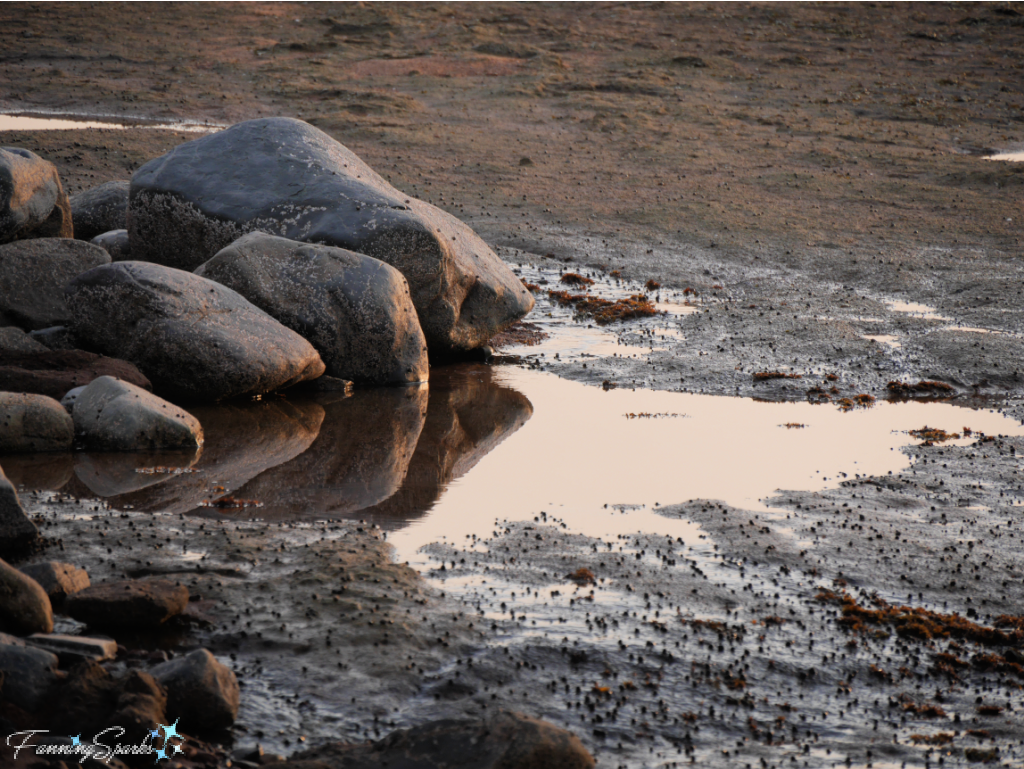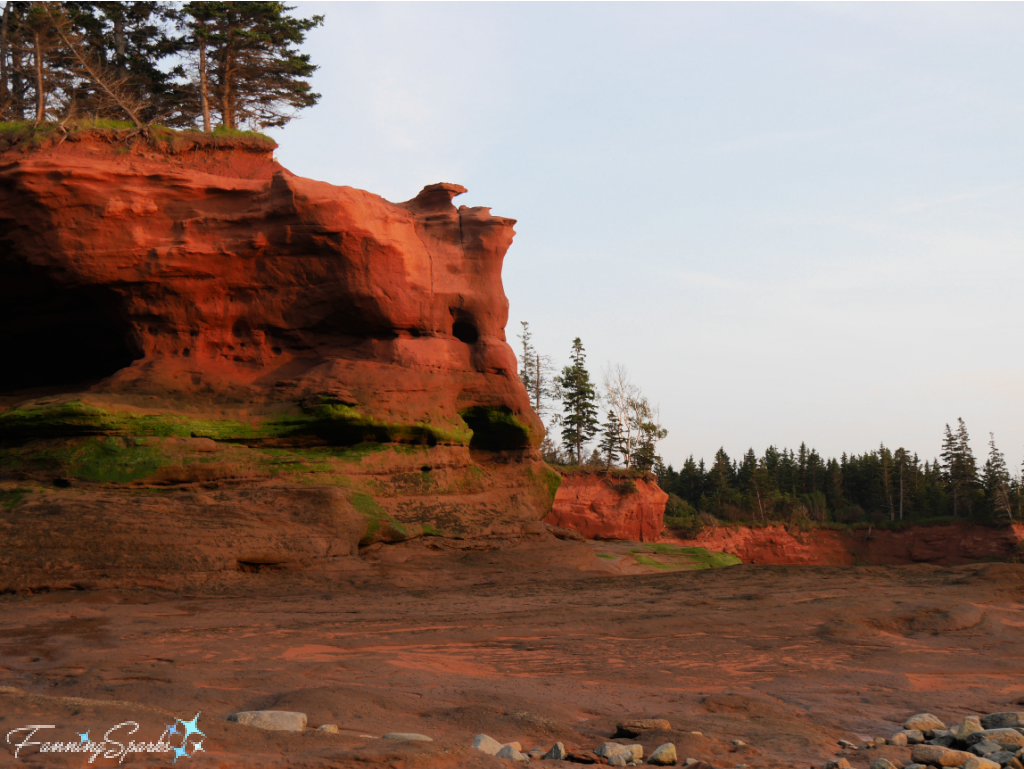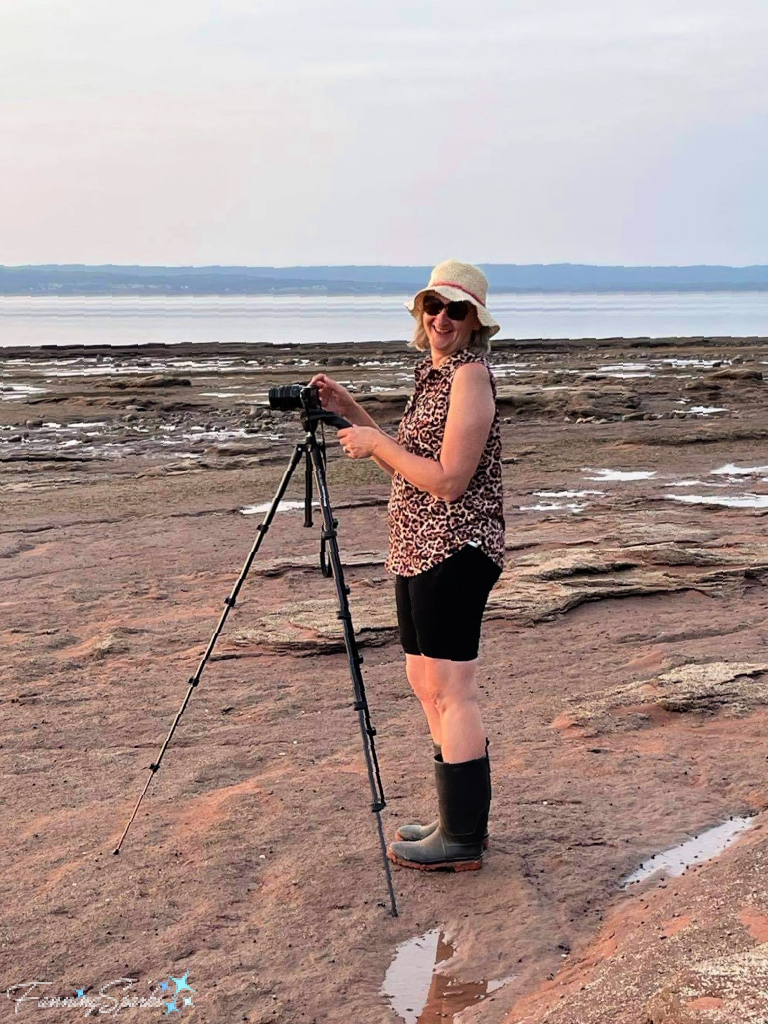Found object assemblage, reclaimed creations or garbage design—whatever you choose to call it—the trend to upcycle, repurpose and transform discarded materials is gaining momentum.
Fans of NBC’s Making It reality crafting show know that this season’s Master Maker excelled at upcycling. In his contestant application, Adam Kingman said “I’m most keen on turning discarded items into something unexpected… something a little useful, almost magical”. He demonstrated several innovative ways to reuse materials in the projects he made during the show. Used climbing ropes, for instance, were repurposed into lampshades, door mats and even furniture. Kingman’s focus on “clever solutions with a sustainable footprint” was cited as one of the reasons he was awarded the top spot.
A recent exhibition at the Chester Art Center in Nova Scotia showcased Johnston Foster’s found object assemblage work. Entitled Olde Growth, this body of work consisted of 9 splendid sculptures.
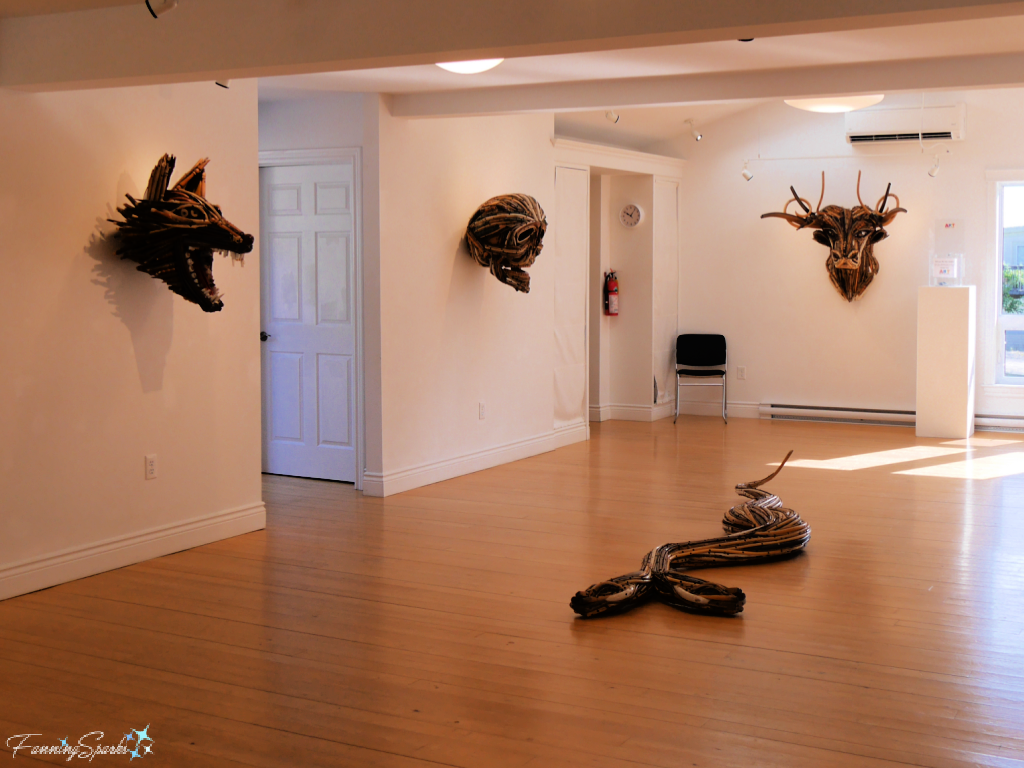
My favorite was this striking work called Maze Cutter.
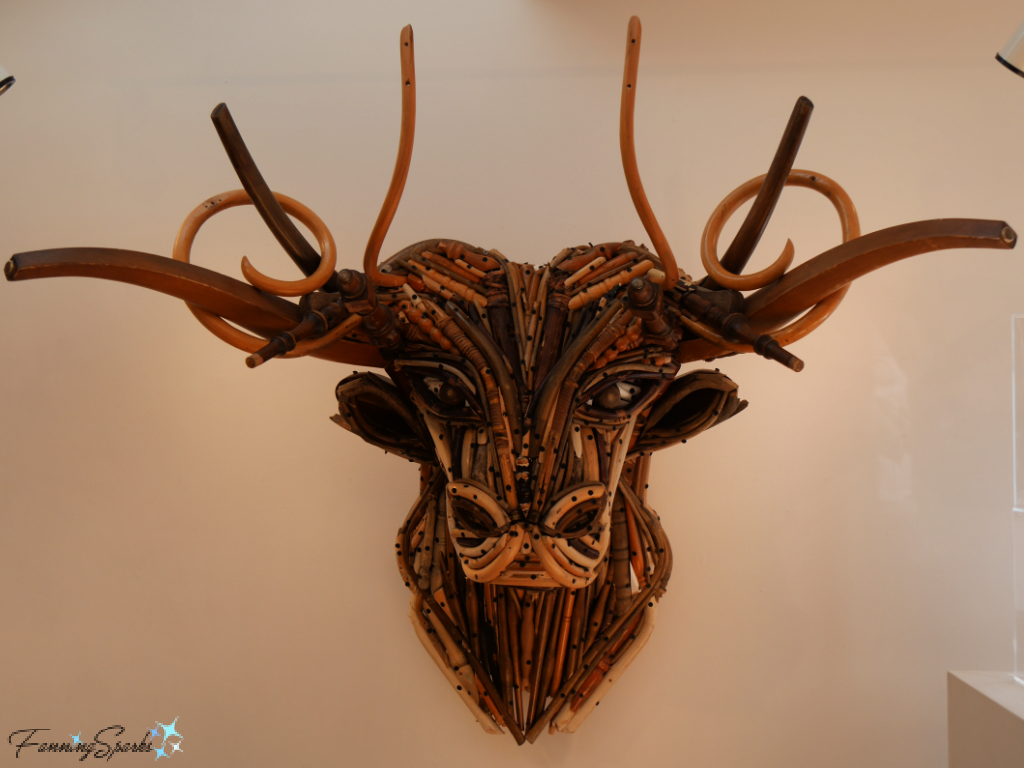
Foster’s Maze Cutter is amazing—the bull is majestic, fierce and intense.
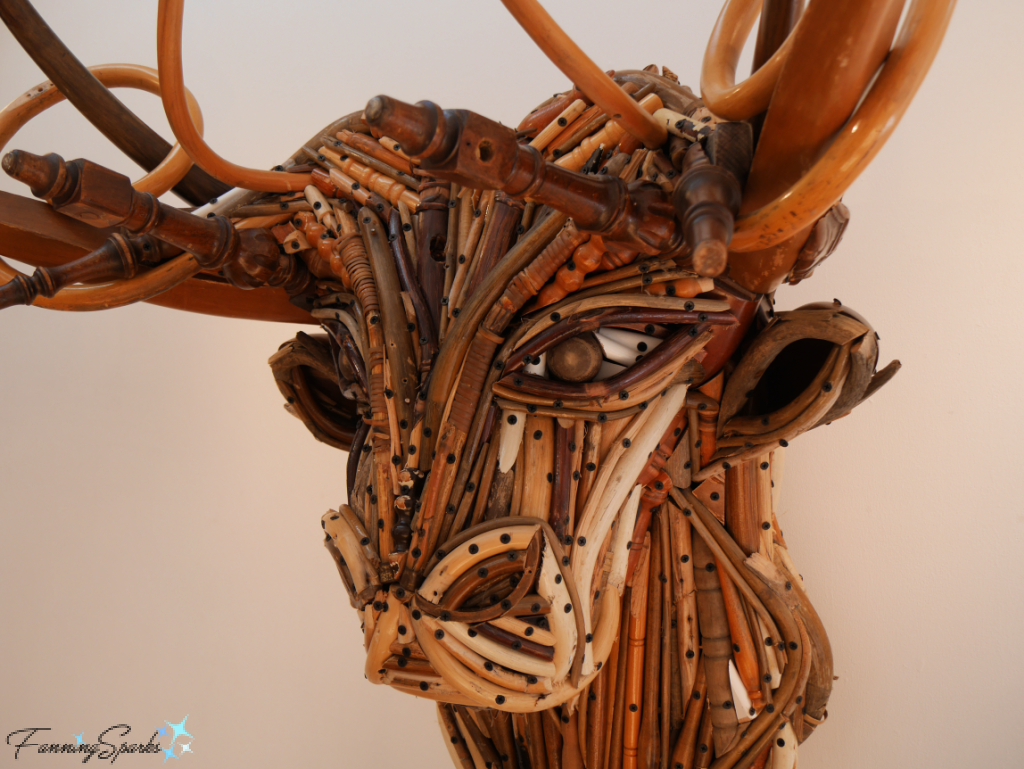
As I looked more closely, an astonishing secret was revealed! The sculpture is made of chair backs, table legs, wooden spindles and various other bits of furniture screwed together with drywall screws.
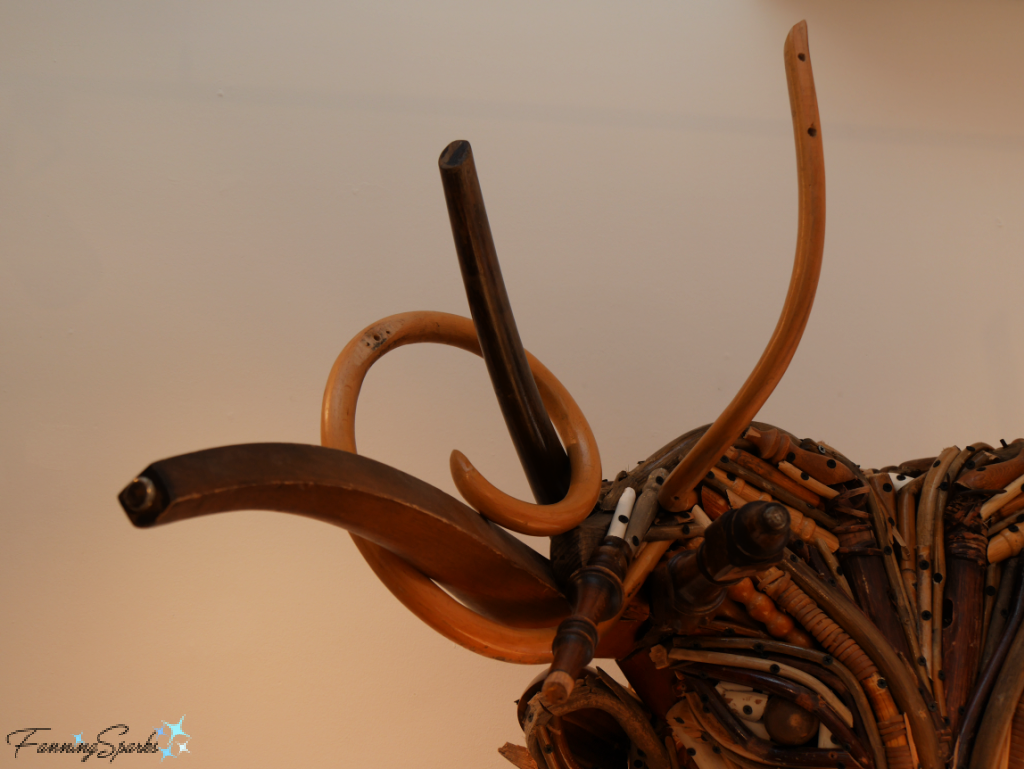
As stated in the exhibition program “Pulling from his immense inventory of salvaged/repurposed objects and materials, Foster has reduced the sculptural medium of his production to a single material: discarded and broken wooden furniture. …His initial attraction to discarded and broken wooden furniture was its abundance and variety in form, texture and malleability. … Foster could not ignore the history, experience and energy each piece of furniture contained”. Here’s a closer look at some of the components incorporated into his works.
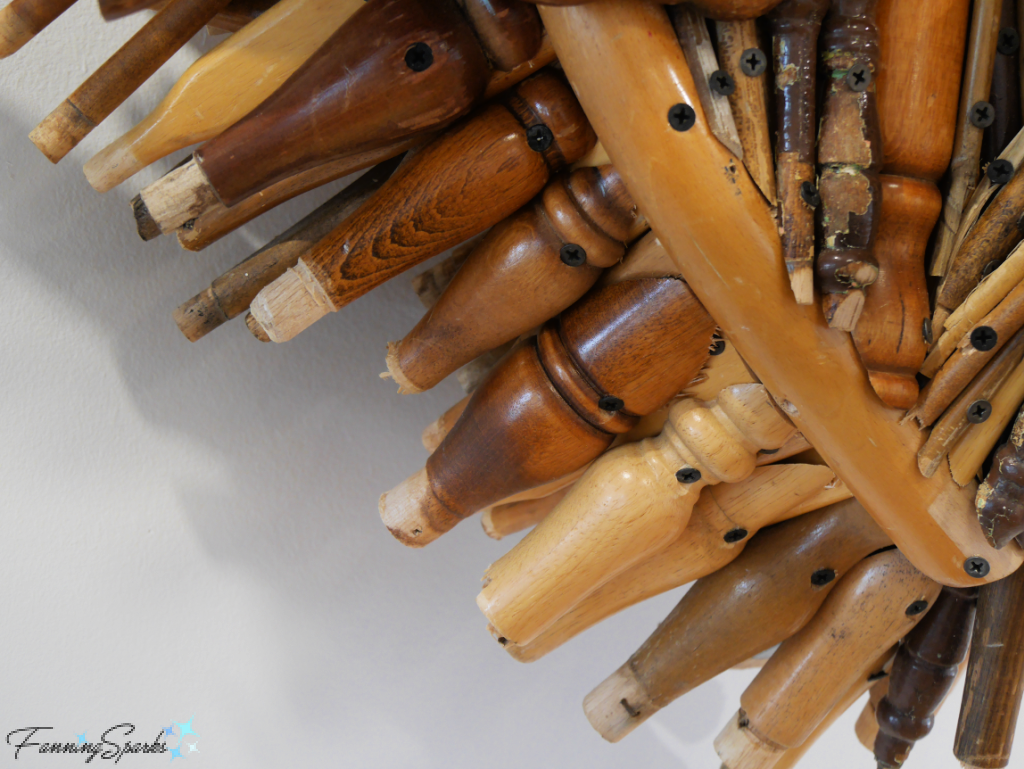
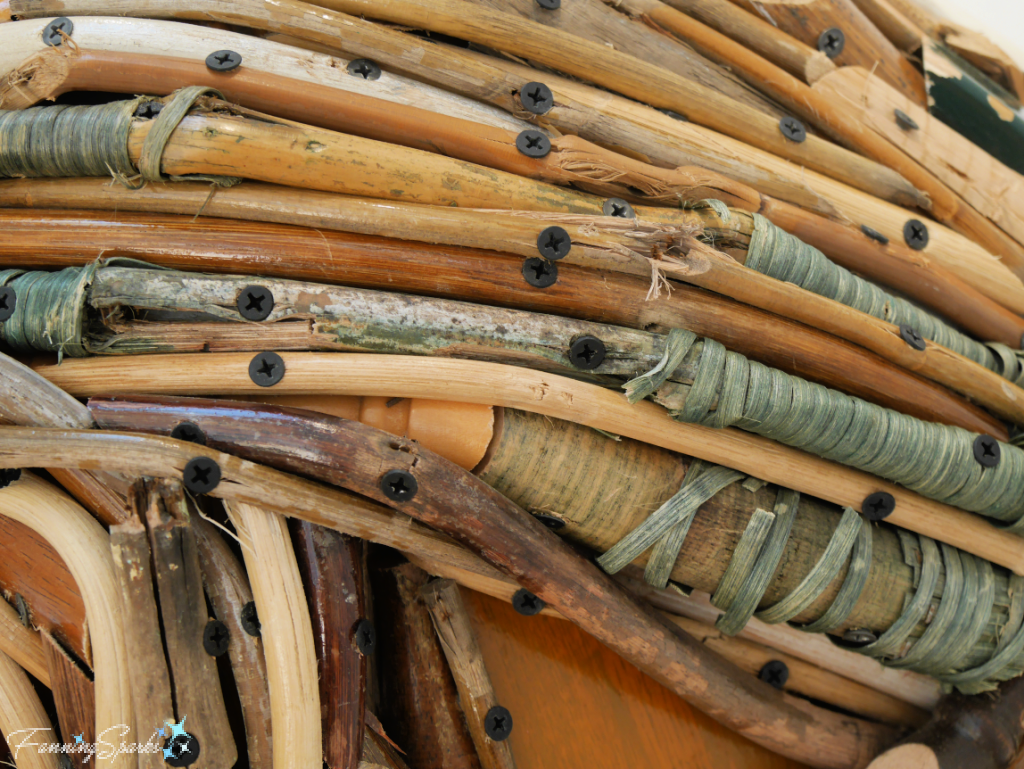
Foster’s reclaimed sculptures were inspired by anatomy, mythology and the animal kingdom. Hindu methodology, for instance, includes Garuda which is a legendary bird or bird-like creature with a mix of eagle and human features. This is Foster’s Garuda.

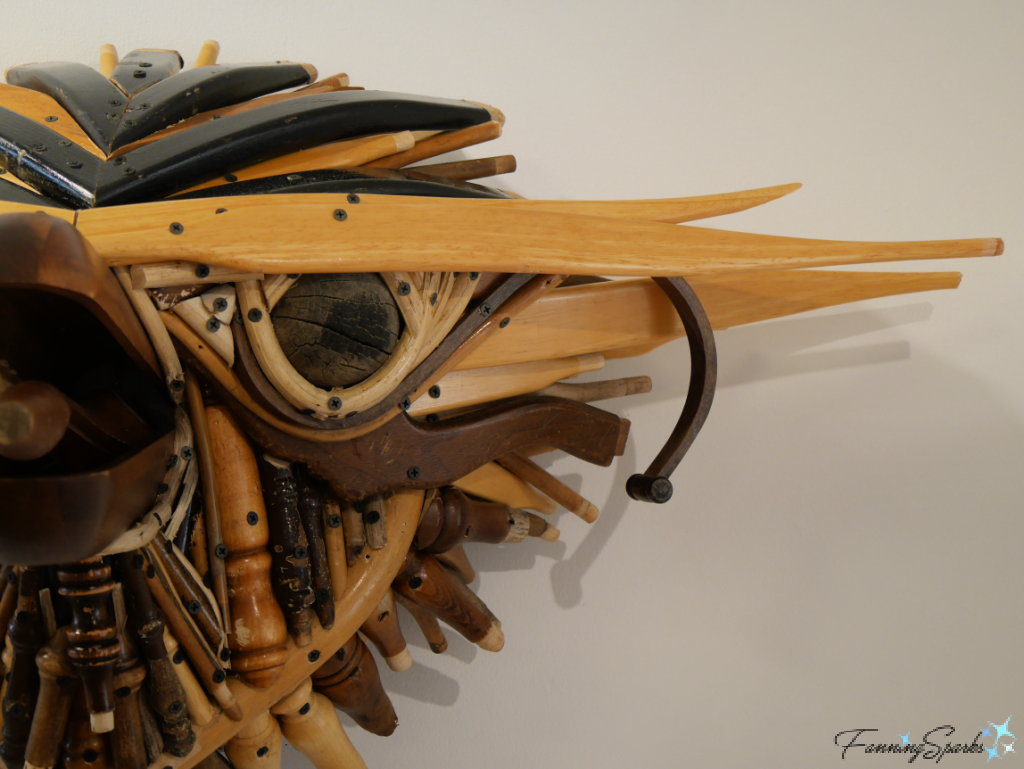
El-ahrairah is a rabbit folk hero from Richard Adams’ book Watership Down. This is Foster’s sculpture El Ahrairah.
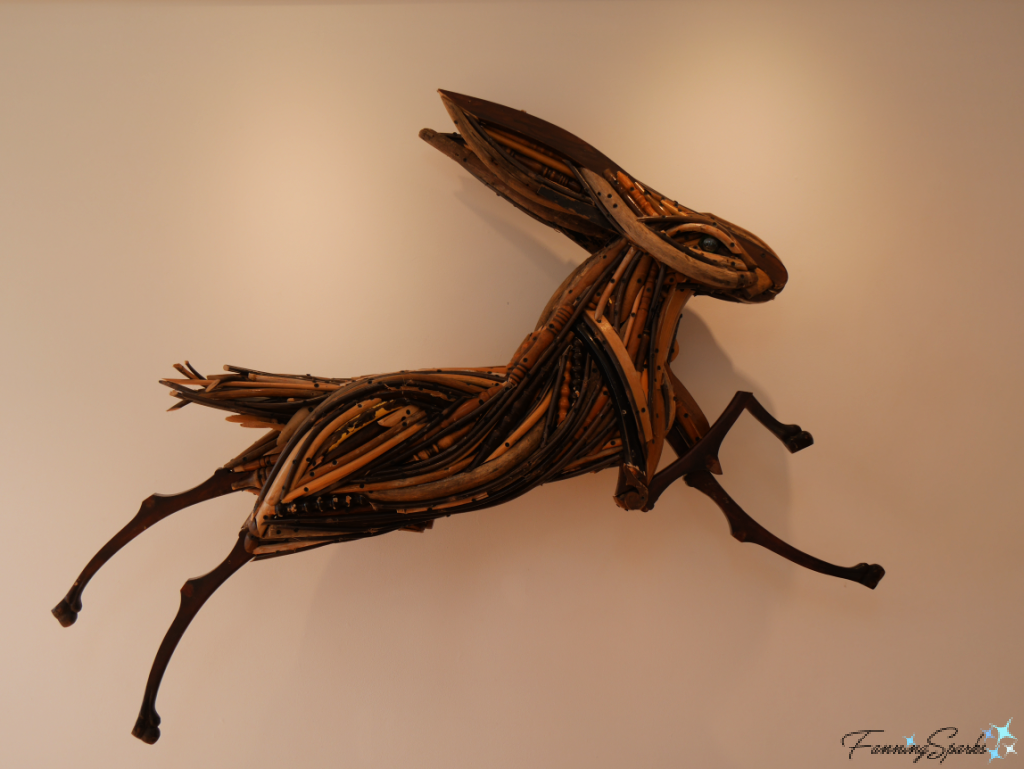
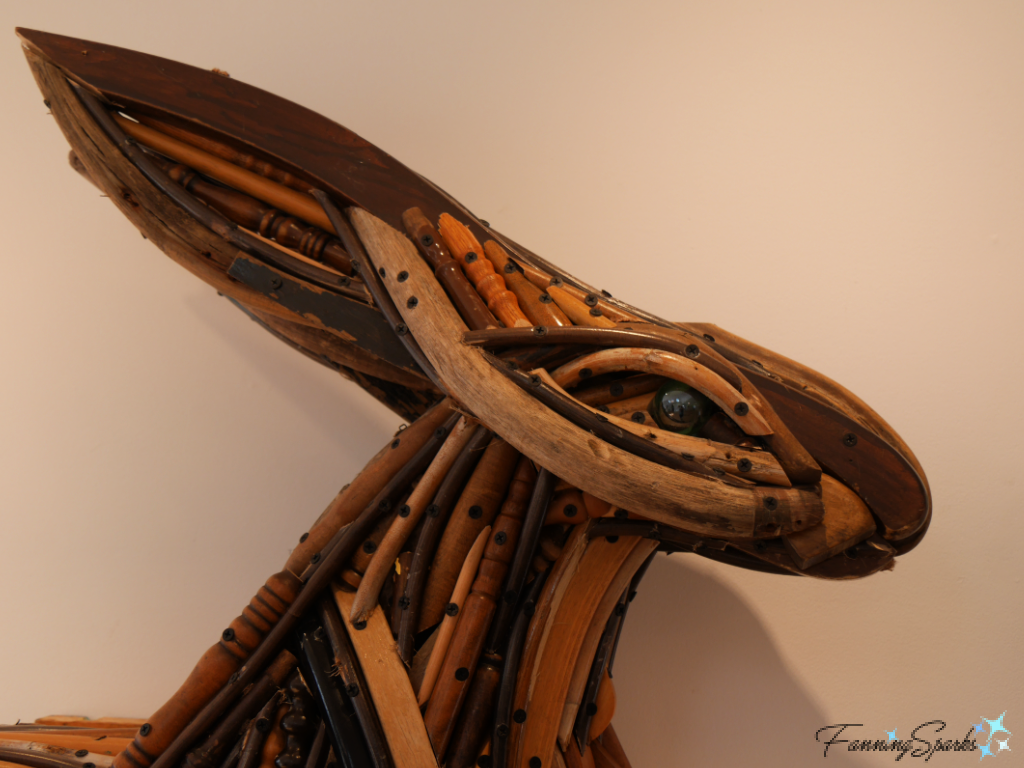
Fenrir is the most infamous of the many wolves in Norse mythology. According to author Daniel McCoy, Fenrir ran “throughout the world with his lower jaw against the ground and his upper jaw in the sky, devouring everything in his path”. This ferocious sculpture is Foster’s The Fenrir.
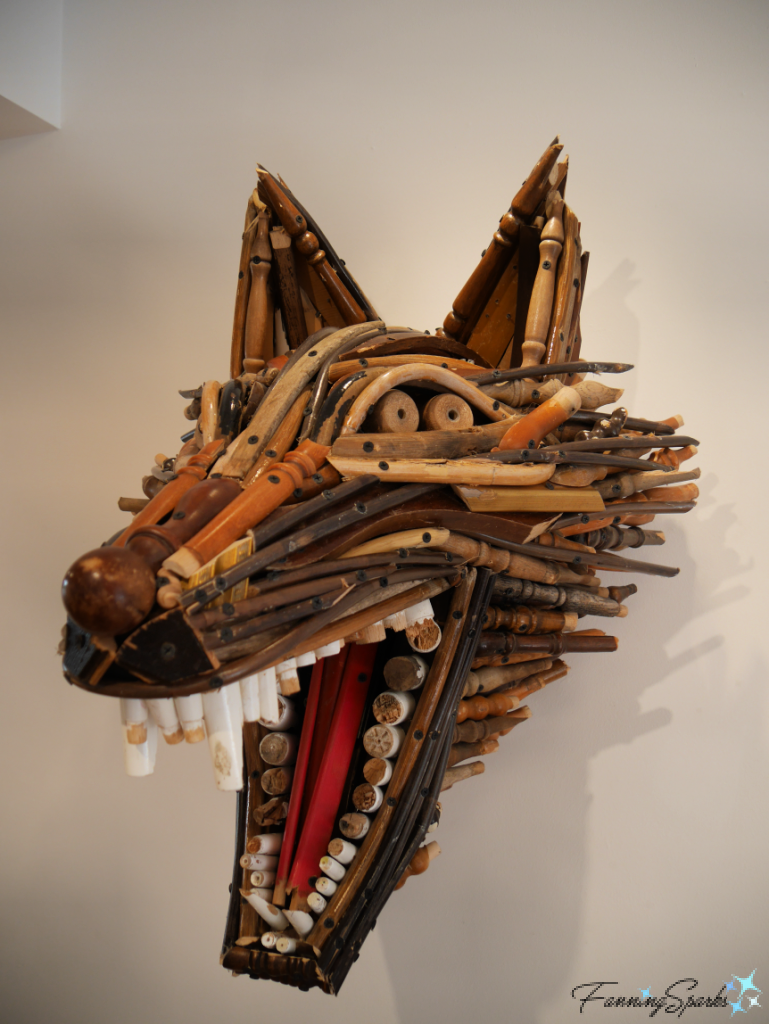
It’s fascinating to see broken furniture transformed into stunning sculptures but there’s a deeper message to be considered. As explained in his artist statement, “Foster’s material of choice and in turn his creations reflect on our environmental cross roads, globalization, notions of craft and the consequences of uninhibited consumerism. These assemblages are meant to inspire a sense of magic and wonder but also offer critical self-reflection.” Perhaps this is the message behind his piece called The Fork in the Road. This 10-foot long, two-headed snake was displayed in the center of the gallery floor.
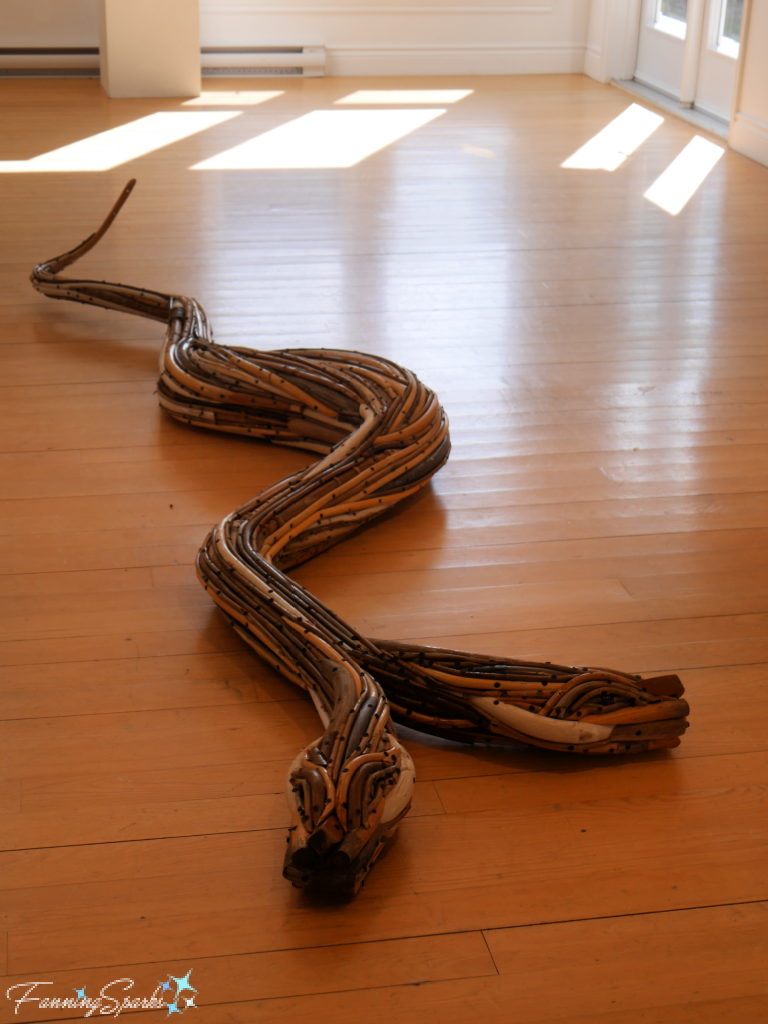
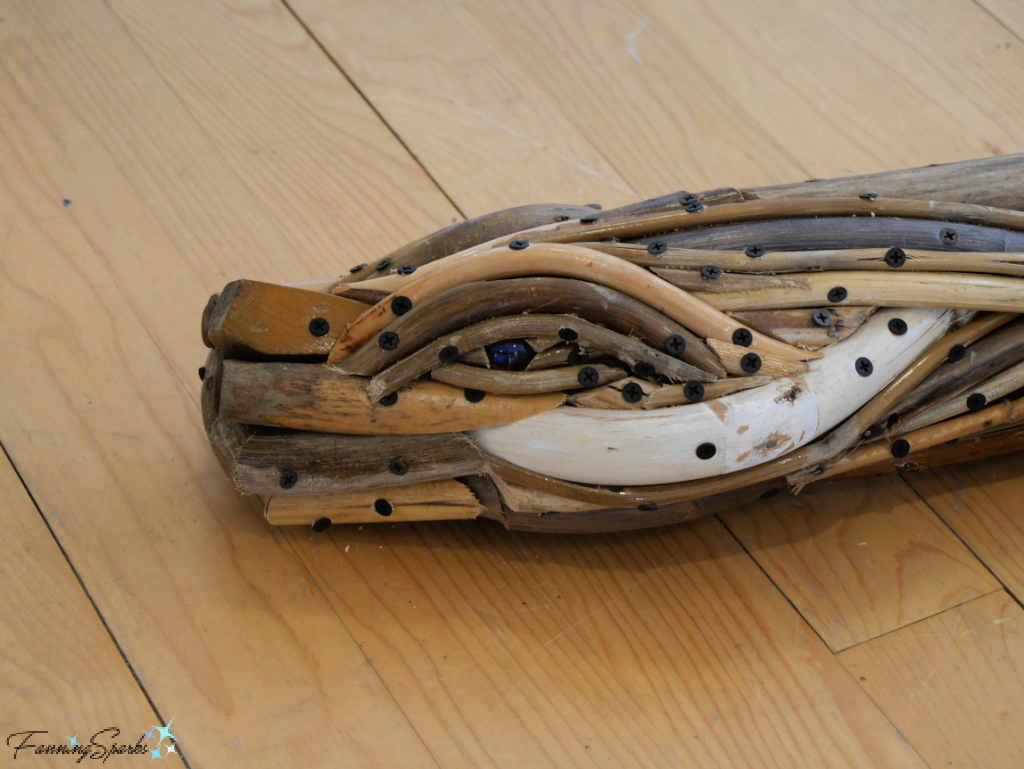
Some time ago, I had the opportunity to view a similar exhibition of reclaimed creations. Artist Sayaka Ganz’s working material of choice was discarded plastic. Her artist statement explained “I use plastics because of the variety of curvilinear forms and colors that are available. I manipulate and assemble them together as brush strokes to create an effect similar to a van Gogh painting but in three-dimensional form.”
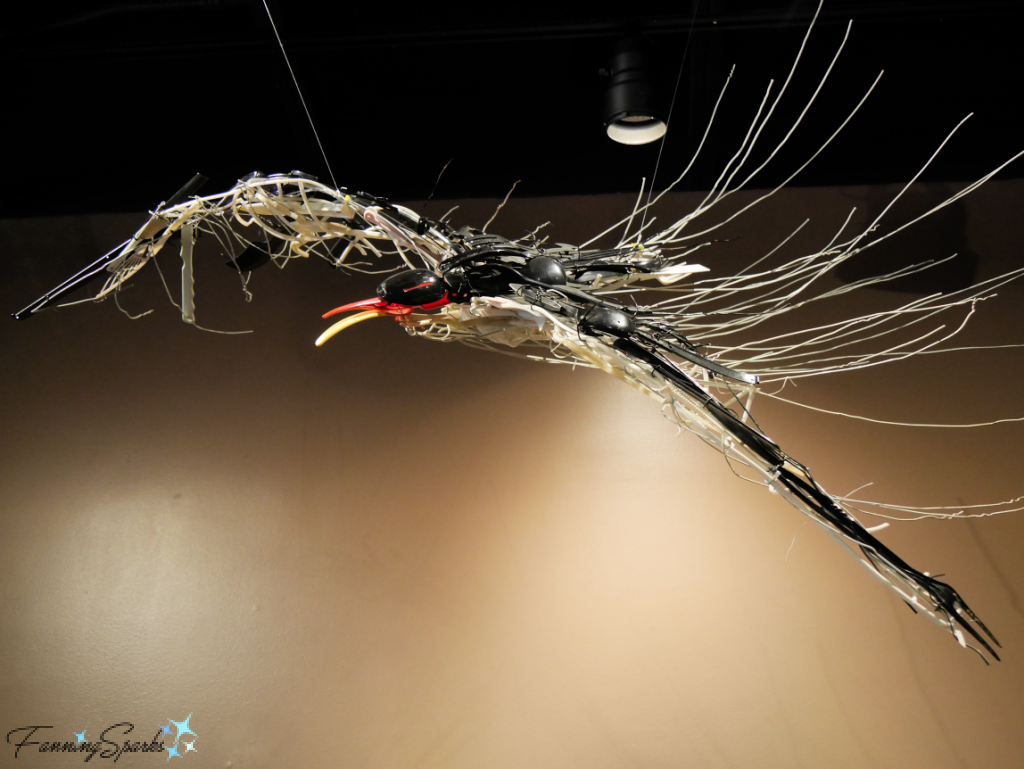
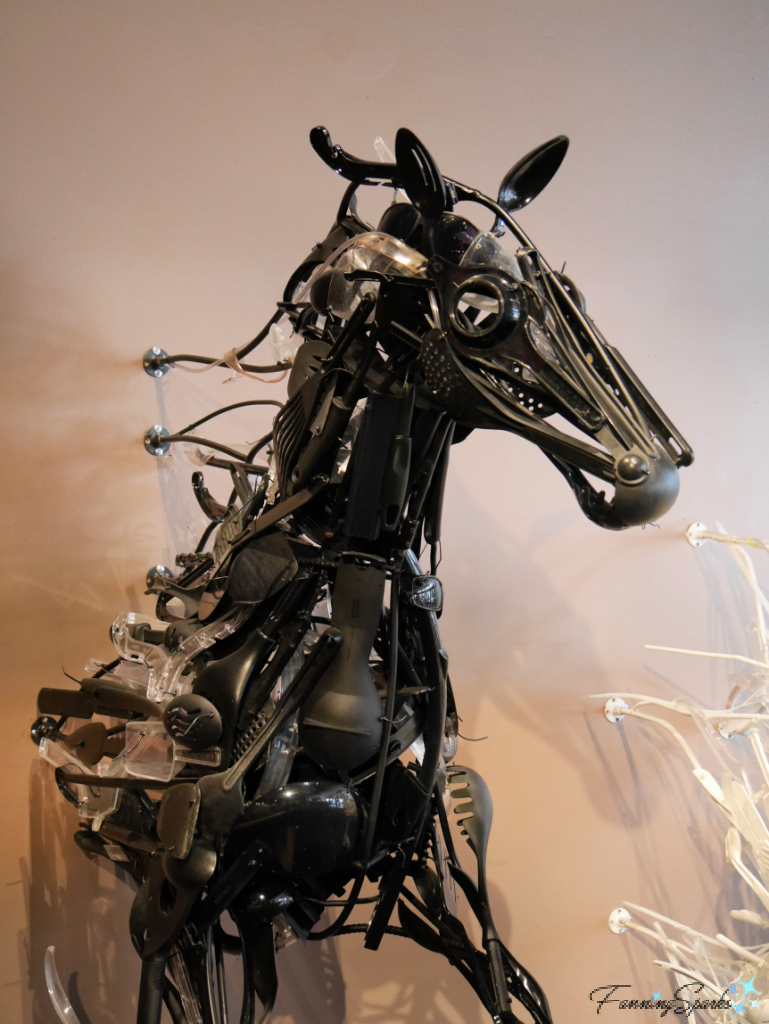
This artist has a unique connection with the reclaimed materials she uses for her sculptures. “From a young age, Sayaka Ganz was influenced by the Japanese Shinto belief that all objects and organisms have spirits, and if these objects are discarded before their time they weep inside the trash bin. This idea is the foundation that has shaped Sayaka and her sculptures. Her strong artistic voice is expressed through her exclusive use of objects that have been discarded. … She finds the process of reclamation and regeneration liberating.” A closer look reveals the secret of Sayaka Ganz’s work.
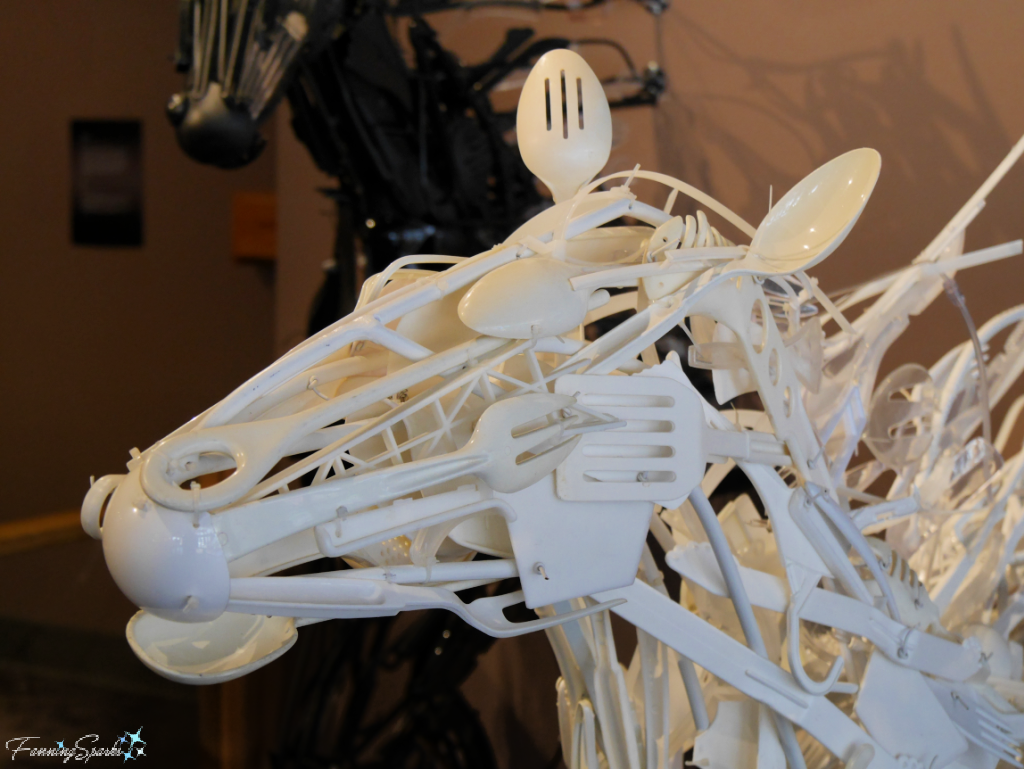
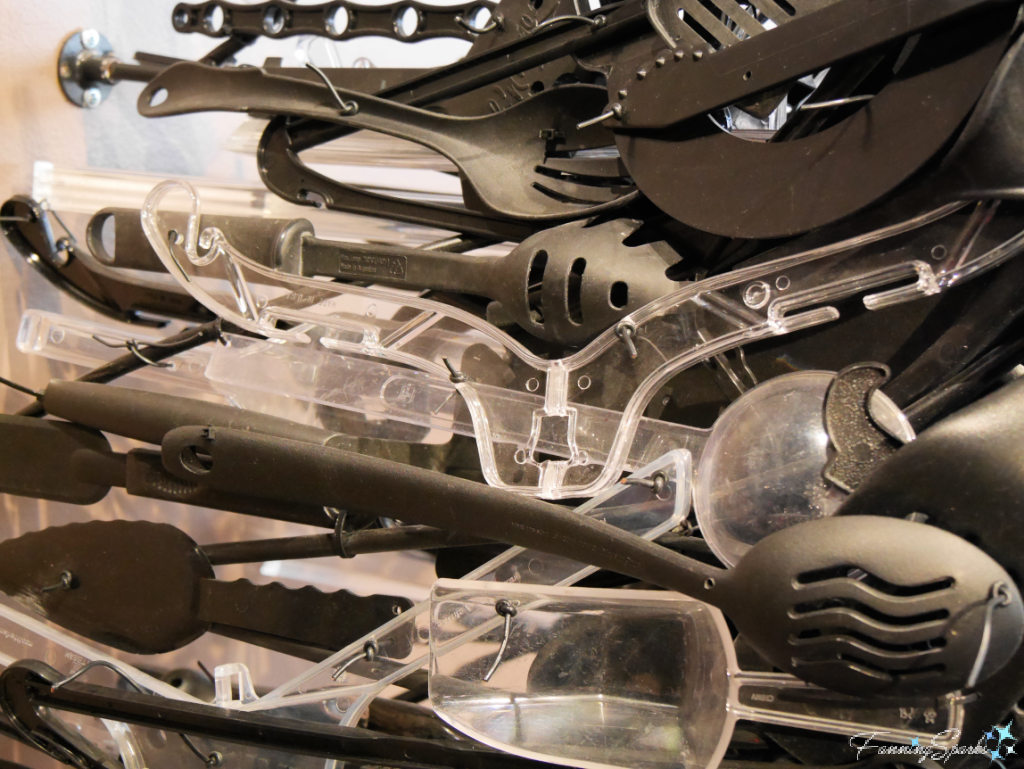
Circling back to NBC’s Making It winner, Adam Kingman presents this thought-provoking challenge under Garbage Design on his website: “How can we raise awareness of what we throw in the garbage? Furthermore, can we take a surplus of unexpected, single use items, and create a positive conversation starter? Our planet is riddled in garbage and plastic. I’ve designed outdoor gear for the past five years and have come to realize very few of us need more of anything. We already have what we really need. On a long drive through West Texas, I was upset with the rubbish strewn across the landscape. What’s the fate of this garbage? the planet? our outlook on it all?”
More Info
Finding new ways to use old, discarded materials is an ongoing theme here on FanningSparks’ blog. I’ve decided to add a new REPURPOSE sub-category in the MAKE section. Check it out to see all my blog posts which share ideas for transforming, upcycling and repurposing.
NBC’s Making It is a lighthearted competition series, hosted by Amy Poehler and Nick Offerman, which celebrates the creativity and craftiness in all of us. You can learn more about Adam Kingman, season 3 Master Maker, on his website or Instagram account.
Johnston Foster is an American artist living in Bedford, Nova Scotia. Check out his website and Instagram account. His exhibition, Olde Growth, was hosted by the Chester Art Center in Nova Scotia.
Sayaka Ganz was born in Japan and grew up living in Japan, Brazil and Hong Kong. You can learn more on her website or Instagram account.
Today’s Takeaways
.1. “These assemblages are meant to inspire a sense of magic and wonder but also offer critical self-reflection.”
.2. Consider the “consequences of uninhibited consumerism”.
.3. Look for ways to use old, discarded materials.


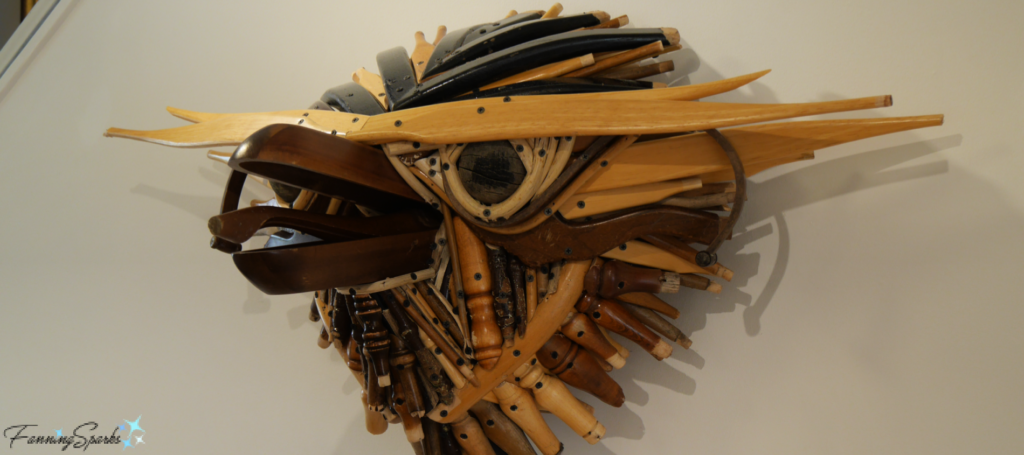

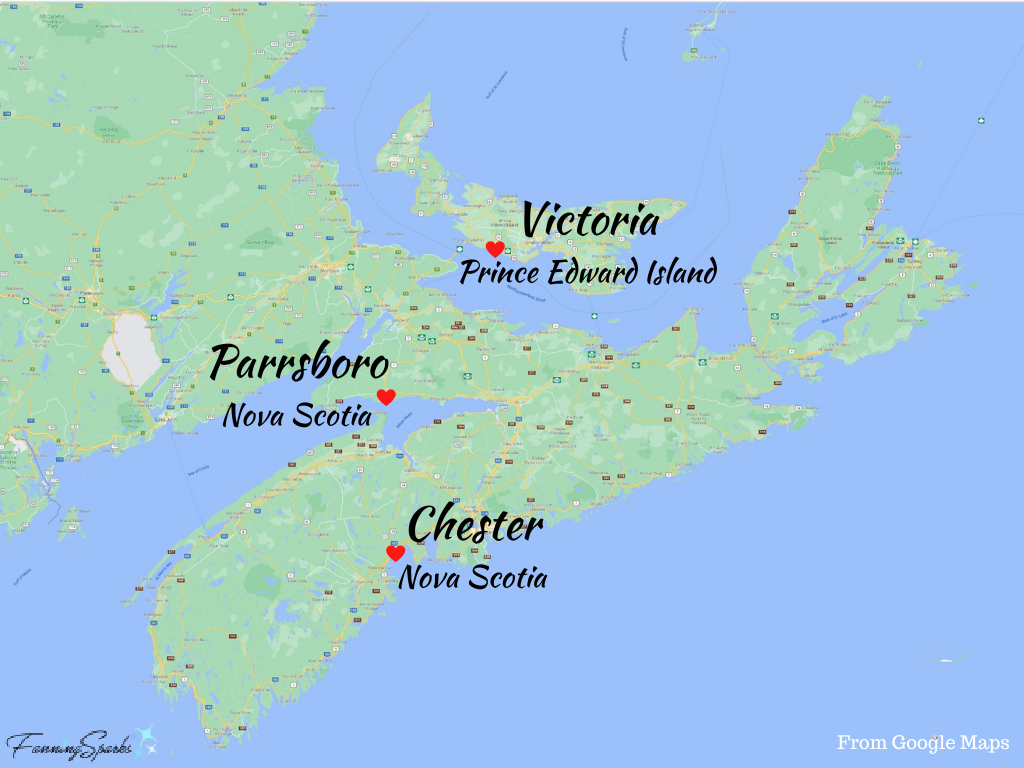
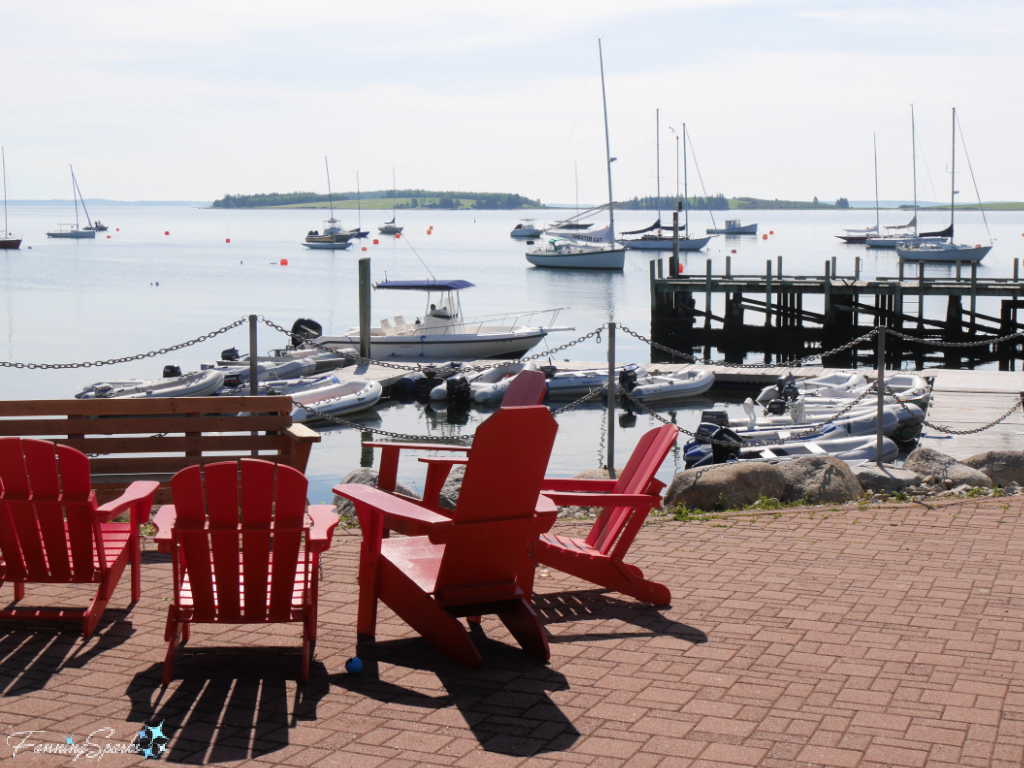
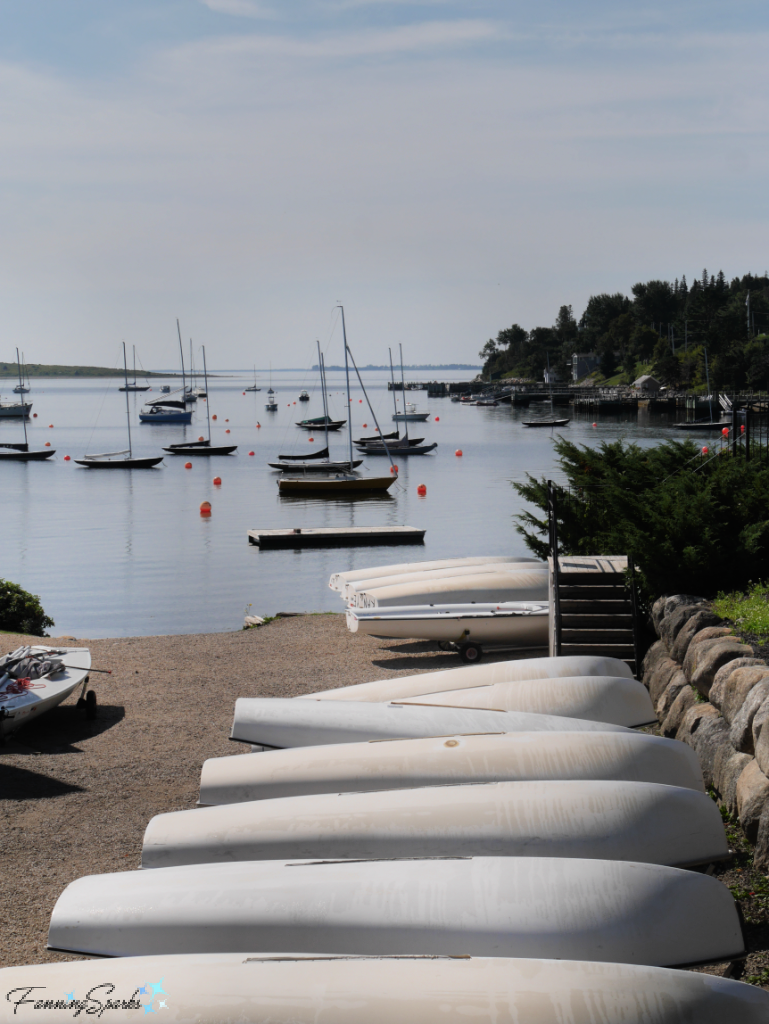
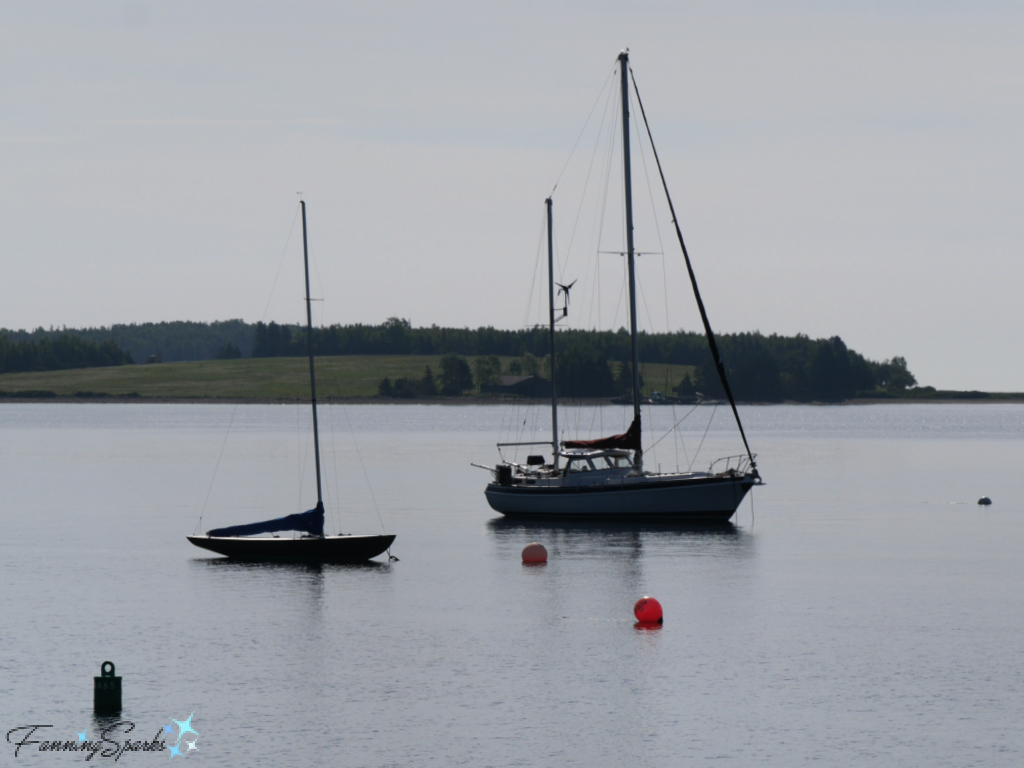
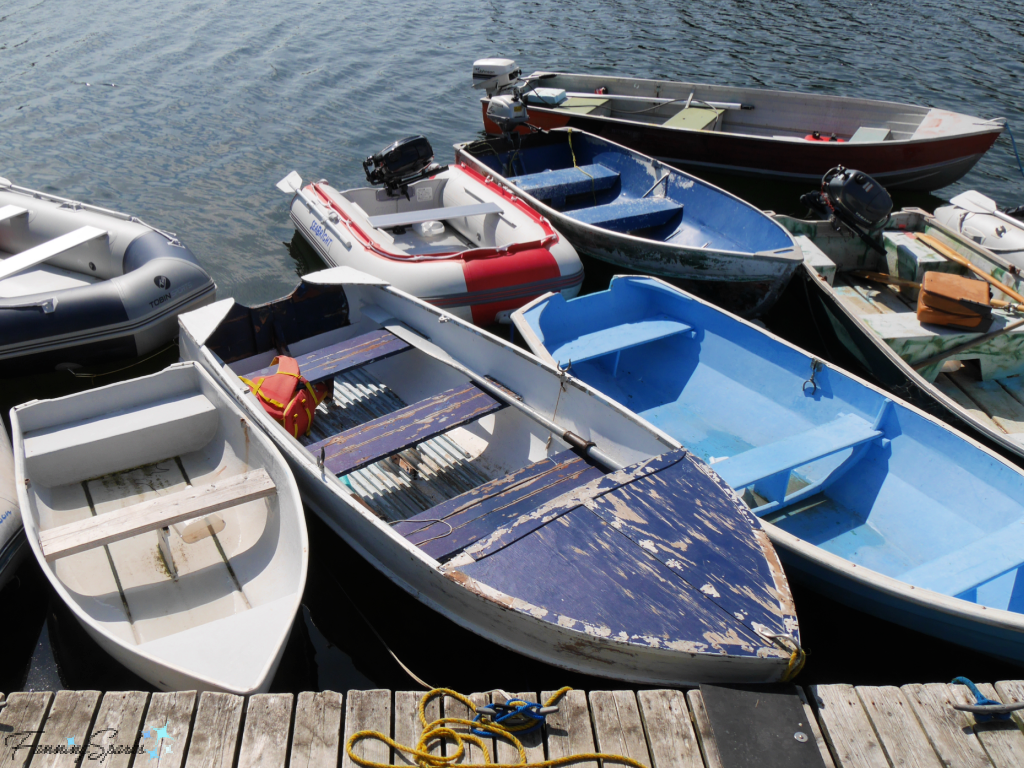
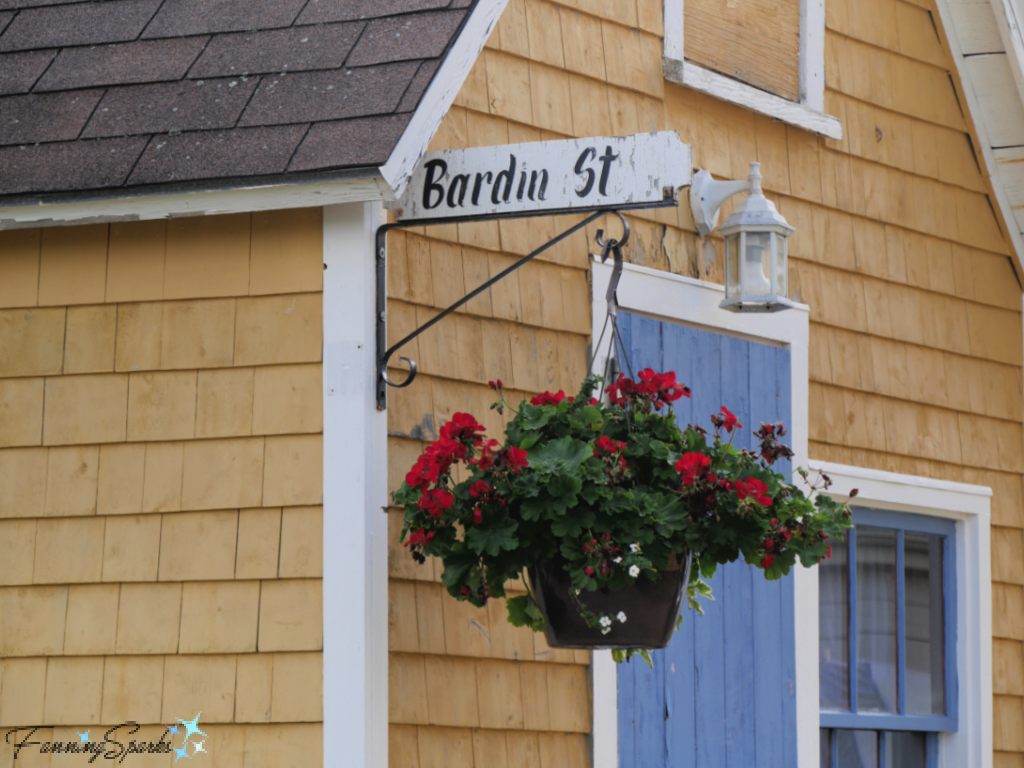
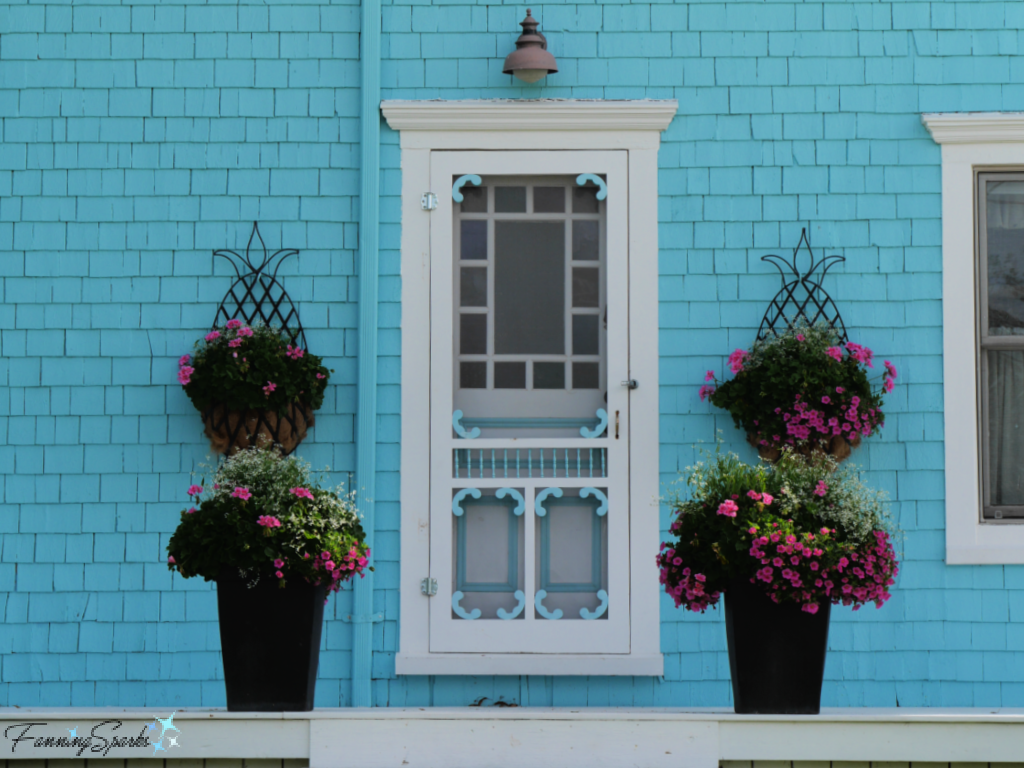
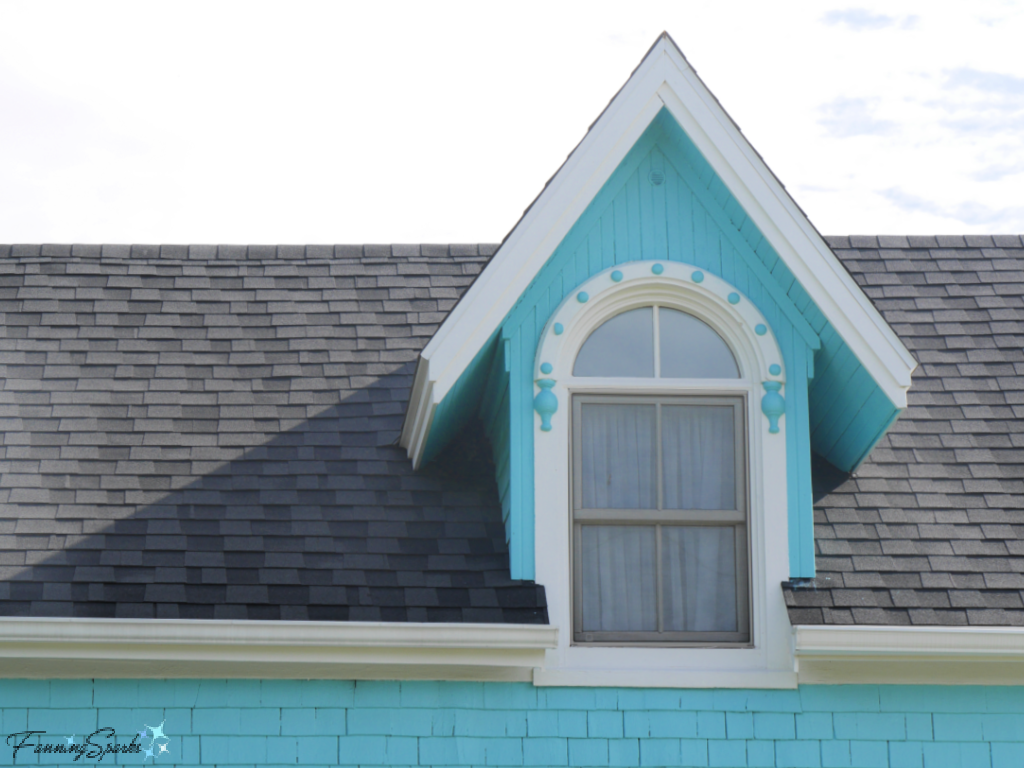
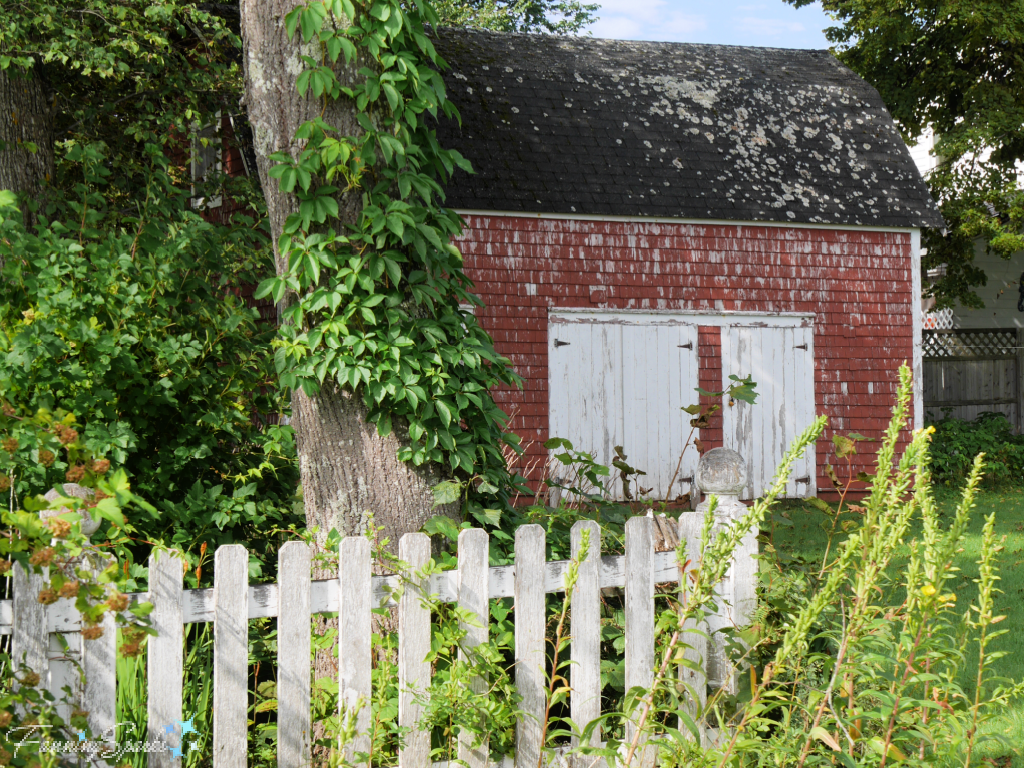
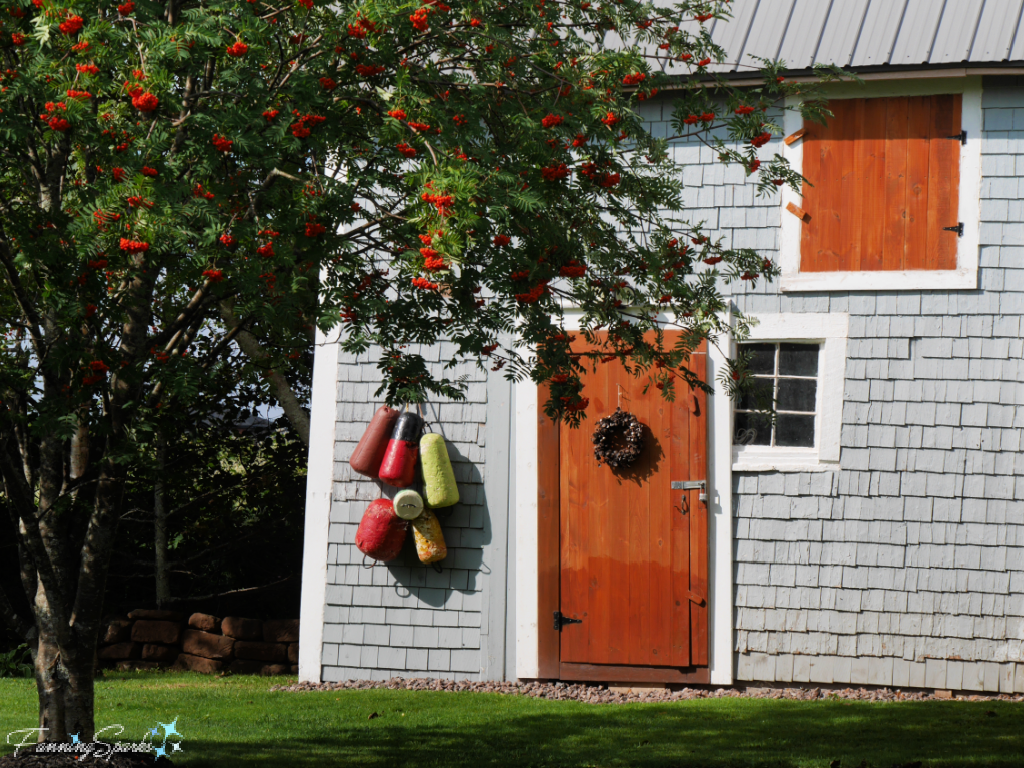
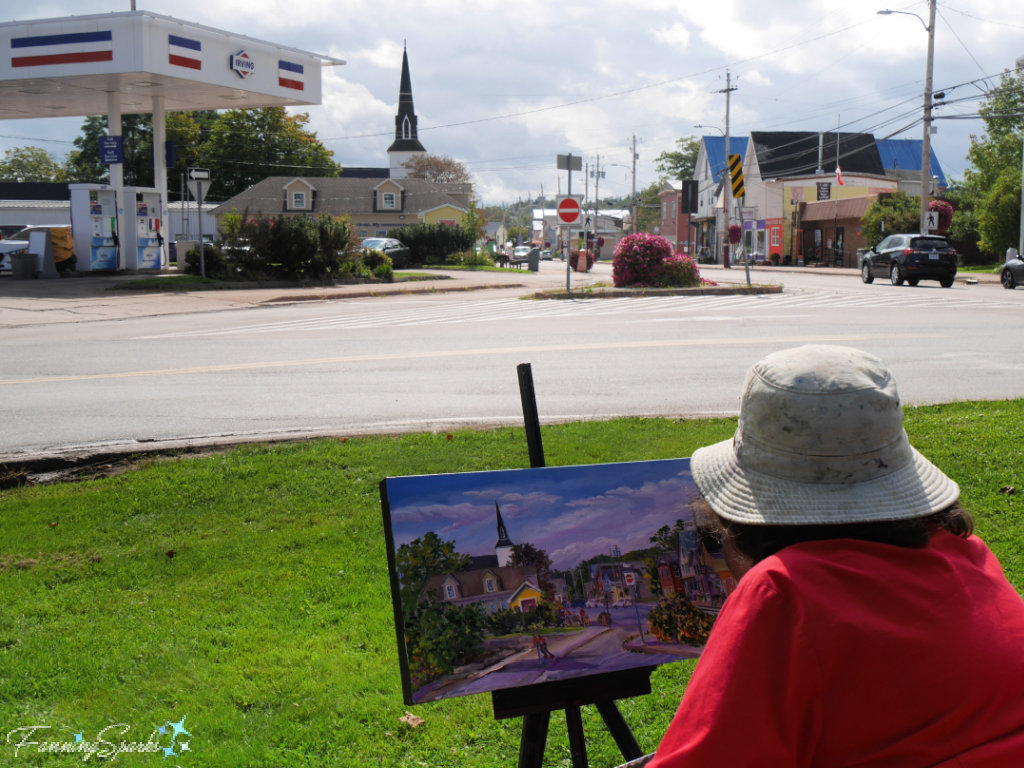
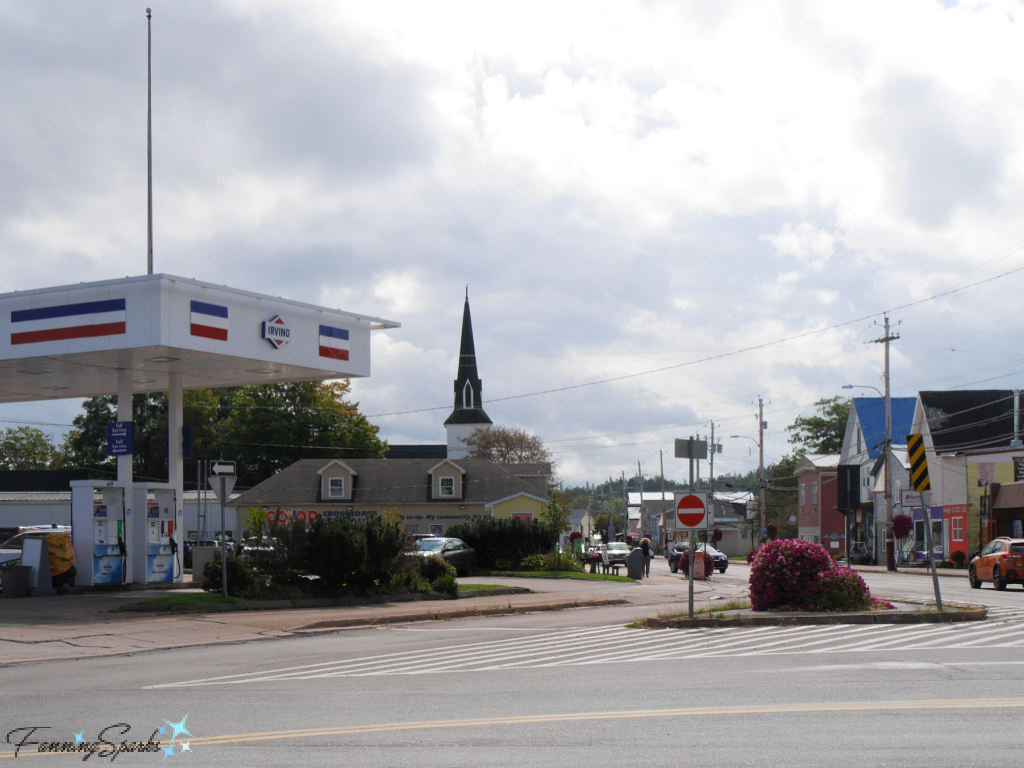
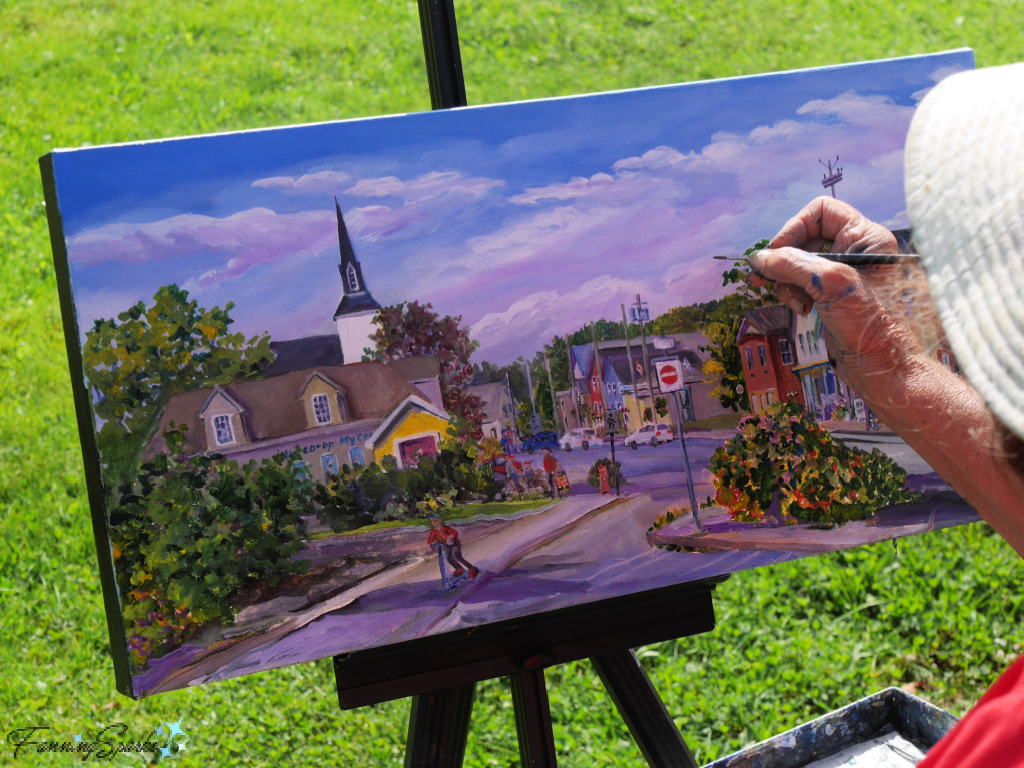

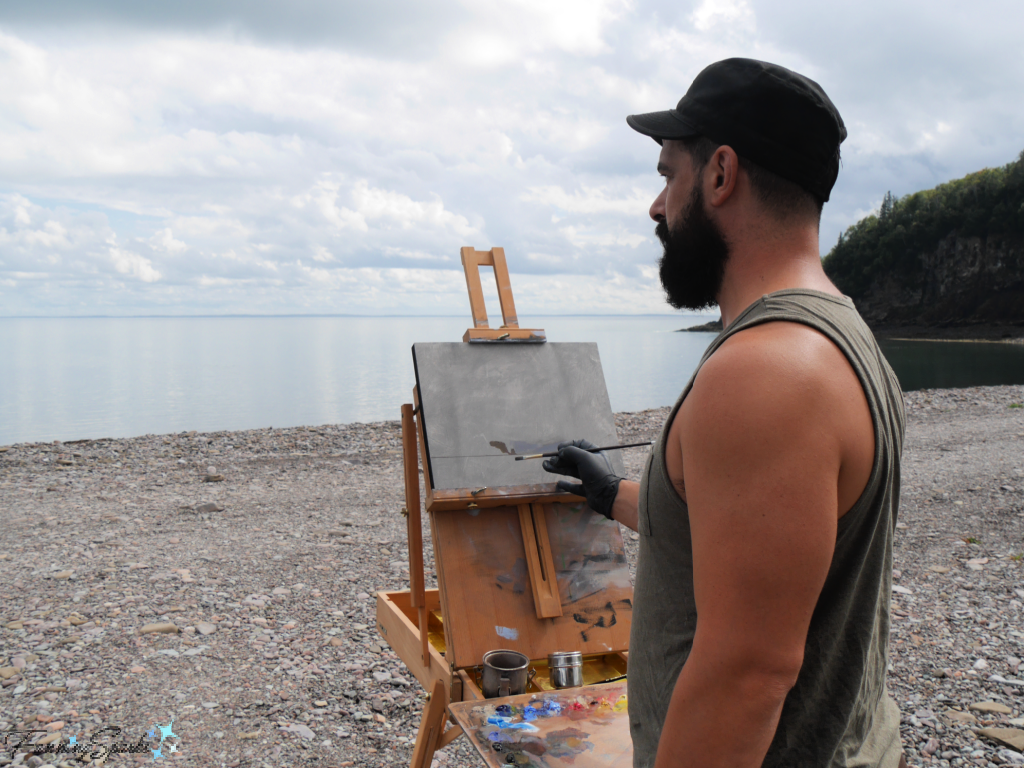
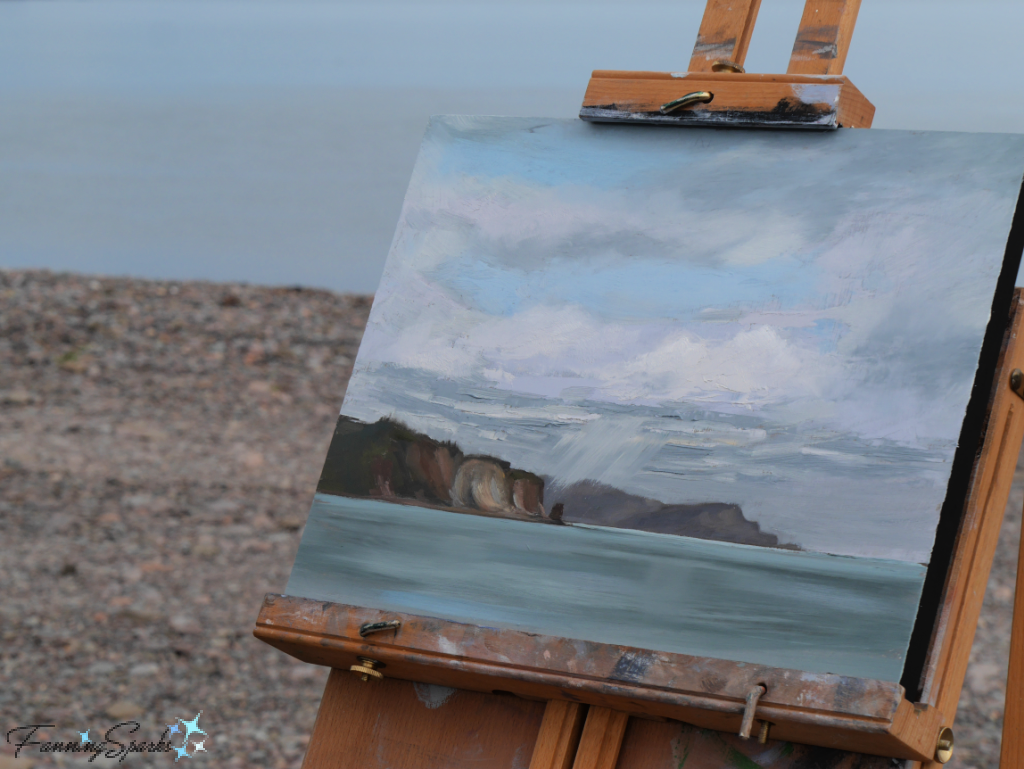
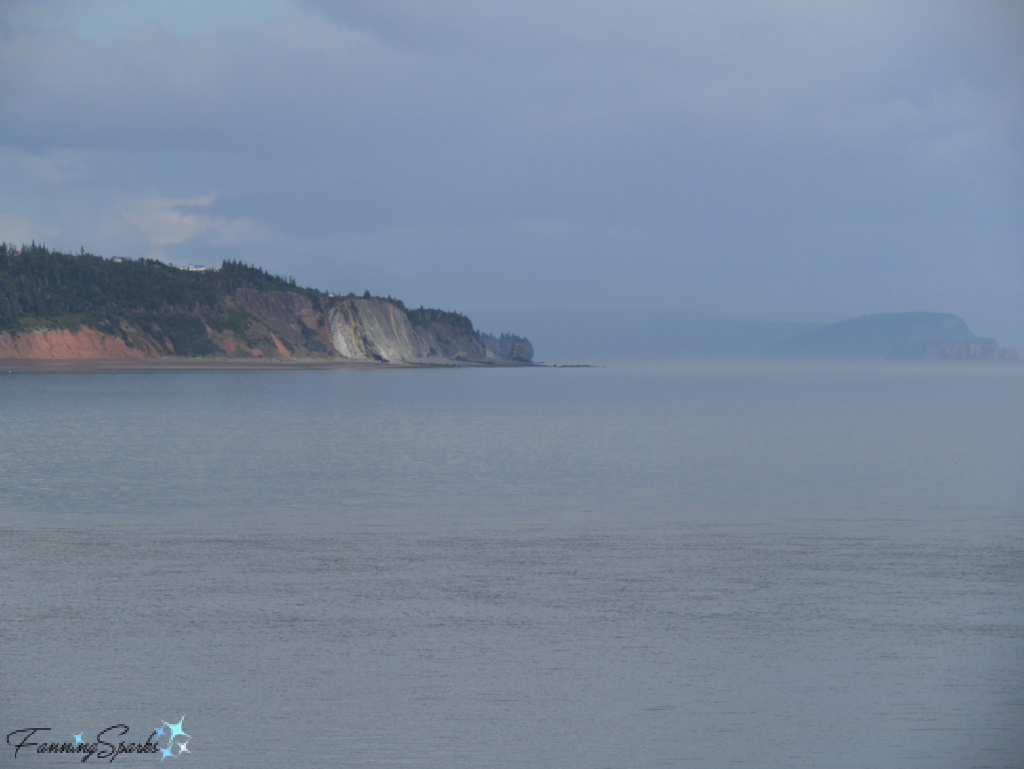
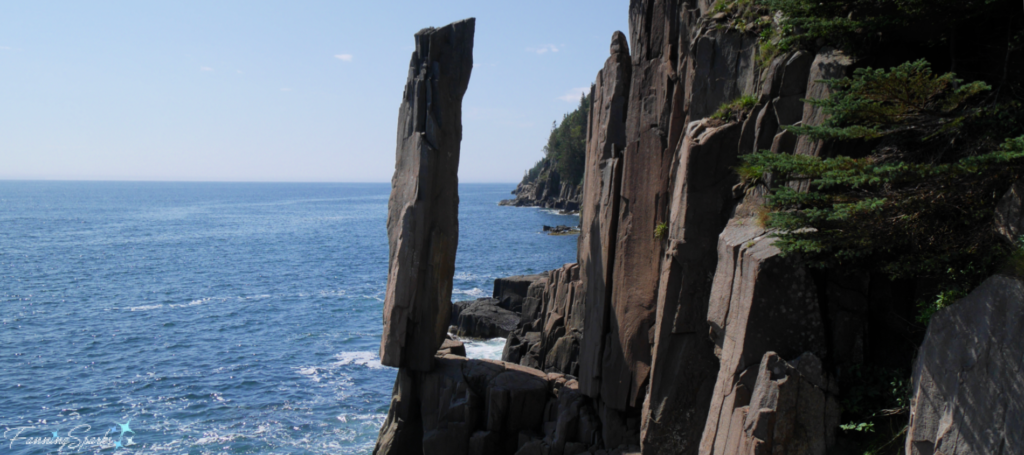

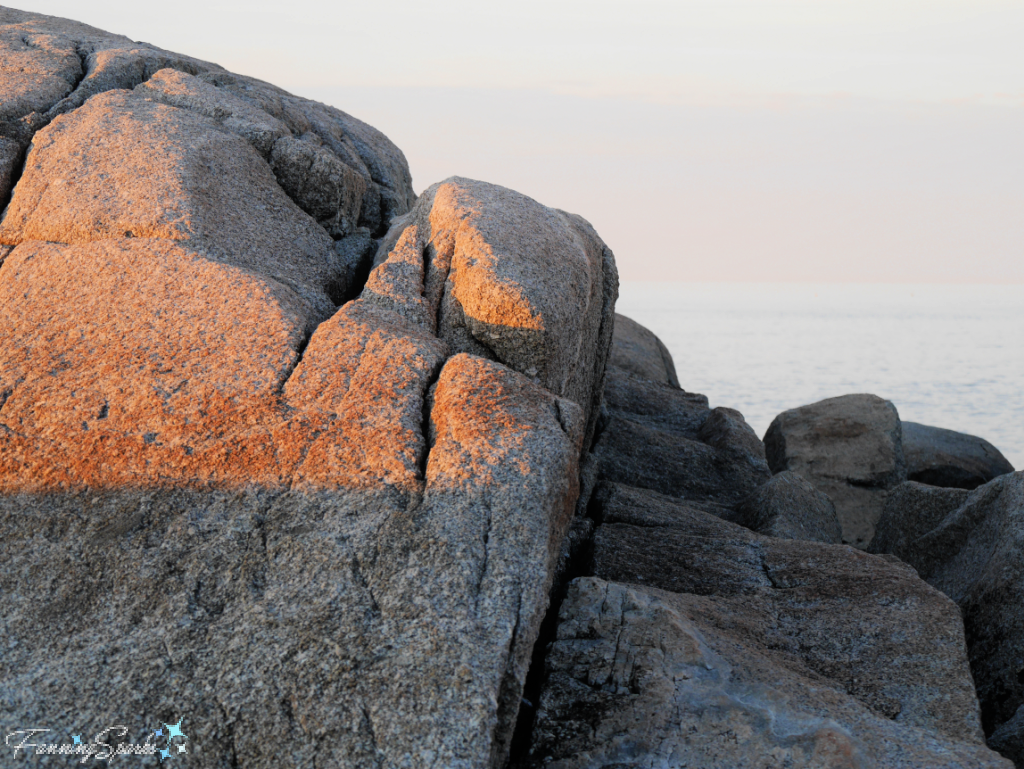
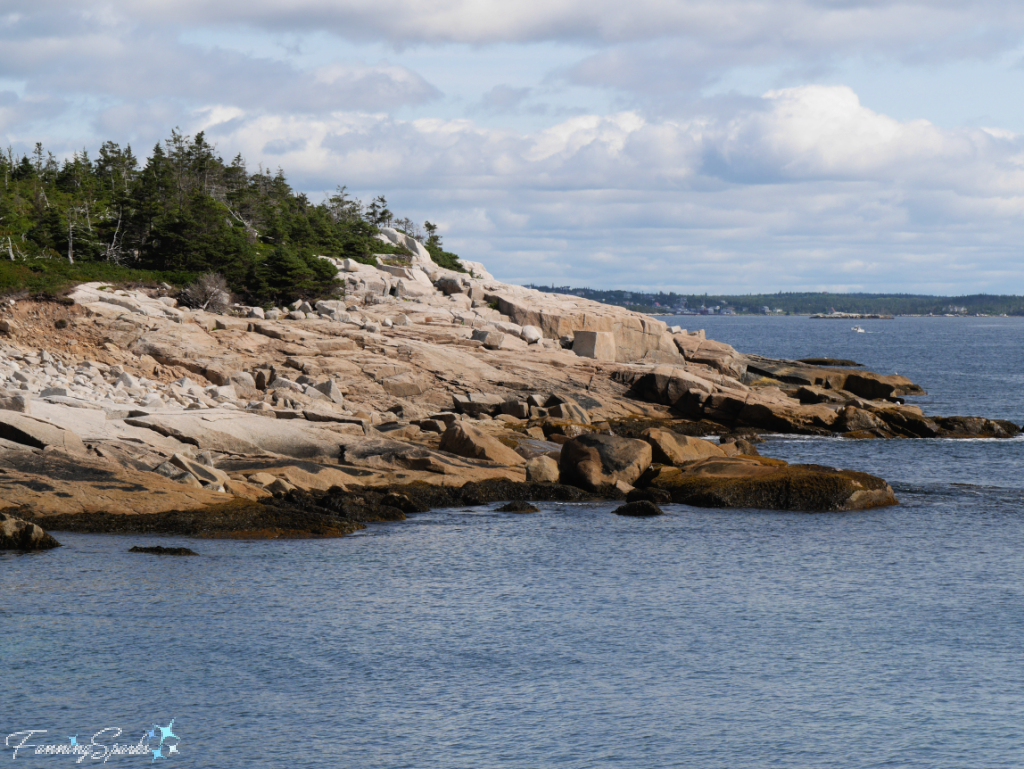
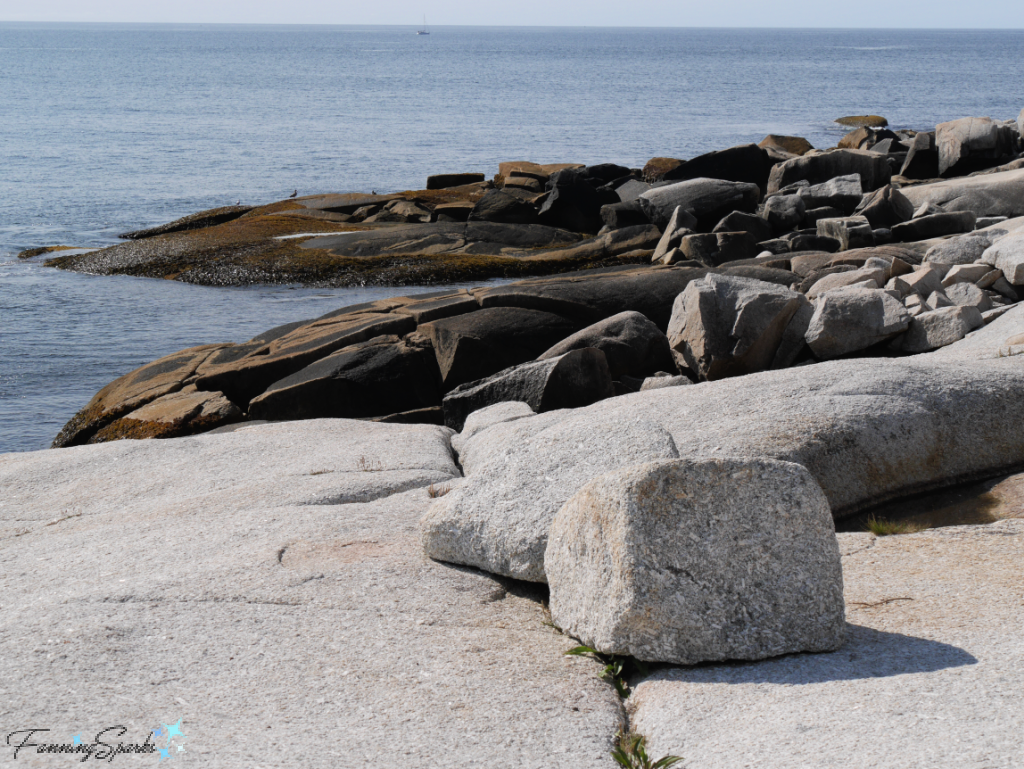
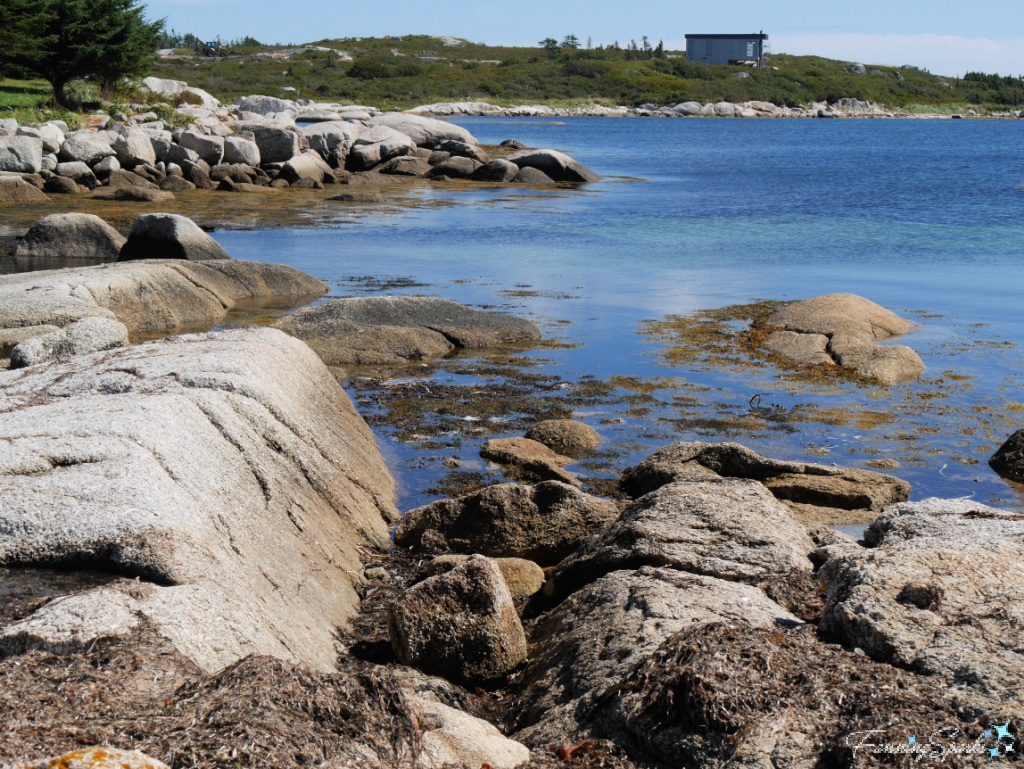
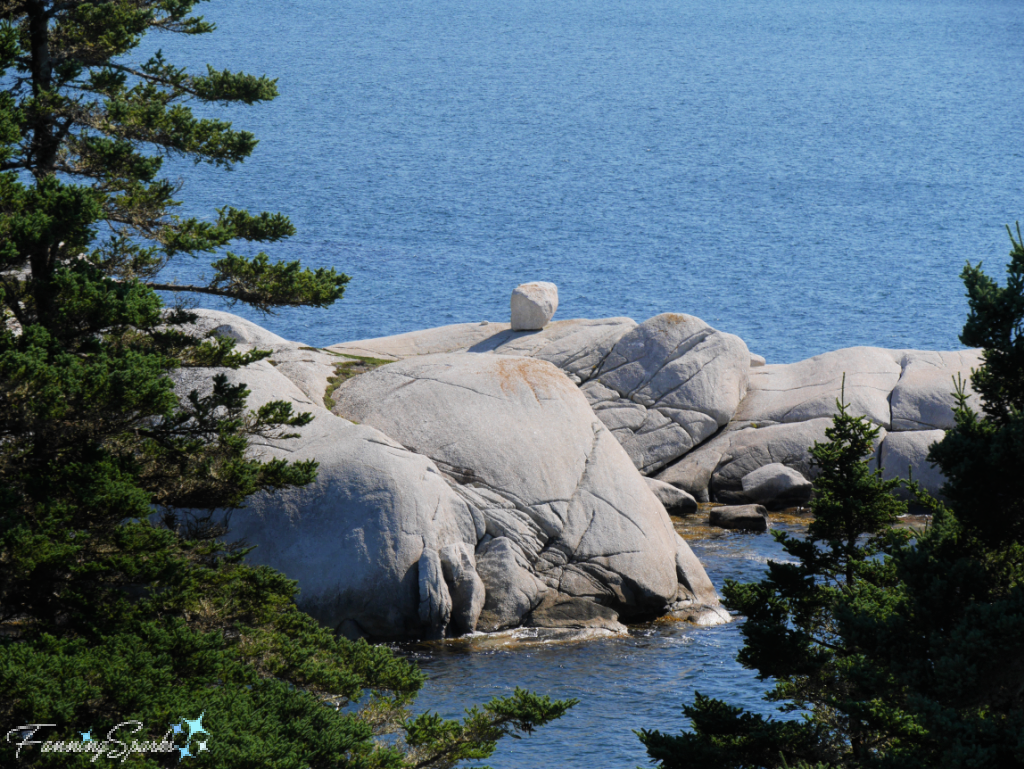
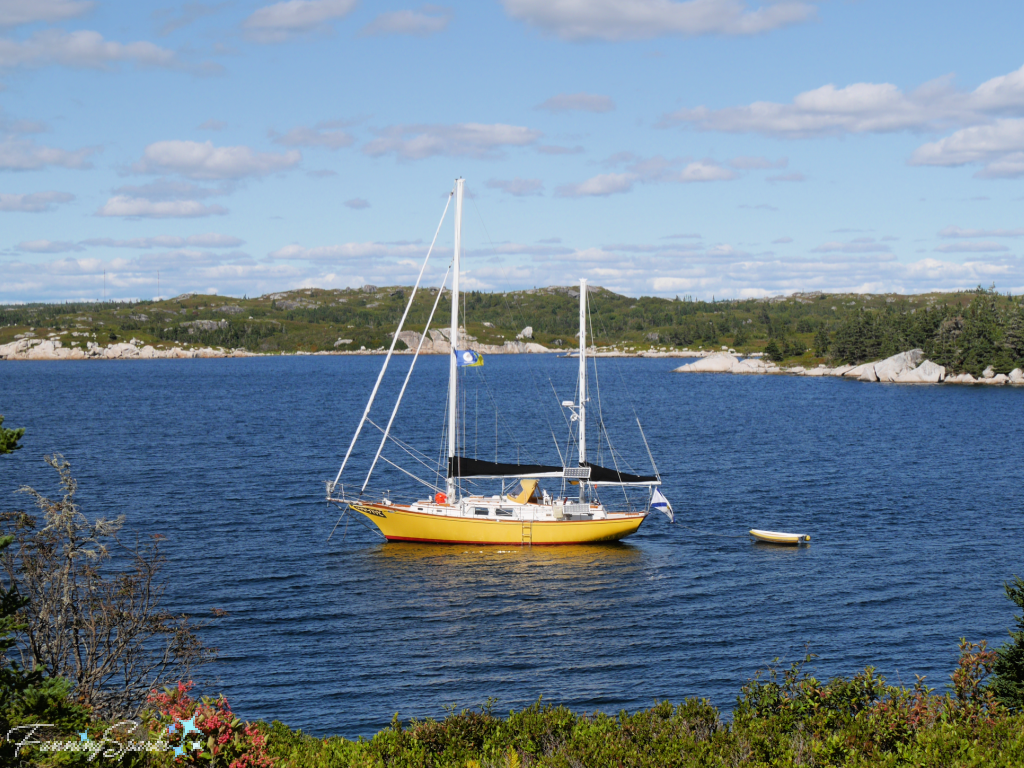
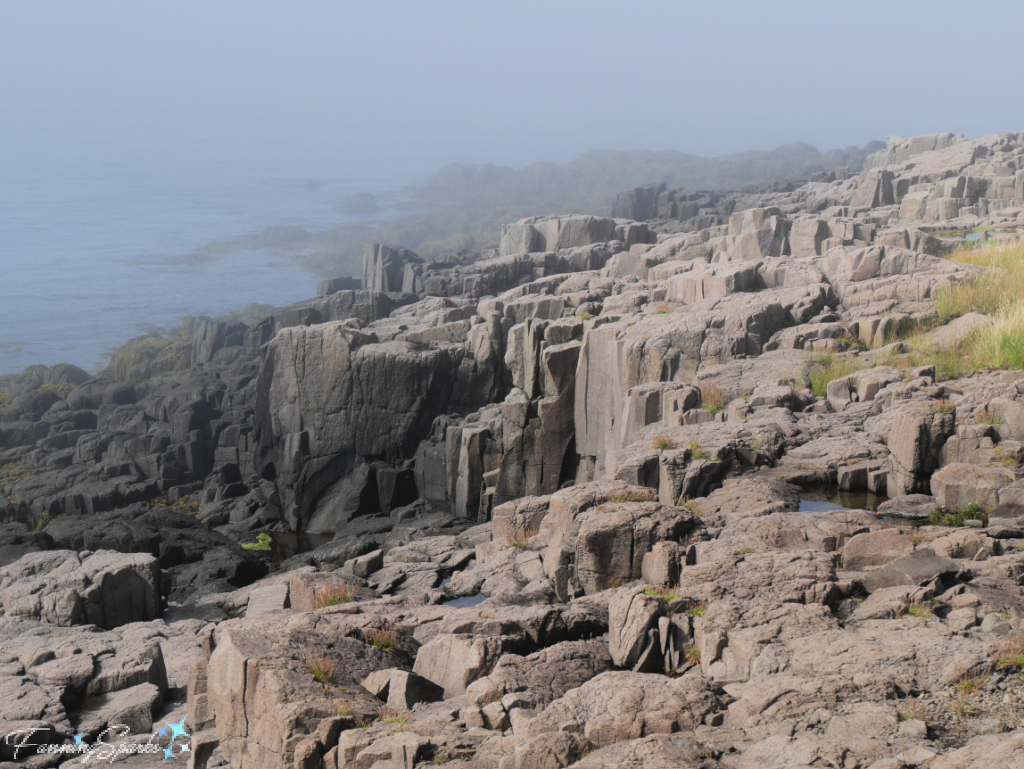 Fog also shrouded the rocky cliffs in the Nature Conservancy of Canada Reserve on the island’s west coast.
Fog also shrouded the rocky cliffs in the Nature Conservancy of Canada Reserve on the island’s west coast.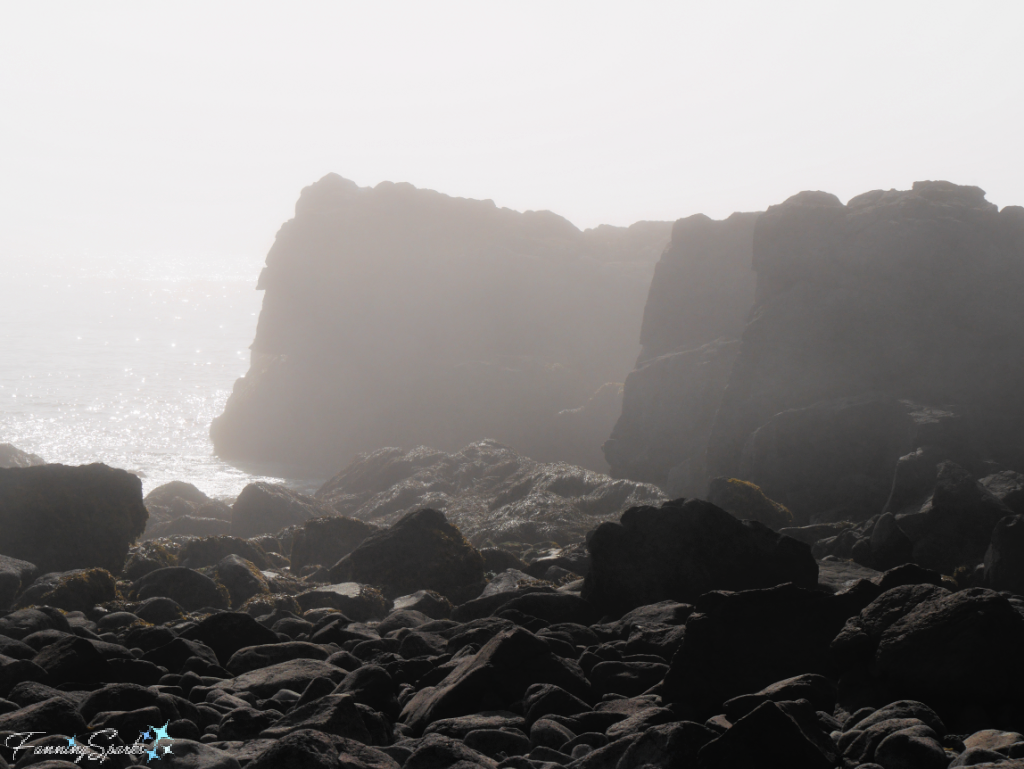
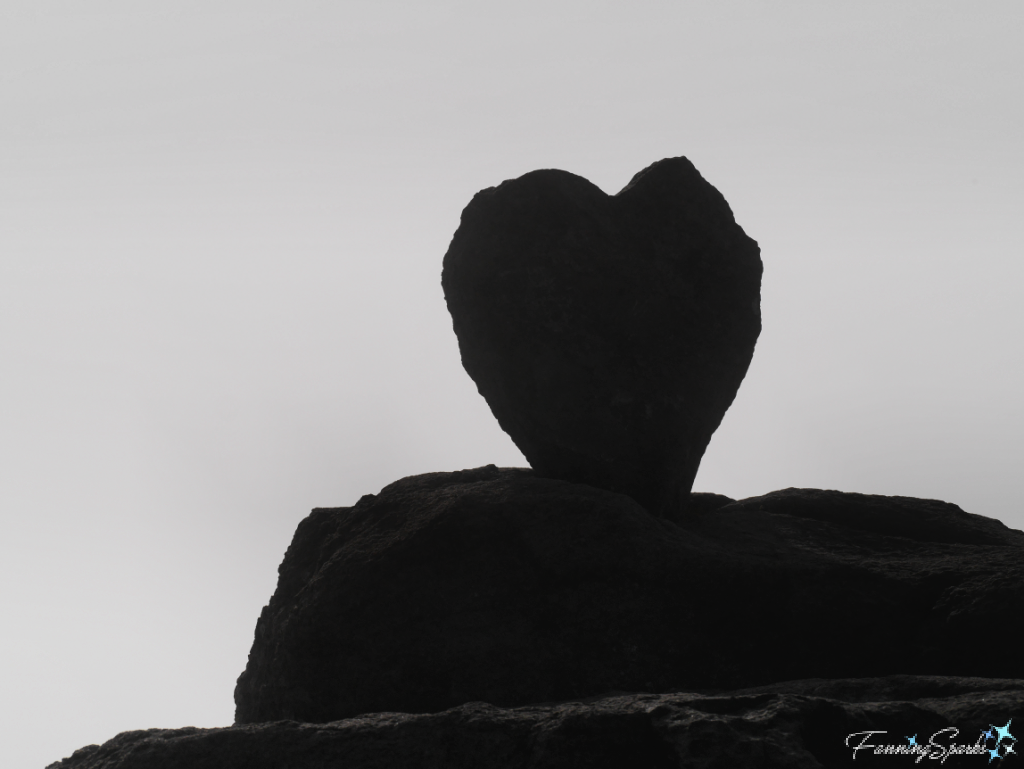
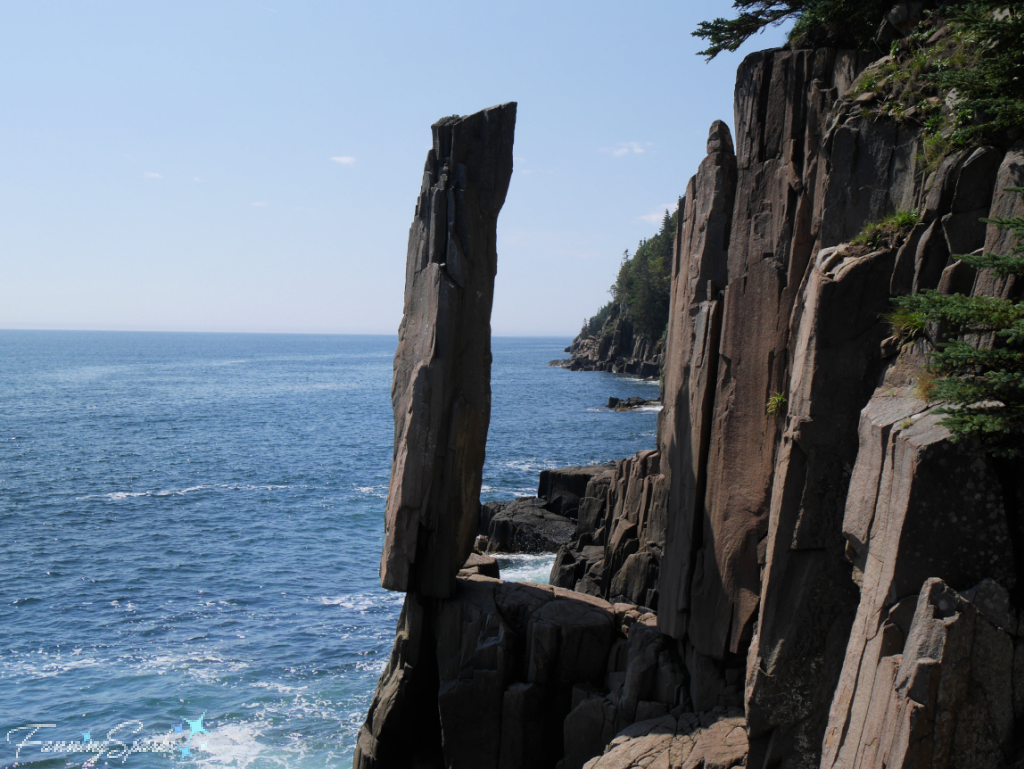
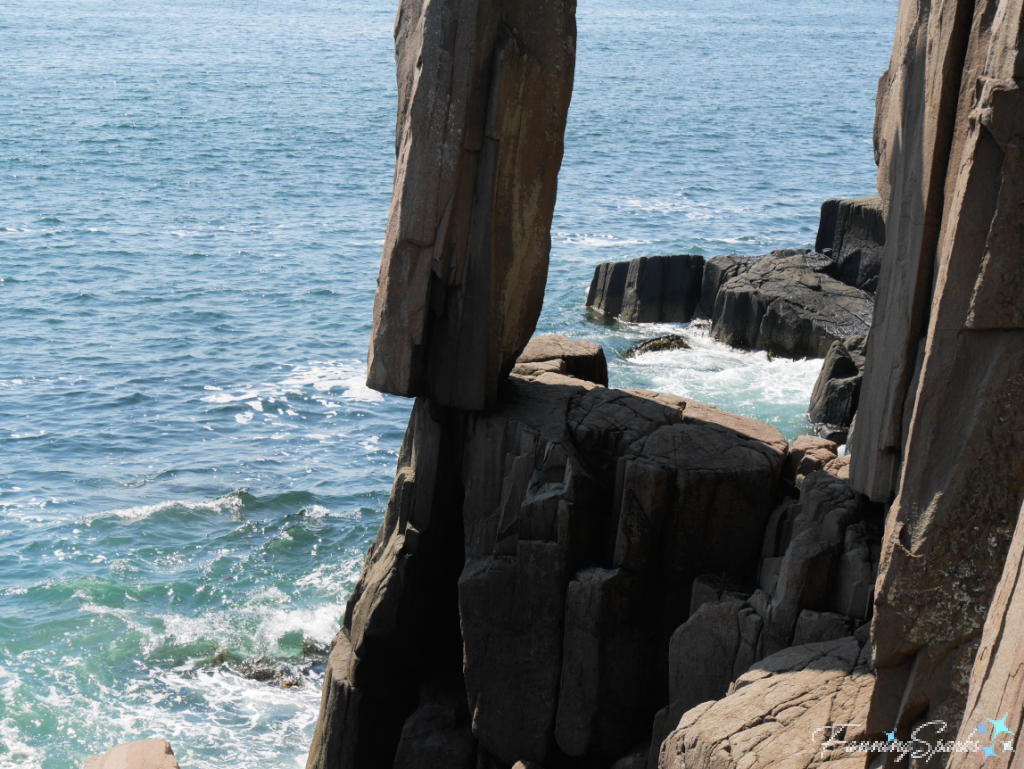
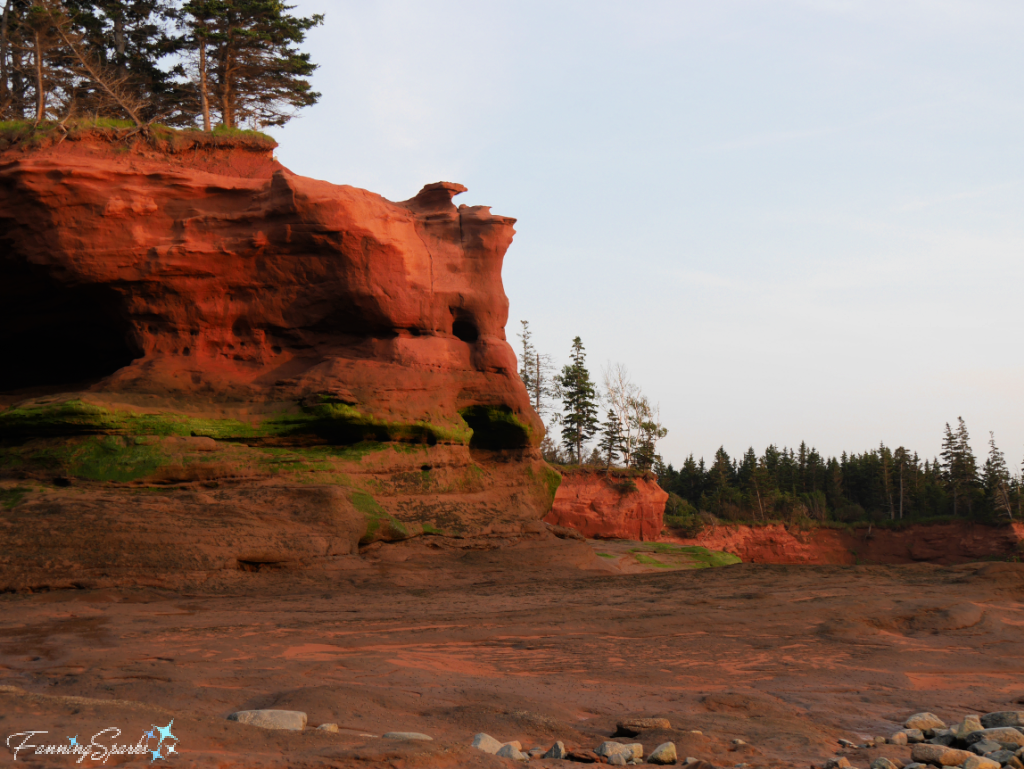
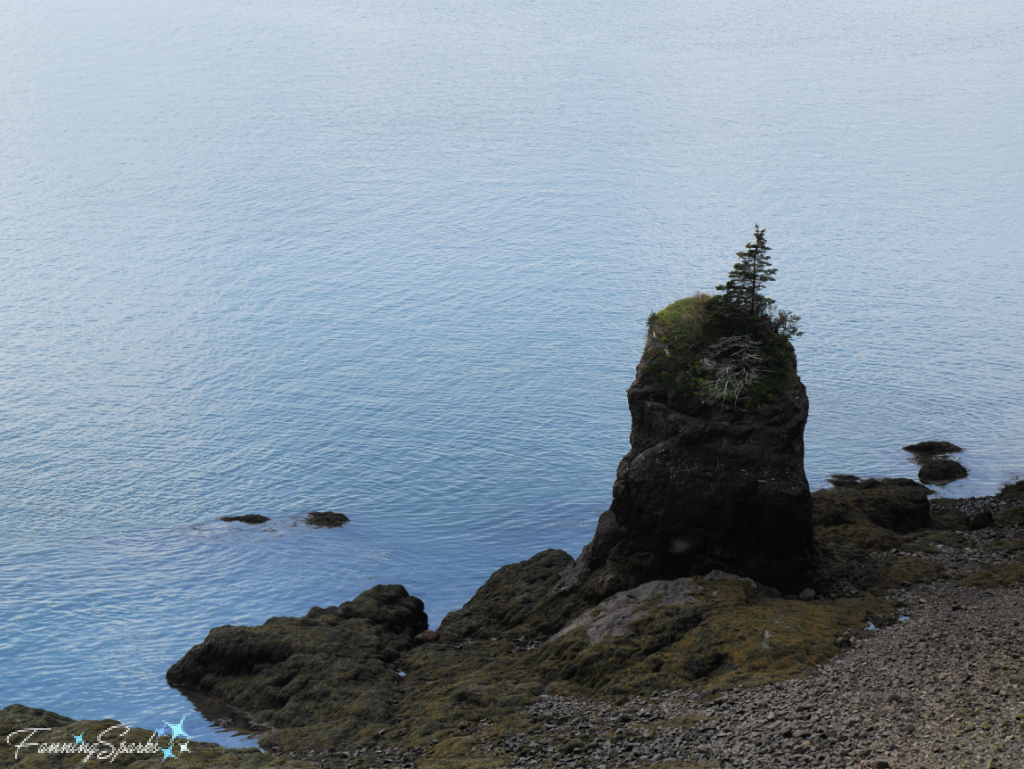
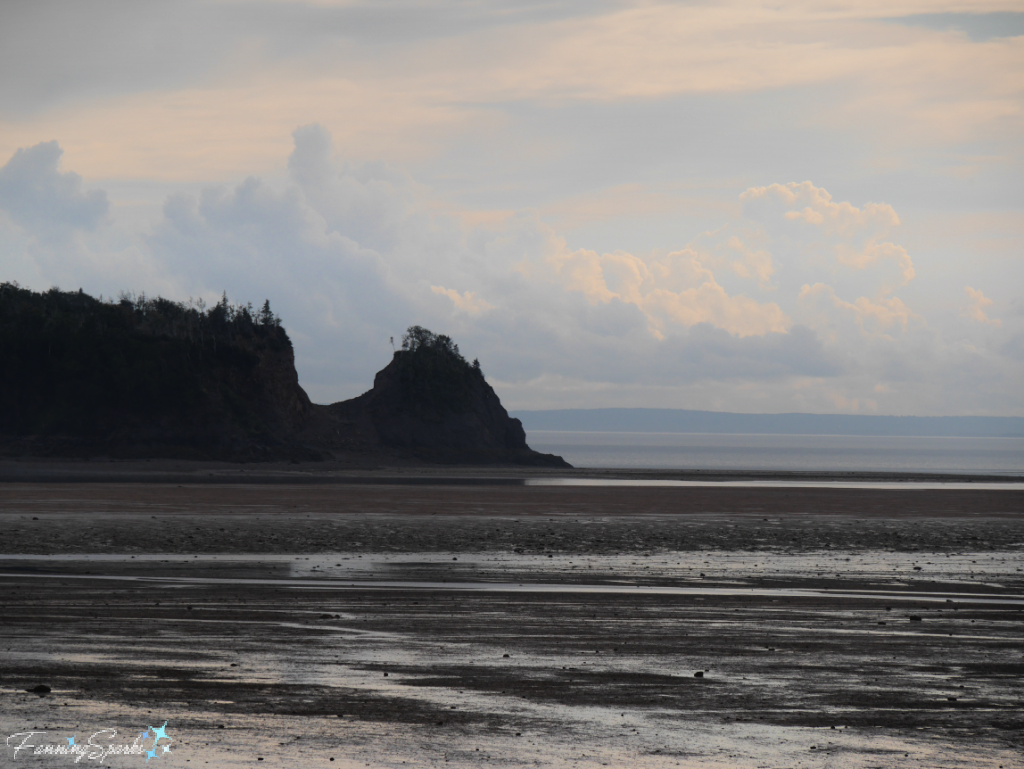
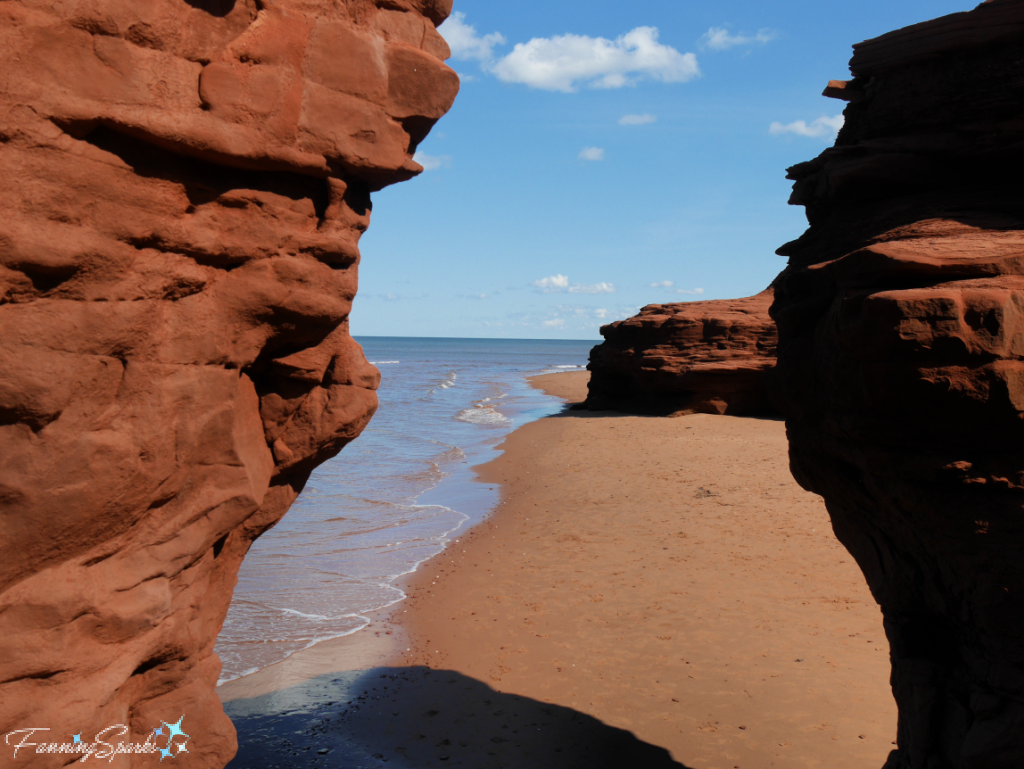

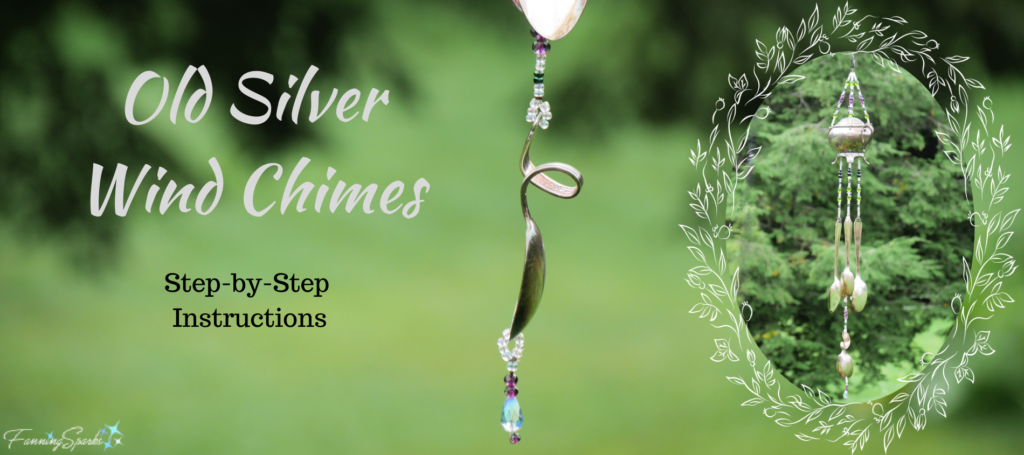
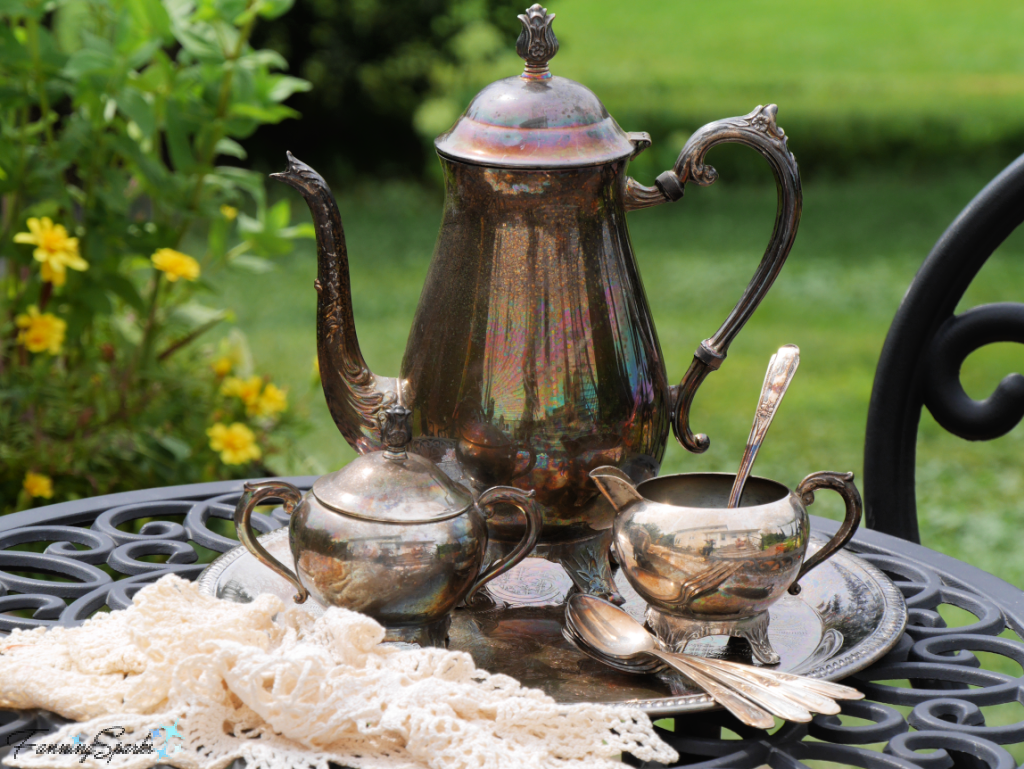
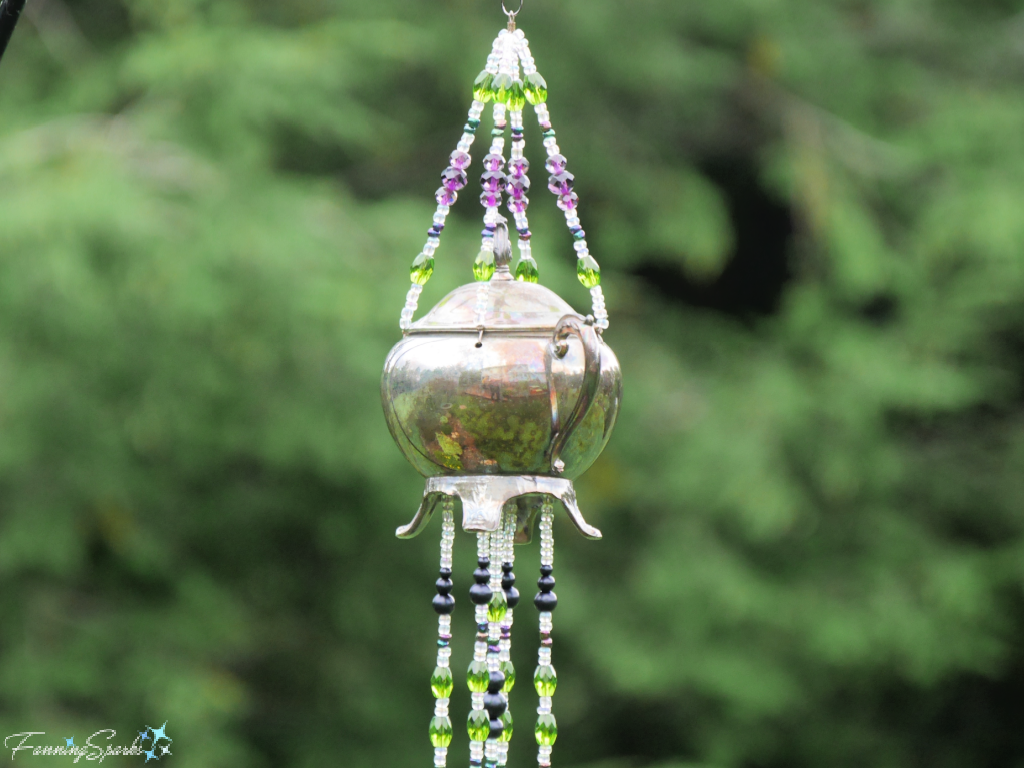 This project is completed with silver-plated cutlery hung from glass-beaded strands. The spoons catch the breeze and produce a pleasant soft tinkling sound. Here’s a closer look.
This project is completed with silver-plated cutlery hung from glass-beaded strands. The spoons catch the breeze and produce a pleasant soft tinkling sound. Here’s a closer look.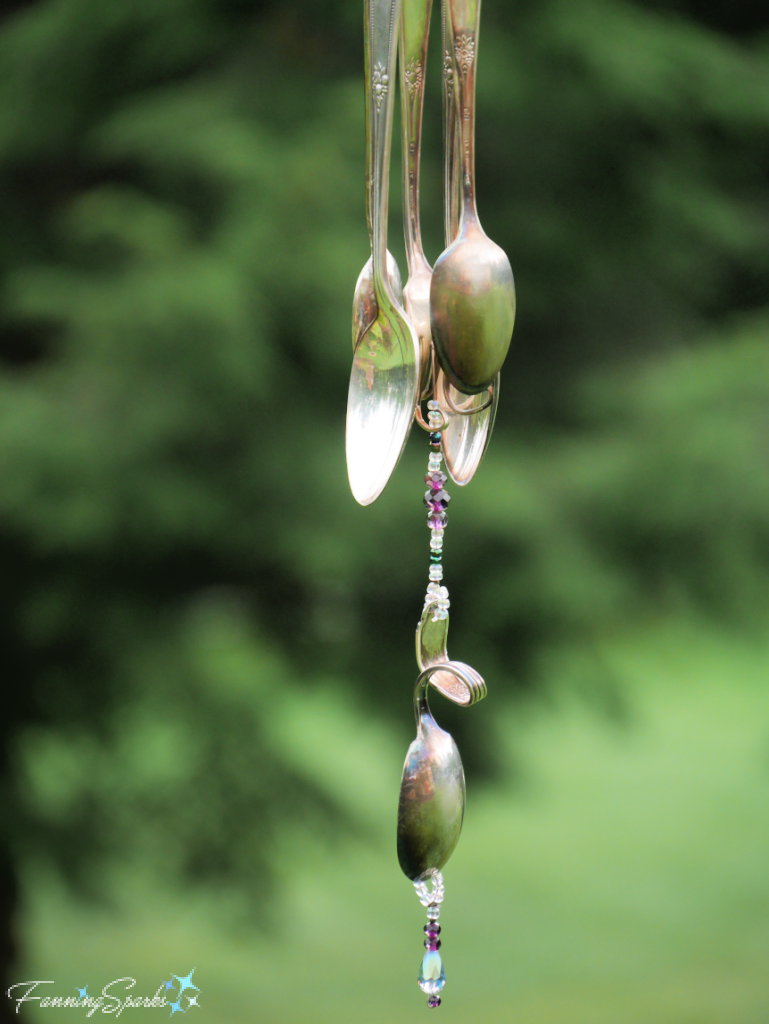
 Let’s get started.
Let’s get started.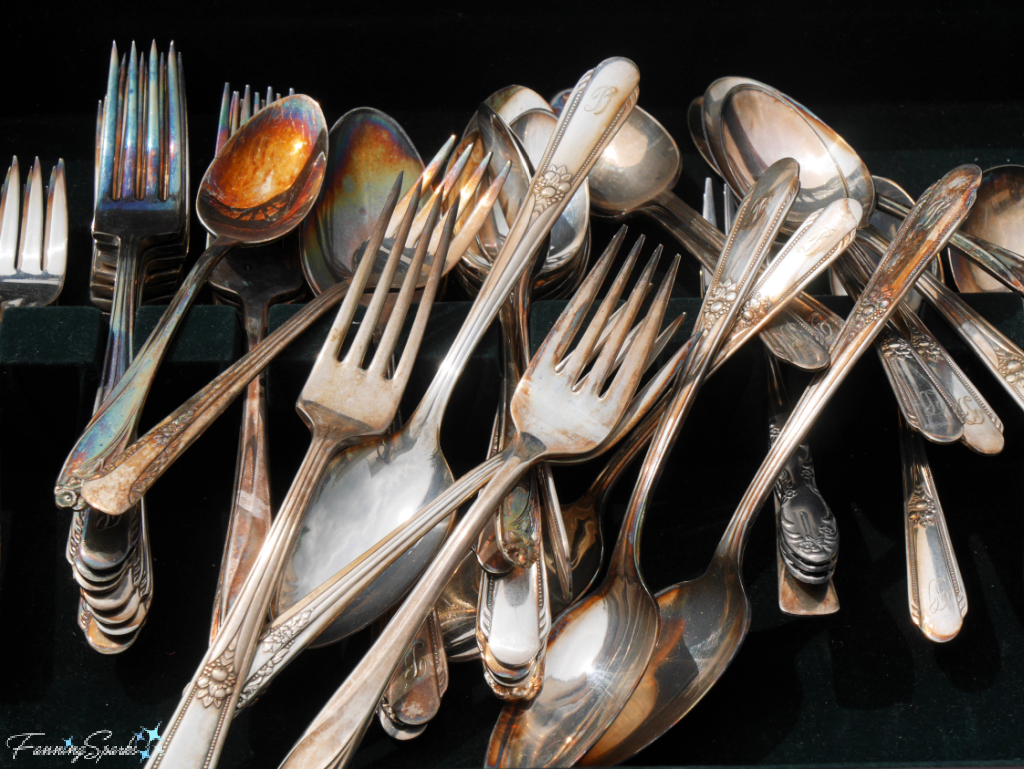 . Beads: Approximately 60” of Glass Beads. Glass beads may be more expensive than other materials but they catch the light beautifully and they tend to weather better. Choose an assortment of colors, shapes and sizes. I purchased a variety of beads, as shown below, to make colorful and interesting hangers but I didn’t use nearly as many beads as shown. I found it helpful to include some “filler” beads (ie the white ones) to really let the other beads stand out. Ensure your glass beads will fit onto your beading wire.
. Beads: Approximately 60” of Glass Beads. Glass beads may be more expensive than other materials but they catch the light beautifully and they tend to weather better. Choose an assortment of colors, shapes and sizes. I purchased a variety of beads, as shown below, to make colorful and interesting hangers but I didn’t use nearly as many beads as shown. I found it helpful to include some “filler” beads (ie the white ones) to really let the other beads stand out. Ensure your glass beads will fit onto your beading wire.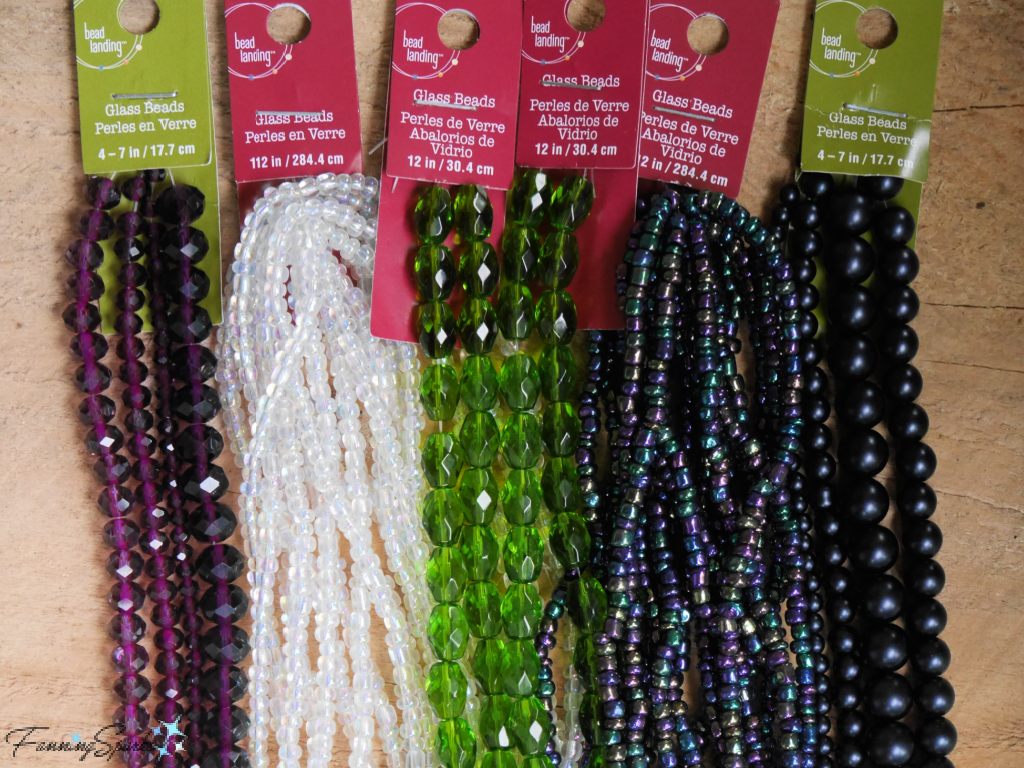 . Teardrop Beads: A teardrop-shaped glass bead adds a nice touch to the bottom of the wind chimes. If using a creamer, teardrop beads are the perfect way to end the bead strands coming out of the creamer’s spout (see photo in Step 12).
. Teardrop Beads: A teardrop-shaped glass bead adds a nice touch to the bottom of the wind chimes. If using a creamer, teardrop beads are the perfect way to end the bead strands coming out of the creamer’s spout (see photo in Step 12).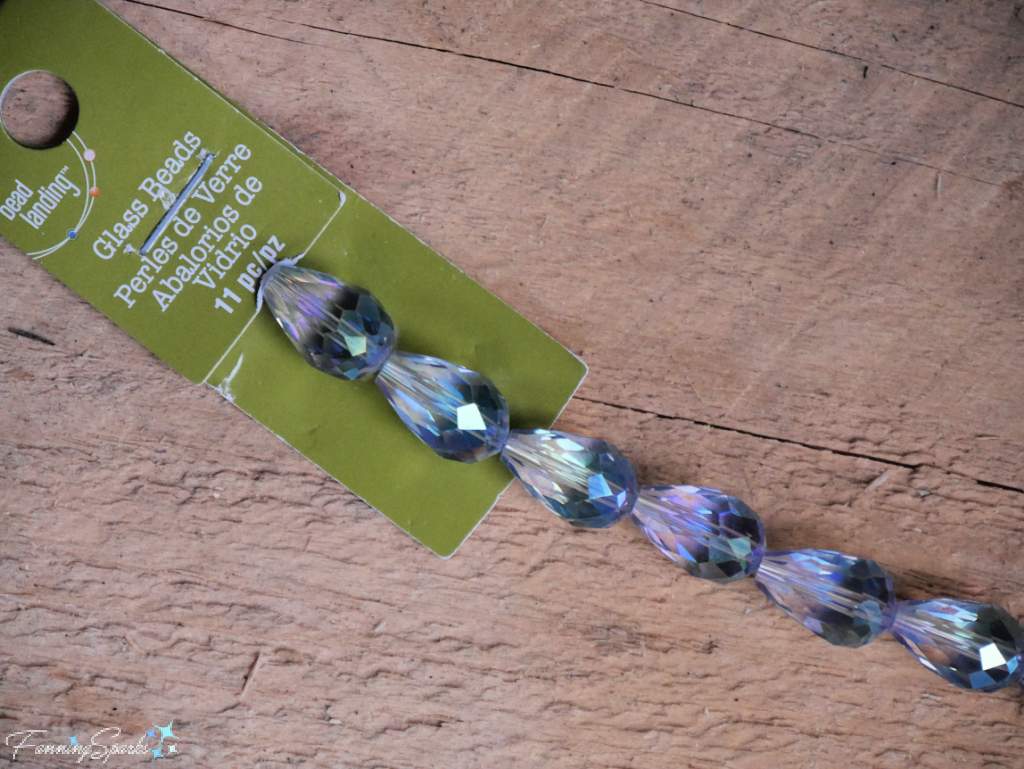 . Beading Wire: Approximately 100” (9 ft) of Beading Wire. This stringing material is made of multiple strands of thin steel wire coated with a layer of nylon. Surprisingly, this type of wire is available as a beading supply and as a fishing supply. I’ve seen 7-strand Beading Wire in the beading section at my local craft store. But I raided my husband’s fly fishing gear and selected a spool of 40-lb Knottable Wire Bite Tipper from RIO. I reasoned that fishing line would be more durable and stand up better to the outdoor conditions I expected my wind chimes to endure. Ensure your beading wire will fit into your glass beads.
. Beading Wire: Approximately 100” (9 ft) of Beading Wire. This stringing material is made of multiple strands of thin steel wire coated with a layer of nylon. Surprisingly, this type of wire is available as a beading supply and as a fishing supply. I’ve seen 7-strand Beading Wire in the beading section at my local craft store. But I raided my husband’s fly fishing gear and selected a spool of 40-lb Knottable Wire Bite Tipper from RIO. I reasoned that fishing line would be more durable and stand up better to the outdoor conditions I expected my wind chimes to endure. Ensure your beading wire will fit into your glass beads.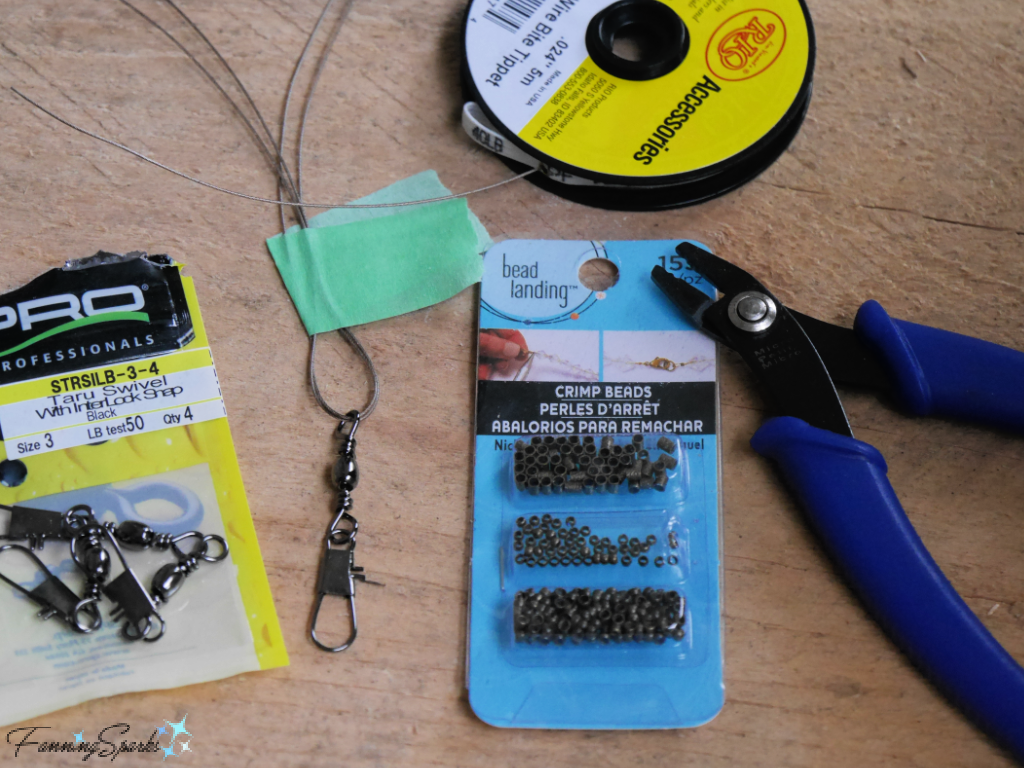 Tools and Equipment Needed
Tools and Equipment Needed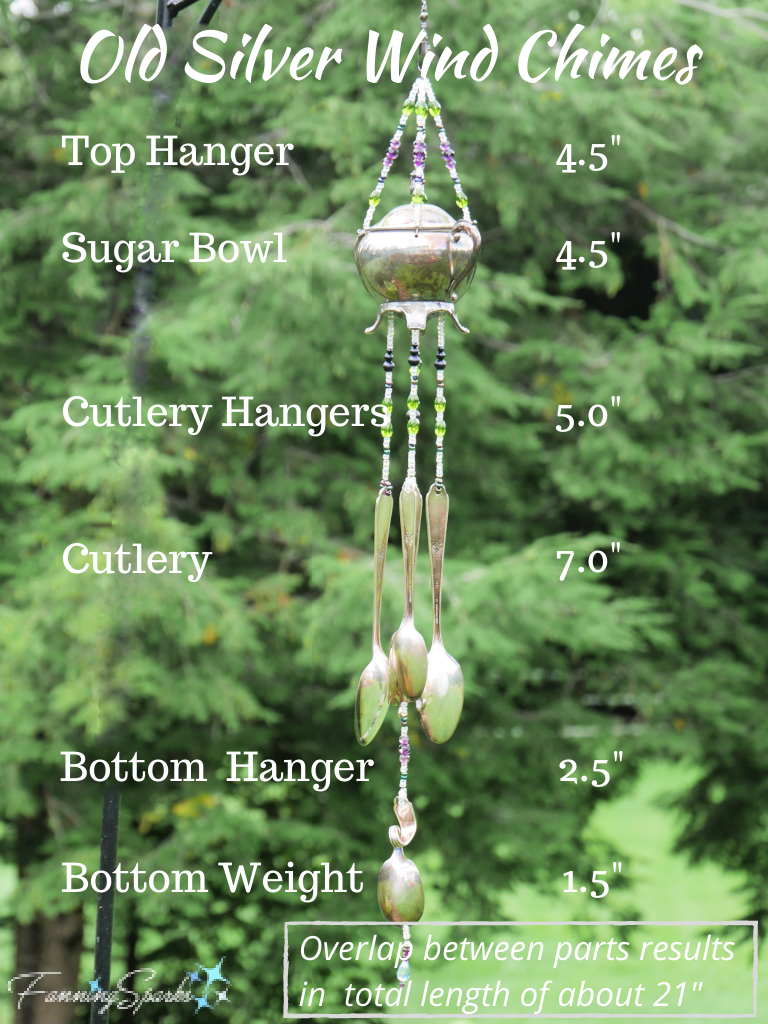 Step 1 – Select Components Select your featured component—it could be a lidded sugar bowl or a creamer as shown in this tutorial. Alternatively, you could use a teapot but the hangers would likely need to be longer so increase the number of glass beads and length of beading wire accordingly.
Step 1 – Select Components Select your featured component—it could be a lidded sugar bowl or a creamer as shown in this tutorial. Alternatively, you could use a teapot but the hangers would likely need to be longer so increase the number of glass beads and length of beading wire accordingly.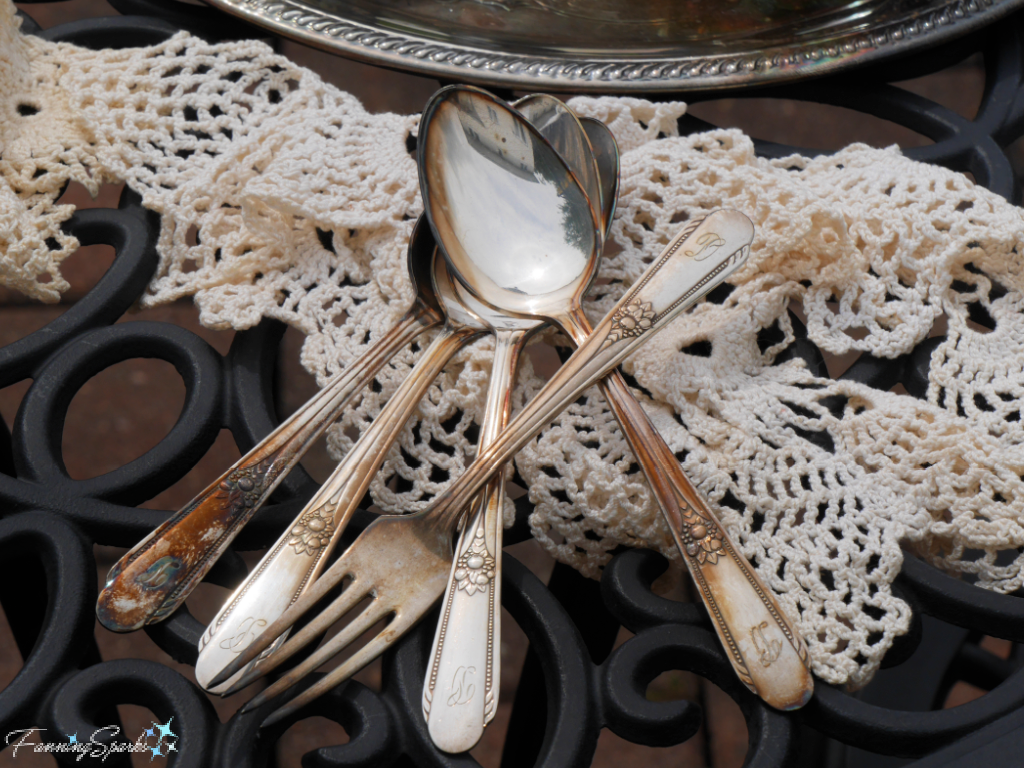 Step 2 – Flatten Spoons and Fork Work on a block of scrap wood. Hold a spoon firmly against the wood block and hit it with a rubber mallet to straighten/flatten the spoon handle. The idea is to straighten the handle a little so the spoon will hang vertically. Optionally, you may also want to hit the spoon bowl a few times to flatten it a little. Repeat with the remaining spoons and fork.
Step 2 – Flatten Spoons and Fork Work on a block of scrap wood. Hold a spoon firmly against the wood block and hit it with a rubber mallet to straighten/flatten the spoon handle. The idea is to straighten the handle a little so the spoon will hang vertically. Optionally, you may also want to hit the spoon bowl a few times to flatten it a little. Repeat with the remaining spoons and fork.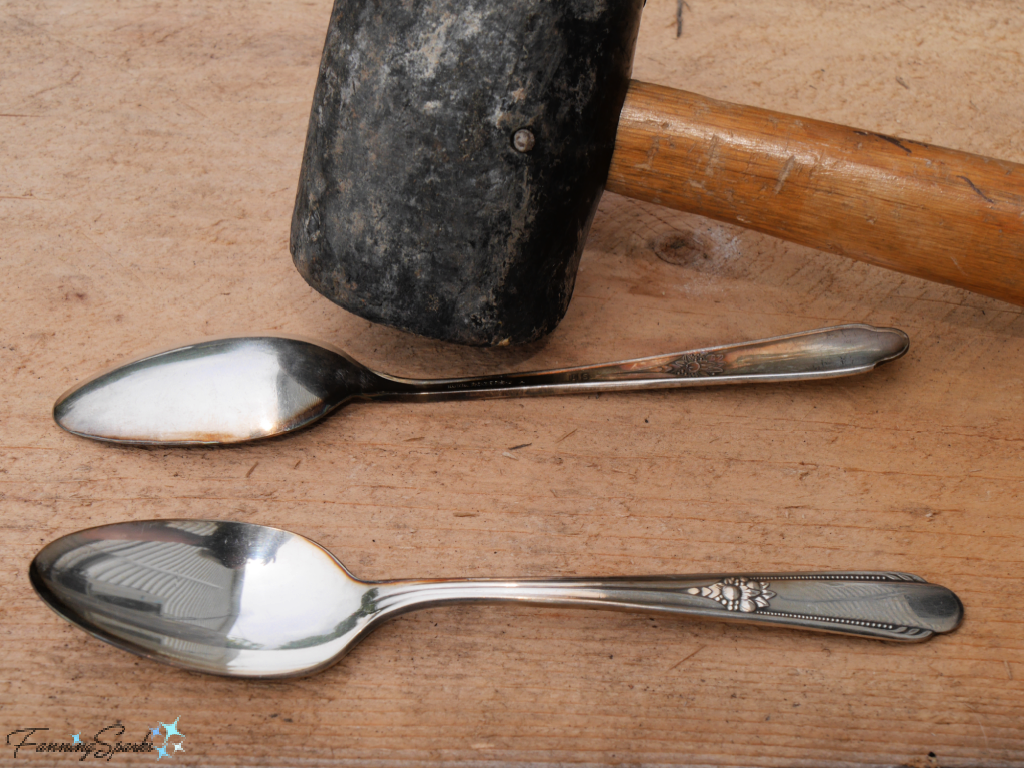 Step 3 – Bend Fork Use flat-nose pliers to grip one of the fork’s tines. Slowly bend the tine out and into a graceful curl. It’s helpful to use round-nose pliers for the final bending. Alternate the direction of the tine curls. Curling out the fork tines increases their contact with the bowls of the spoons meaning the wind chimes will produce more music.
Step 3 – Bend Fork Use flat-nose pliers to grip one of the fork’s tines. Slowly bend the tine out and into a graceful curl. It’s helpful to use round-nose pliers for the final bending. Alternate the direction of the tine curls. Curling out the fork tines increases their contact with the bowls of the spoons meaning the wind chimes will produce more music.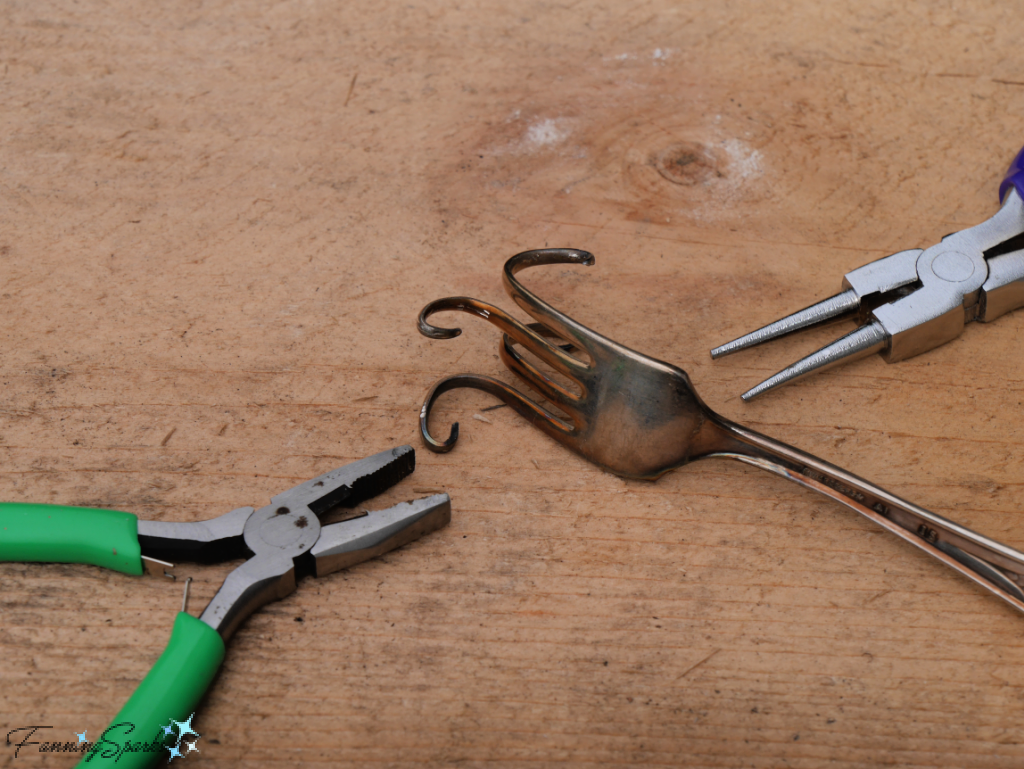 Step 4 – Drill Holes in Spoons and Fork Start with a spoon. Choose a spot at the top of the handle—centered and about ¼” from the tip—to drill a hole for hanging. Indent this spot with a sharp nail and a hammer. Use the drill with a bit for drilling metal. Drill through the spoon handle at the marked spot. Take care to clear away metal filings since these can be sharp. Use a hammer to knock off and flatten any sharp edges or tear-out on the backside of the drilled hole. Repeat for the remaining spoons and fork. Drill a second hole in the fork just above the top of the tines in the center.
Step 4 – Drill Holes in Spoons and Fork Start with a spoon. Choose a spot at the top of the handle—centered and about ¼” from the tip—to drill a hole for hanging. Indent this spot with a sharp nail and a hammer. Use the drill with a bit for drilling metal. Drill through the spoon handle at the marked spot. Take care to clear away metal filings since these can be sharp. Use a hammer to knock off and flatten any sharp edges or tear-out on the backside of the drilled hole. Repeat for the remaining spoons and fork. Drill a second hole in the fork just above the top of the tines in the center.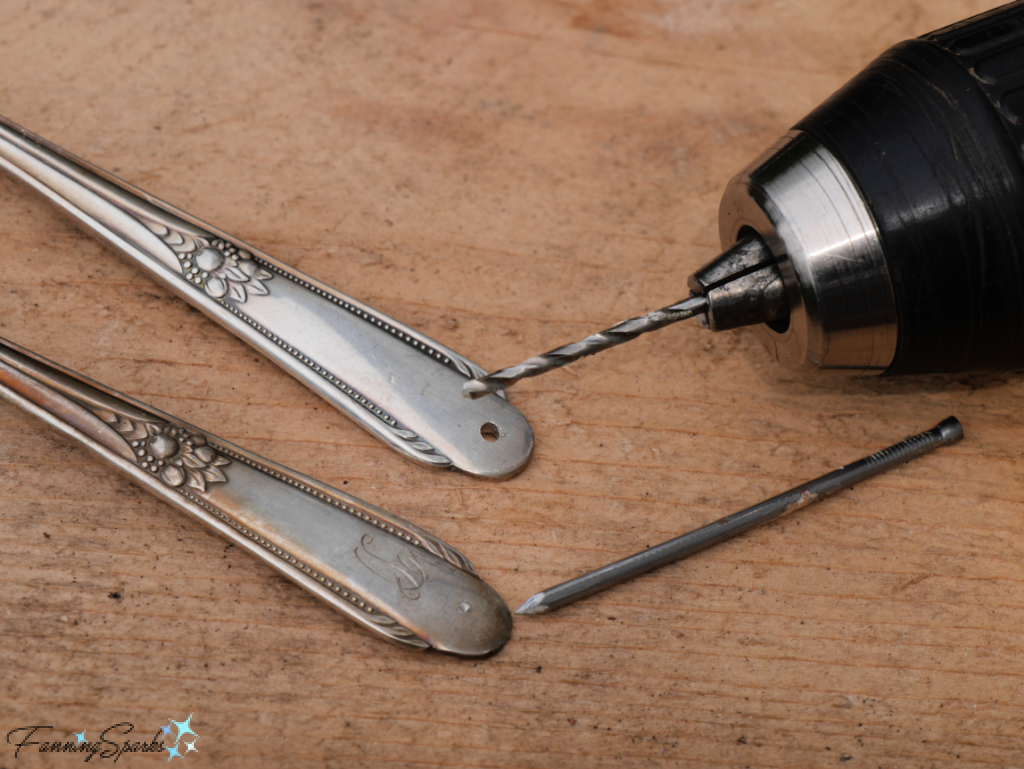 Step 5 – Drill Holes in Sugar Bowl Choose 4 spots on the bottom of the sugar bowl for drilling holes. It’s easiest to align these with the bowl’s feet. As above, indent the selected spots with a sharp nail and hammer. Drill the holes. Locate the center of the bottom, mark and drill. Use a hammer to gently smooth out the backside of the drilled holes.
Step 5 – Drill Holes in Sugar Bowl Choose 4 spots on the bottom of the sugar bowl for drilling holes. It’s easiest to align these with the bowl’s feet. As above, indent the selected spots with a sharp nail and hammer. Drill the holes. Locate the center of the bottom, mark and drill. Use a hammer to gently smooth out the backside of the drilled holes.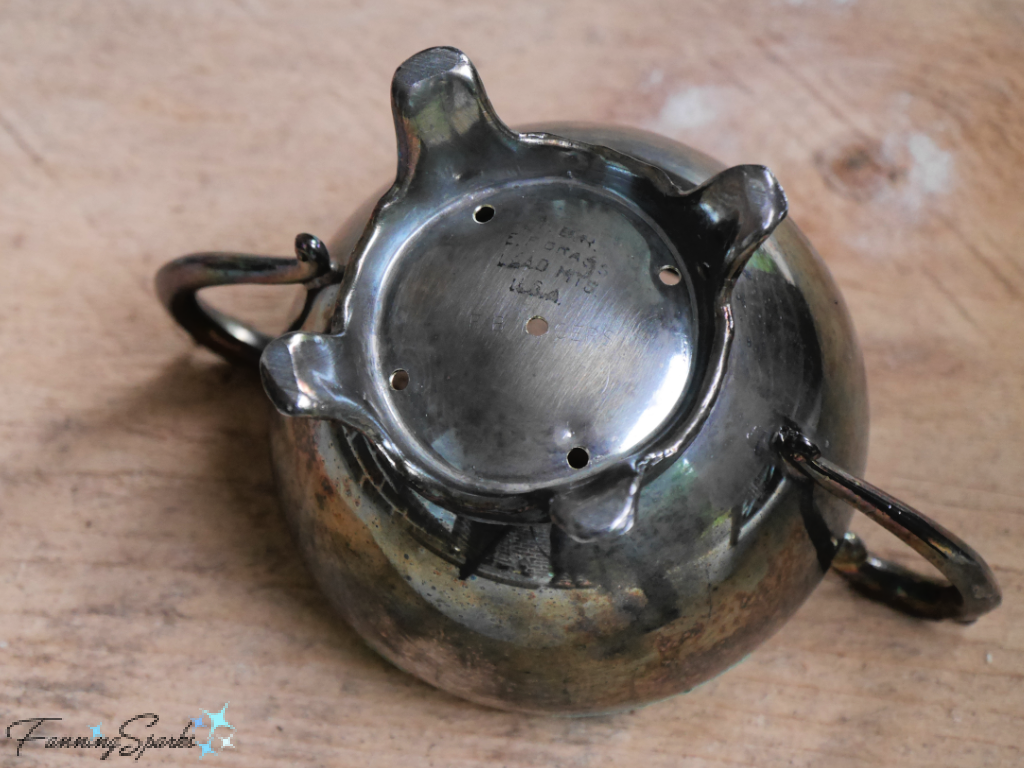 Next drill holes along the top rim of the sugar bowl. Choose 4 spots at an equal distance from the handles and the top edge. Due to the curved edge, drilling these can be tricky.
Next drill holes along the top rim of the sugar bowl. Choose 4 spots at an equal distance from the handles and the top edge. Due to the curved edge, drilling these can be tricky.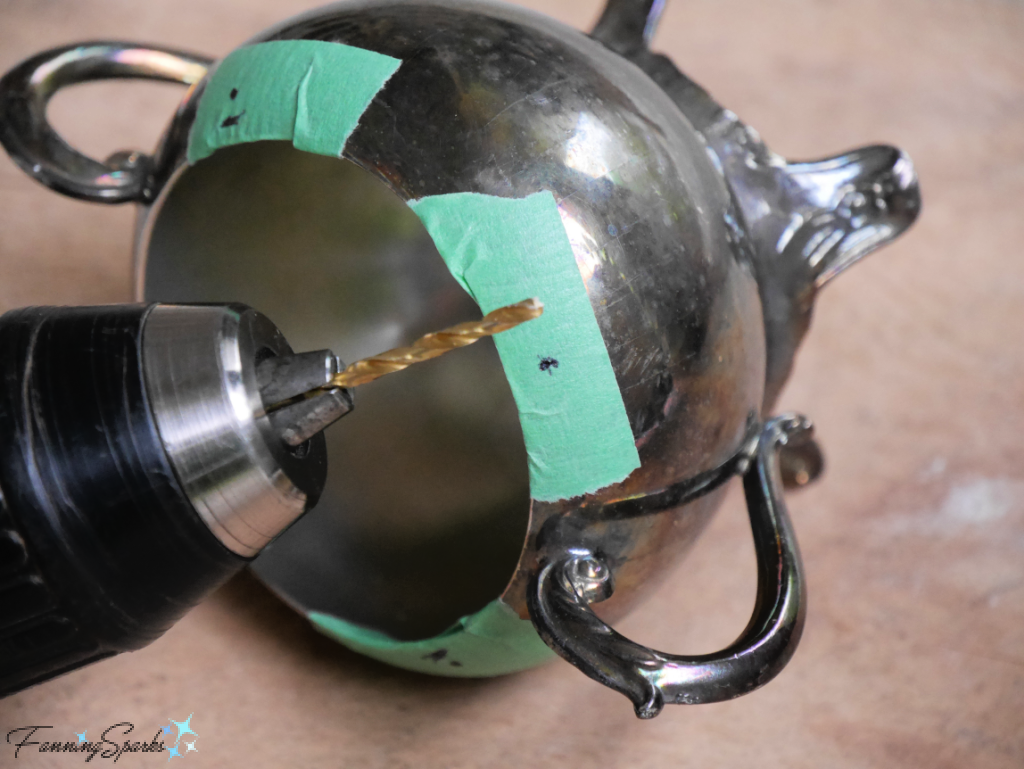 If using a creamer, drill a hole in the center of the creamer’s spout.
If using a creamer, drill a hole in the center of the creamer’s spout.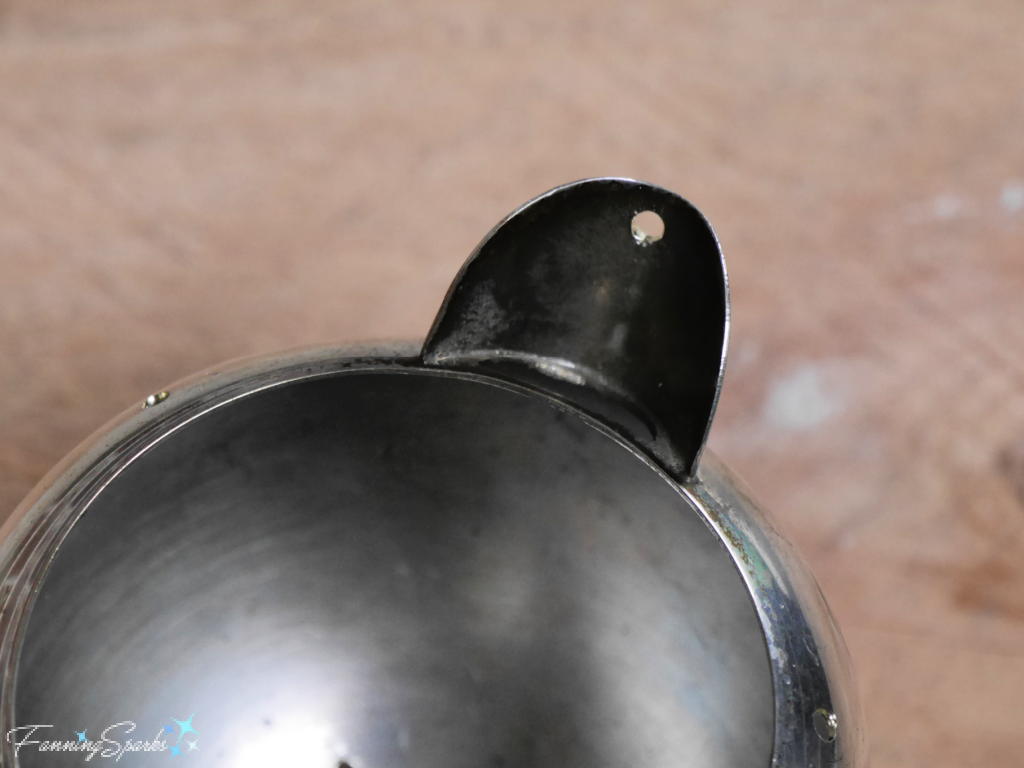 Step 6 – String Beads for Top Hanger Place a piece of fabric on your working surface to keep your beads from rolling away. Cut 2 pieces of beading wire each 16” long. Insert both pieces through the bottom of a swivel snap fitting. Fold wires in half. Slip a crimp bead onto the wire ends and slide it up to the swivel snap fitting. Use crimping pliers to squeeze the crimp bead and lock it into place.
Step 6 – String Beads for Top Hanger Place a piece of fabric on your working surface to keep your beads from rolling away. Cut 2 pieces of beading wire each 16” long. Insert both pieces through the bottom of a swivel snap fitting. Fold wires in half. Slip a crimp bead onto the wire ends and slide it up to the swivel snap fitting. Use crimping pliers to squeeze the crimp bead and lock it into place.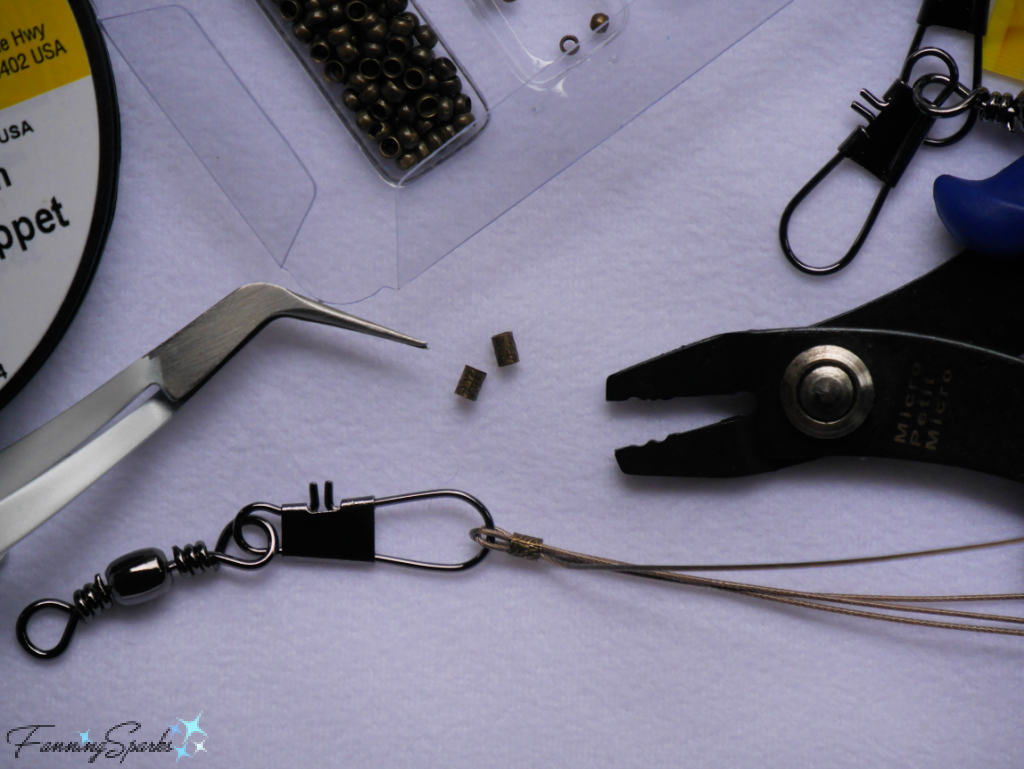 Take a few minutes to plan your bead design. The beaded section should be about 4.5” long. You may want to play around with different combinations of colors and shapes to create a pleasing pattern. Once happy with your design, string the beads onto one of the wires ending with 1 or 2 crimp beads. Then finish with a small crimp bead positioned at the end tip of the wire. Use the crimping pliers to squeeze the end crimp bead into place—temporarily keeping the beads in place while you work on the other sections.
Take a few minutes to plan your bead design. The beaded section should be about 4.5” long. You may want to play around with different combinations of colors and shapes to create a pleasing pattern. Once happy with your design, string the beads onto one of the wires ending with 1 or 2 crimp beads. Then finish with a small crimp bead positioned at the end tip of the wire. Use the crimping pliers to squeeze the end crimp bead into place—temporarily keeping the beads in place while you work on the other sections.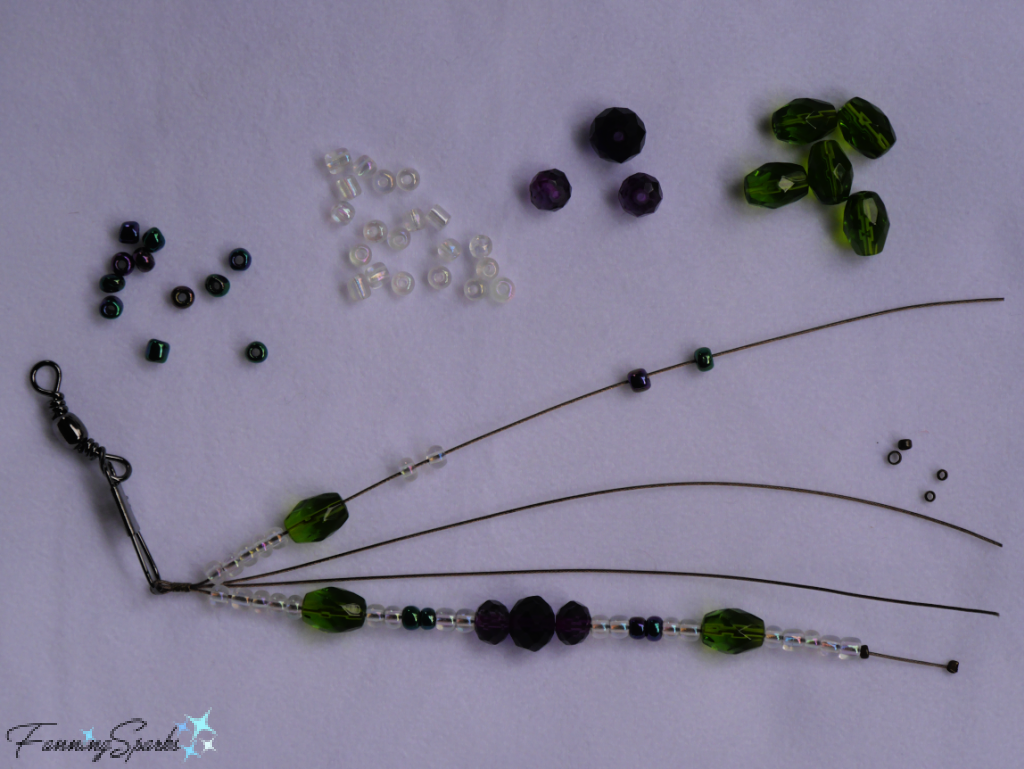 Step 7 – Attach Top Hanger Prepare to attach the beaded wires into the 4 drilled holes on the top edge of the sugar bowl. Snip off the crimped bead from the end tip of the wire. Thread the end of the wire through the drilled hole and back up through 3-5 beads. Ensure beads are snug against the swivel snap fitting at the top.
Step 7 – Attach Top Hanger Prepare to attach the beaded wires into the 4 drilled holes on the top edge of the sugar bowl. Snip off the crimped bead from the end tip of the wire. Thread the end of the wire through the drilled hole and back up through 3-5 beads. Ensure beads are snug against the swivel snap fitting at the top.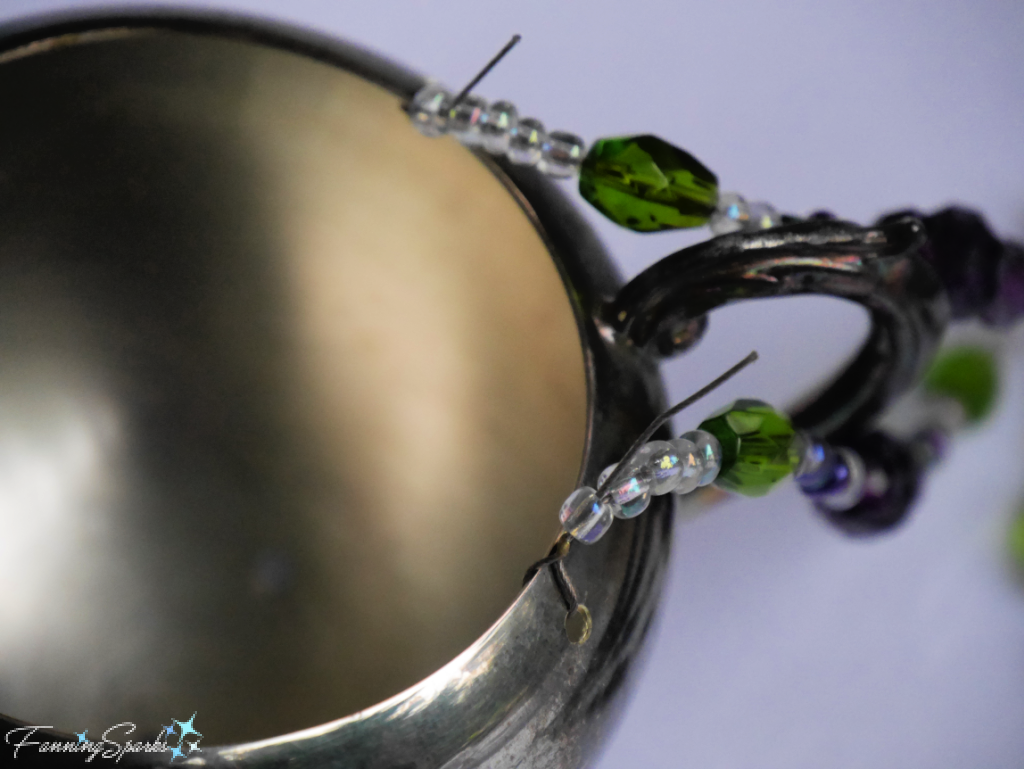 If using a lid on a sugar bowl, put the lid in place and adjust the wire loops to fit. Lock in place, by squeezing the remaining crimp bead(s) with the crimping pliers. Trim off the end of the wire with the cutting pliers. Repeat for the 3 remaining wires.
If using a lid on a sugar bowl, put the lid in place and adjust the wire loops to fit. Lock in place, by squeezing the remaining crimp bead(s) with the crimping pliers. Trim off the end of the wire with the cutting pliers. Repeat for the 3 remaining wires.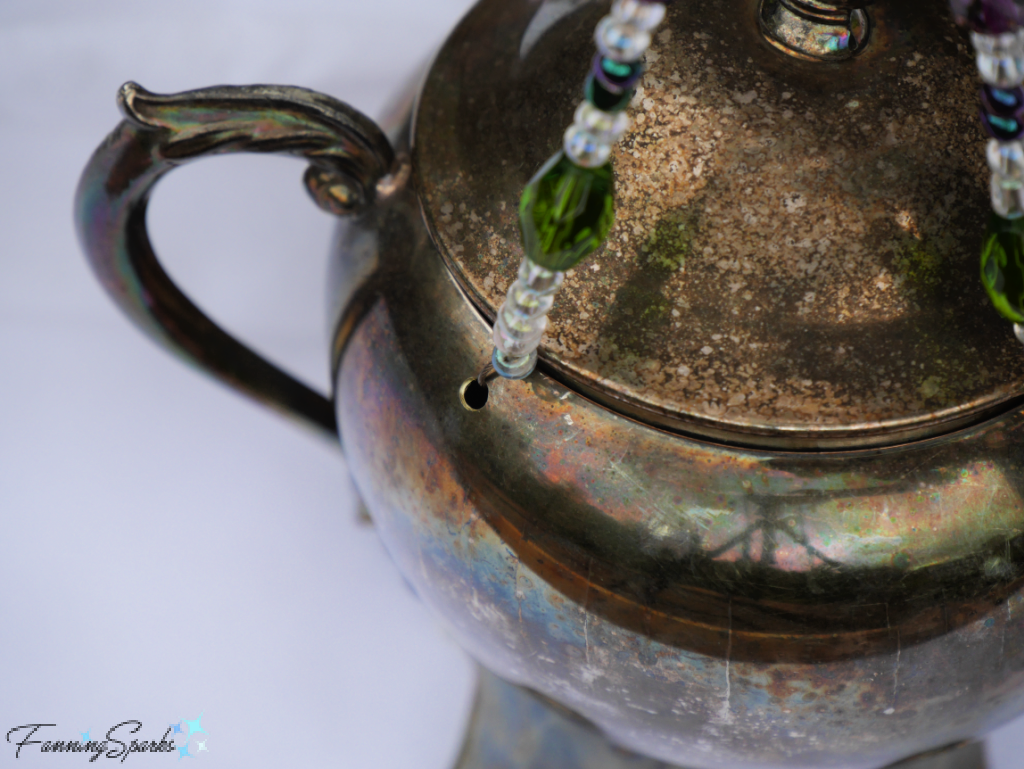 Step 8 – String Beads for Cutlery Hangers Cut a piece of beading wire 10” long. Squeeze a small crimp bead onto one end of the wire. Thread a plain bead onto the wire, slide up to the crimped bead, loop wire around and thread back through bead. Place the beaded end of the wire inside the sugar bowl and pull the wire down through the drilled hole. Repeat for the remaining 4 drilled holes.
Step 8 – String Beads for Cutlery Hangers Cut a piece of beading wire 10” long. Squeeze a small crimp bead onto one end of the wire. Thread a plain bead onto the wire, slide up to the crimped bead, loop wire around and thread back through bead. Place the beaded end of the wire inside the sugar bowl and pull the wire down through the drilled hole. Repeat for the remaining 4 drilled holes. String the beads onto one of the beading wires in your desired pattern. The beaded section should be about 5” long. Choose 6 small plain beads to wrap around the spoon handle. Add 3 of the small plain beads and a crimp bead to the wire. Then squeeze another crimp bead on the very end of the wire to temporarily hold the beads in place. Repeat for remaining 4 wires.
String the beads onto one of the beading wires in your desired pattern. The beaded section should be about 5” long. Choose 6 small plain beads to wrap around the spoon handle. Add 3 of the small plain beads and a crimp bead to the wire. Then squeeze another crimp bead on the very end of the wire to temporarily hold the beads in place. Repeat for remaining 4 wires.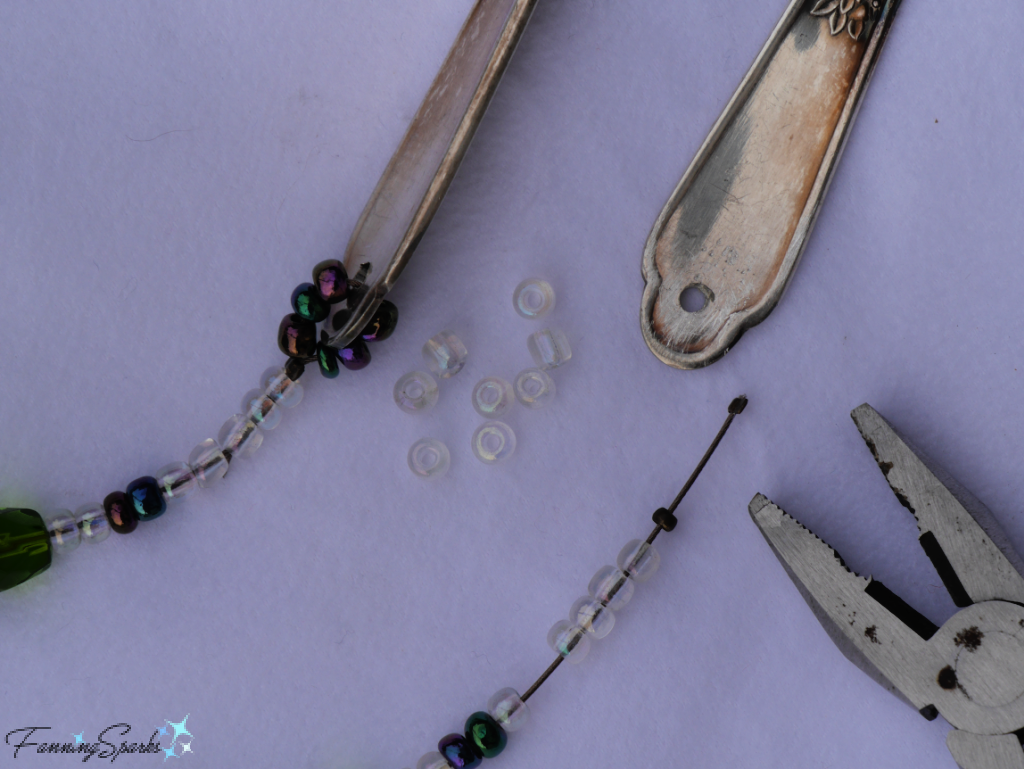 Step 9 – Attach Cutlery Prepare to attach the spoons and fork to the beaded wires. Start with one of the beaded wires and one spoon. Push all the beads up against the bottom of the sugar bowl. Snip off the crimped bead from the end tip of the wire. Thread the end of the wire through the drilled hole in the spoon handle, from front to back, add 3 small plain beads and pull the wire back up through the crimp bead and the last 3-5 beads above the crimp bead. Lock in place, by squeezing the crimp bead with the crimping pliers. Trim off the end of the wire with the cutting pliers. Repeat for the 4 remaining wires.
Step 9 – Attach Cutlery Prepare to attach the spoons and fork to the beaded wires. Start with one of the beaded wires and one spoon. Push all the beads up against the bottom of the sugar bowl. Snip off the crimped bead from the end tip of the wire. Thread the end of the wire through the drilled hole in the spoon handle, from front to back, add 3 small plain beads and pull the wire back up through the crimp bead and the last 3-5 beads above the crimp bead. Lock in place, by squeezing the crimp bead with the crimping pliers. Trim off the end of the wire with the cutting pliers. Repeat for the 4 remaining wires.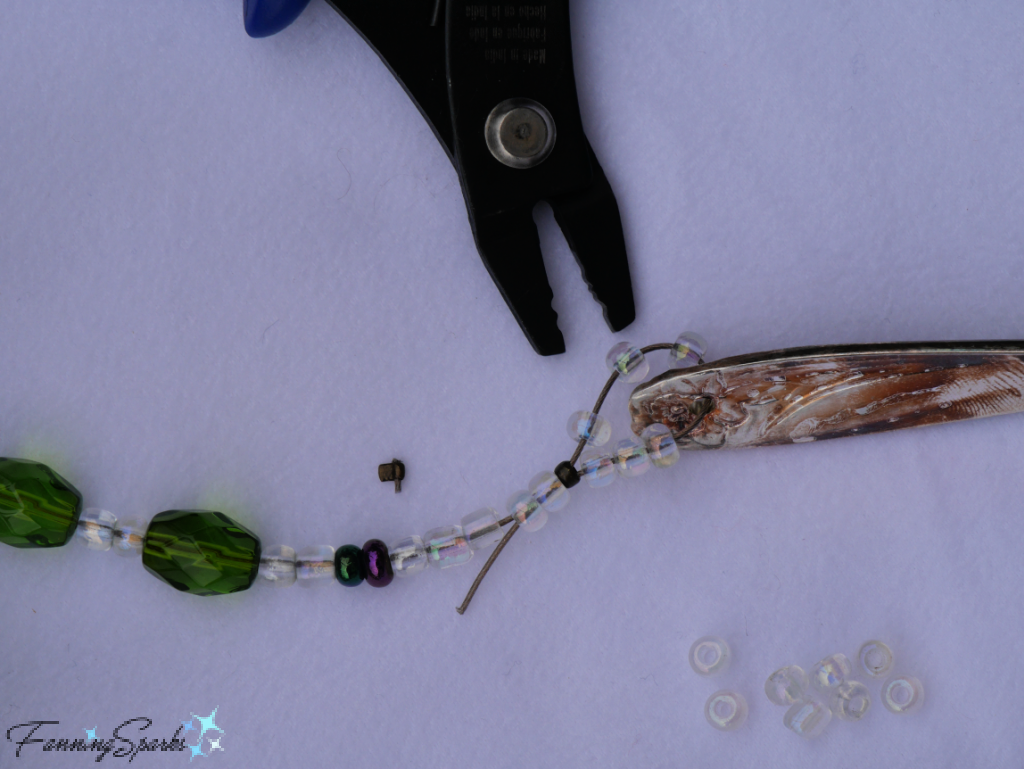
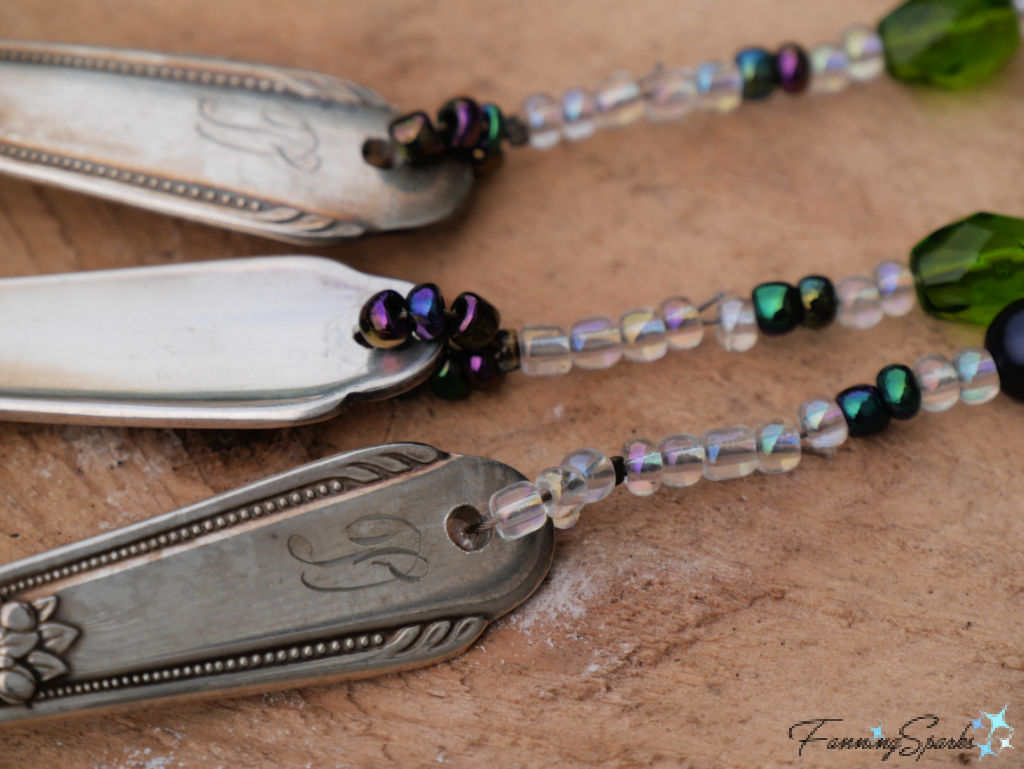
 Step 10 – Prepare Bottom Weight Hold the handle of the spoon with a set of flat-nose pliers. Then use your other hand to bend the spoon handle into an interesting shape. Work carefully to gradually bend the handle. Drill a hole in the handle of the spoon if not done previously. Drill hole at the tip of the spoon bowl.
Step 10 – Prepare Bottom Weight Hold the handle of the spoon with a set of flat-nose pliers. Then use your other hand to bend the spoon handle into an interesting shape. Work carefully to gradually bend the handle. Drill a hole in the handle of the spoon if not done previously. Drill hole at the tip of the spoon bowl. Cut an 8” piece of beading wire. String a small single bead onto the wire and center. Pull both ends of the wire through a teardrop bead. String 2-3 beads and a crimp bead onto the double wire. Then separate the 2 wires and prepare to attach to the tip of the spoon. Choose 7 small plain beads. Thread 4 small plain beads on one end of the wire. Thread the same end of the wire through the drilled hole in the spoon’s bowl, from front to back, add 3 more small plain beads and pull the wire back up through the crimp bead and the last 2-3 beads above the crimp bead. Pull the second end through the beads in a similar way. Lock in place, by squeezing the crimp bead with the crimping pliers. Trim off the ends of the wire with the cutting pliers.
Cut an 8” piece of beading wire. String a small single bead onto the wire and center. Pull both ends of the wire through a teardrop bead. String 2-3 beads and a crimp bead onto the double wire. Then separate the 2 wires and prepare to attach to the tip of the spoon. Choose 7 small plain beads. Thread 4 small plain beads on one end of the wire. Thread the same end of the wire through the drilled hole in the spoon’s bowl, from front to back, add 3 more small plain beads and pull the wire back up through the crimp bead and the last 2-3 beads above the crimp bead. Pull the second end through the beads in a similar way. Lock in place, by squeezing the crimp bead with the crimping pliers. Trim off the ends of the wire with the cutting pliers.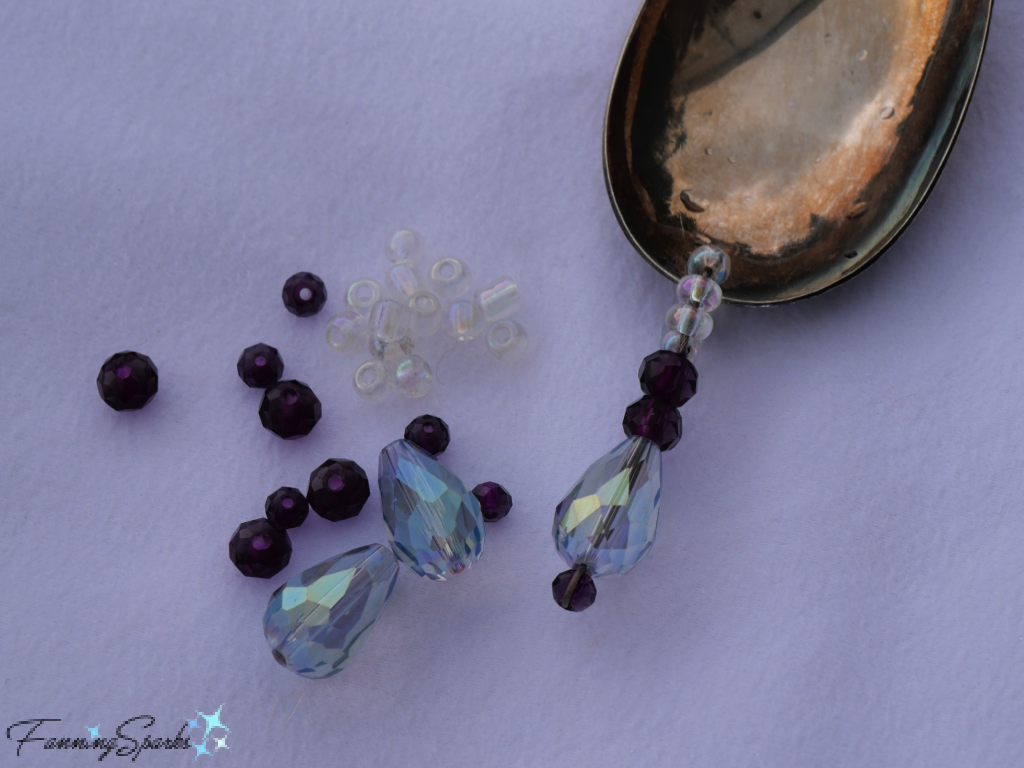 Step 11 – Attach Bottom Weight Prepare to attach the bottom weight to the fork. Drill a hole in the fork just above the top of the tines, if not done previously.
Step 11 – Attach Bottom Weight Prepare to attach the bottom weight to the fork. Drill a hole in the fork just above the top of the tines, if not done previously. Step 12 – Add Beads to Creamer Spout If using a creamer, prepare to string beads for the creamer’s spout. Cut 3 pieces of beading wire, approximately 6” long. Begin each wire with a teardrop bead using the same technique as described in Step 10 Prepare Bottom Weight. String beads onto the beading wire in your desired pattern. Hold the beaded sections in place on the spout to judge the final length. The beaded sections shown below are 3.5”, 3” and 2.5”. The objective is to create a graceful arch simulating streams of water pouring from the spout. When satisfied with the beaded sections, prepare to attach them to the creamer’s spout.
Step 12 – Add Beads to Creamer Spout If using a creamer, prepare to string beads for the creamer’s spout. Cut 3 pieces of beading wire, approximately 6” long. Begin each wire with a teardrop bead using the same technique as described in Step 10 Prepare Bottom Weight. String beads onto the beading wire in your desired pattern. Hold the beaded sections in place on the spout to judge the final length. The beaded sections shown below are 3.5”, 3” and 2.5”. The objective is to create a graceful arch simulating streams of water pouring from the spout. When satisfied with the beaded sections, prepare to attach them to the creamer’s spout.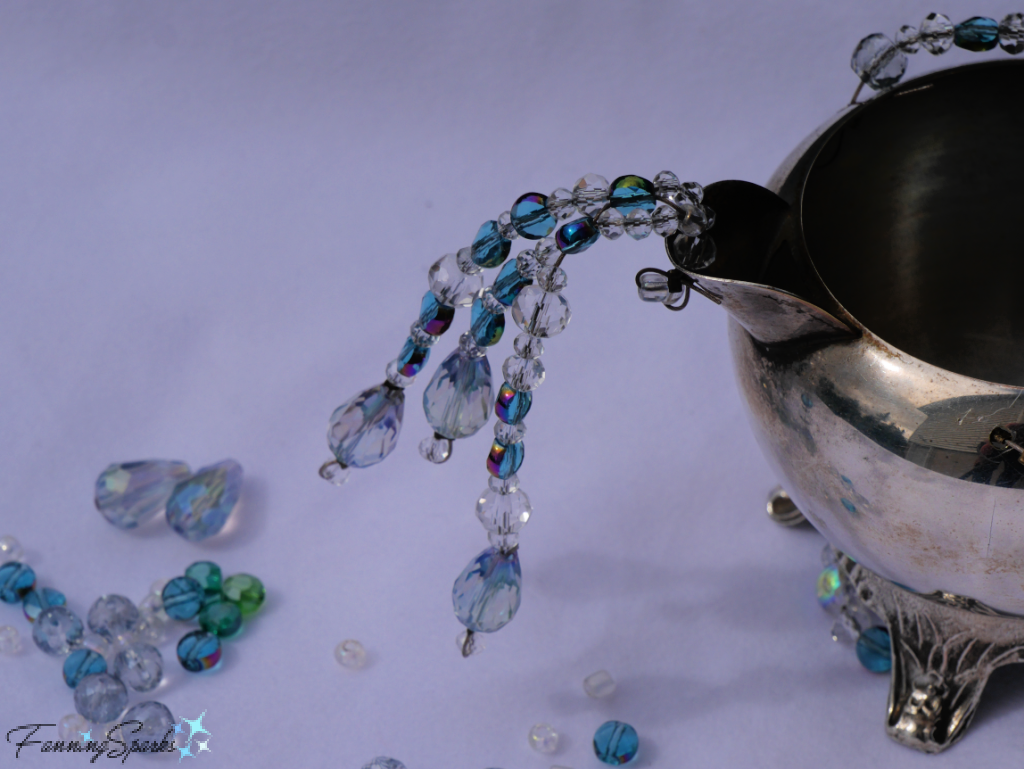 Step 13 – Hang and Enjoy! Get ready to enjoy the sparkling lights and sweet sounds of your new Old Silver Wind Chimes!
Step 13 – Hang and Enjoy! Get ready to enjoy the sparkling lights and sweet sounds of your new Old Silver Wind Chimes!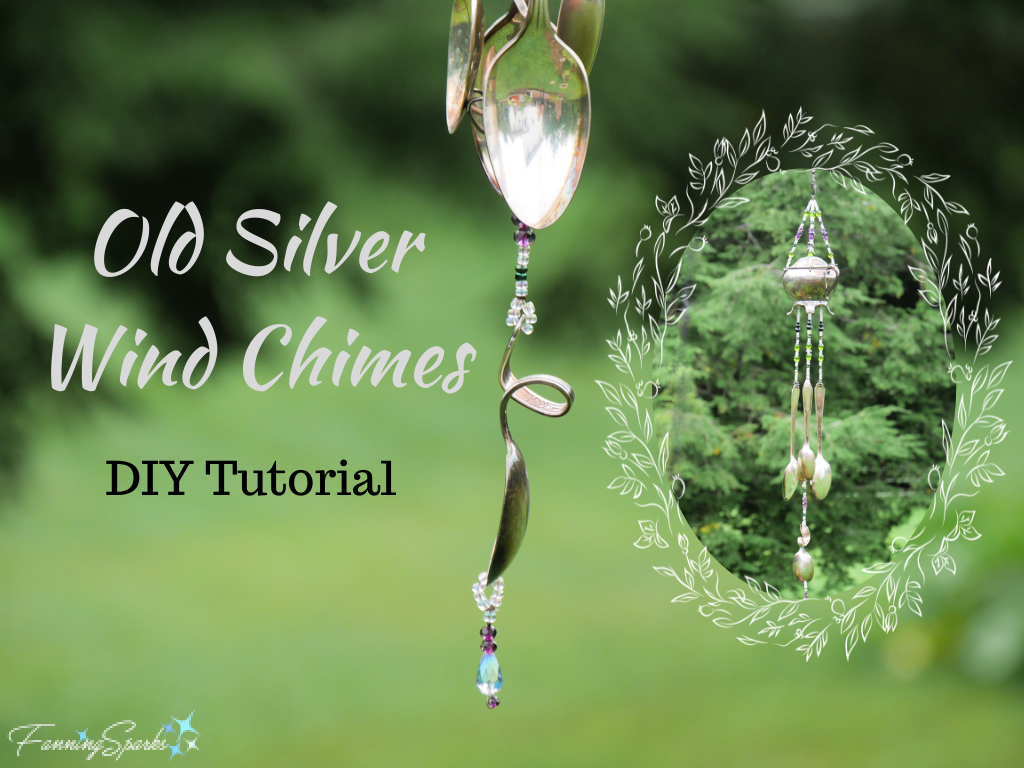 Special thanks to Marian, my sister, for crafting along with me on this project. She gets full credit for the beautiful creamer wind chimes shown in this post.
Special thanks to Marian, my sister, for crafting along with me on this project. She gets full credit for the beautiful creamer wind chimes shown in this post.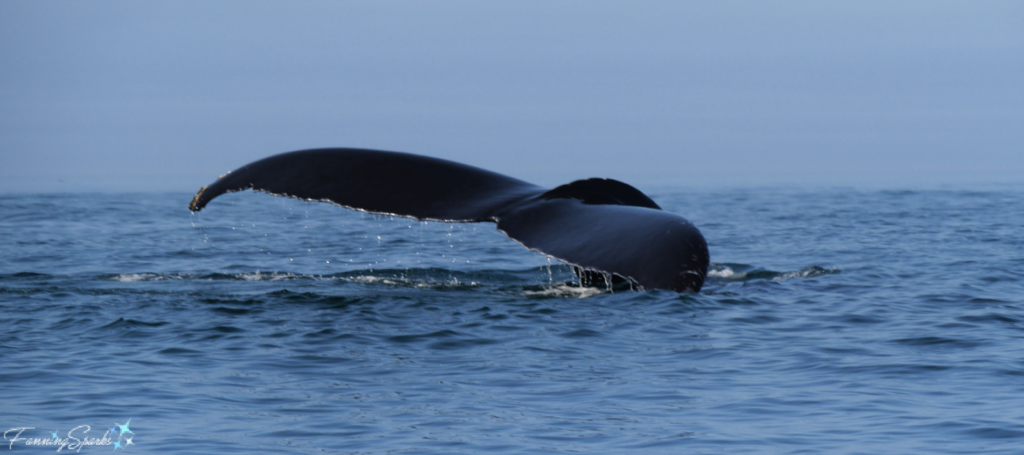
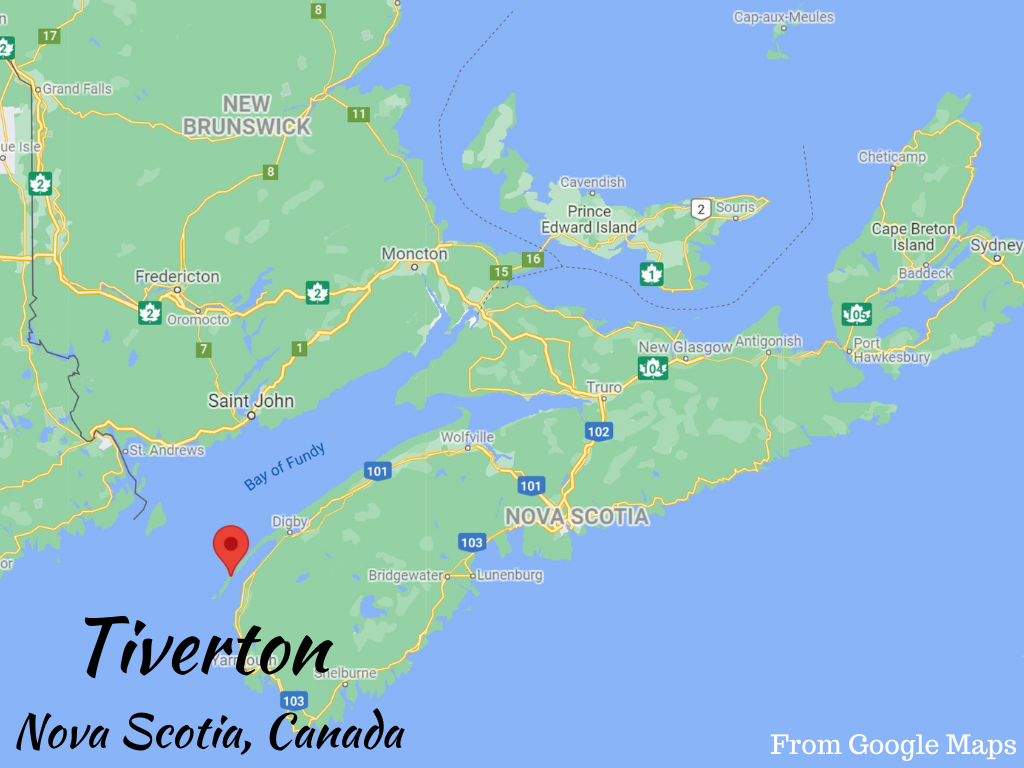
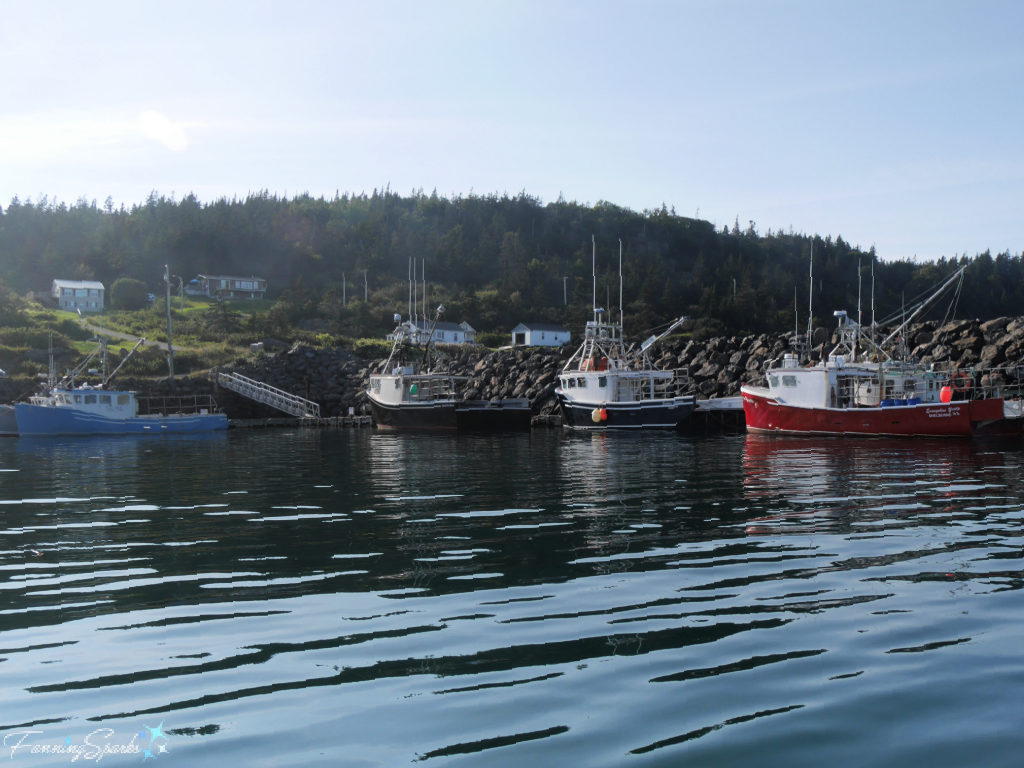

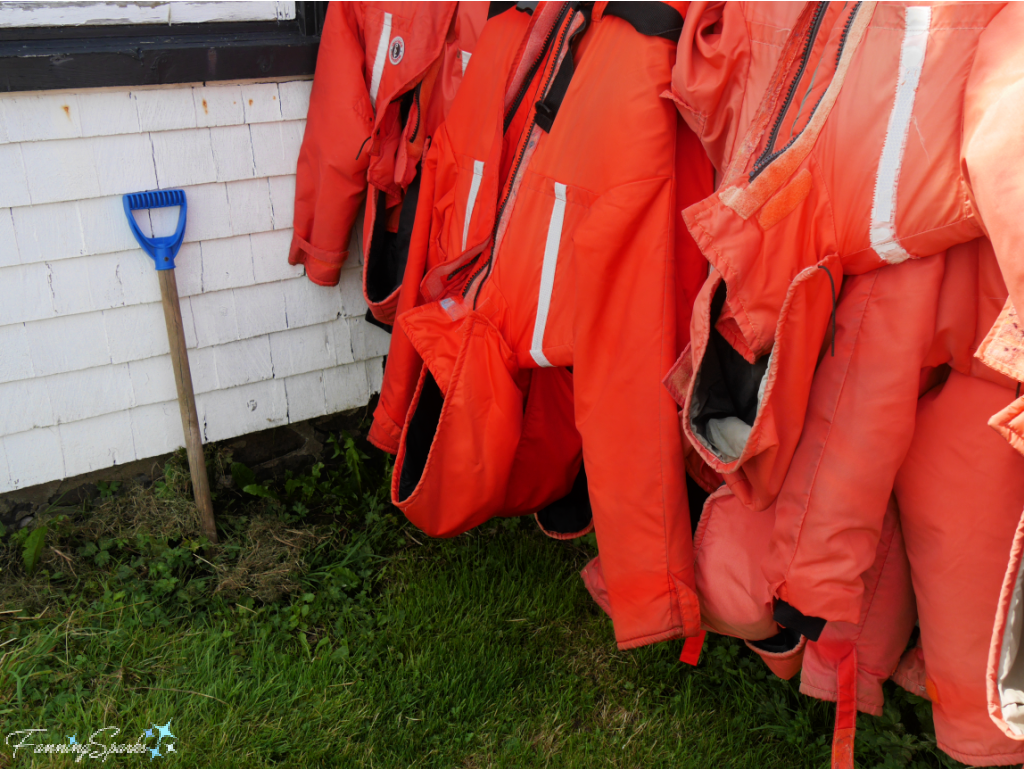
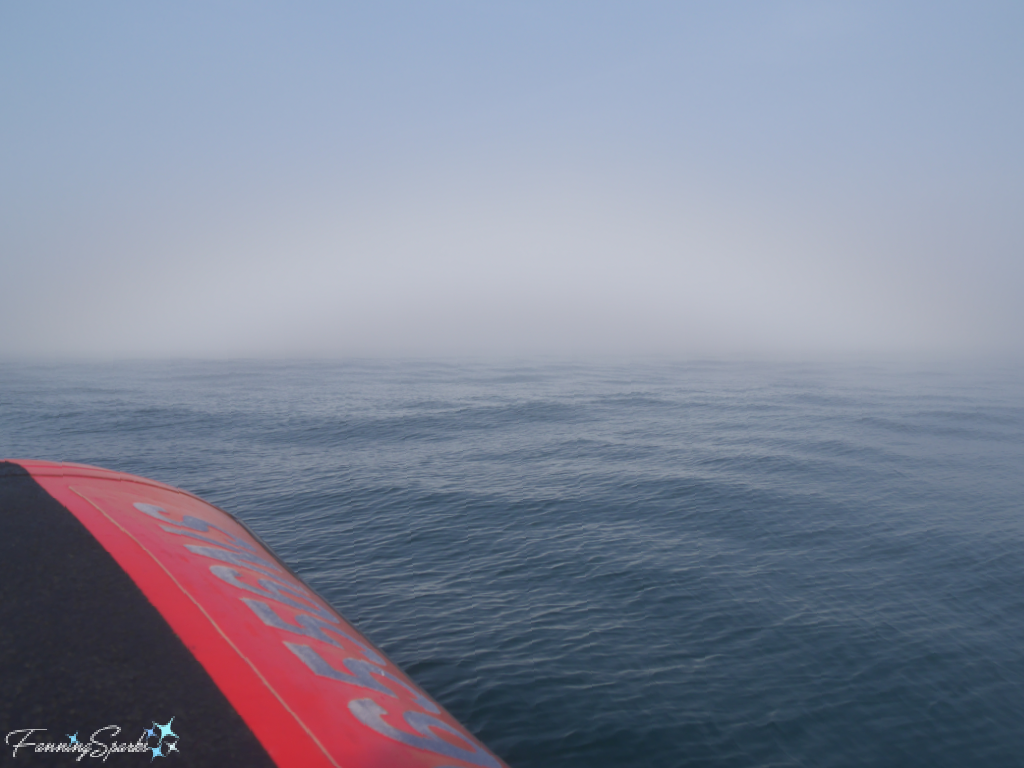
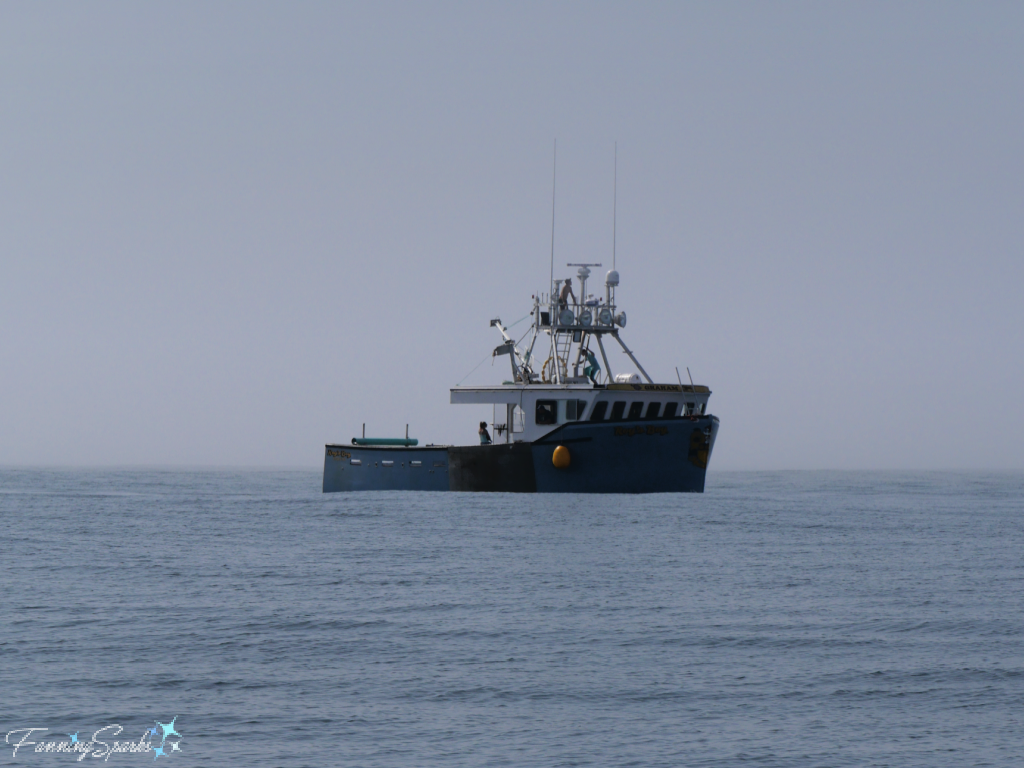 And then they came! A humpback whale surfaced off in the distance!
And then they came! A humpback whale surfaced off in the distance!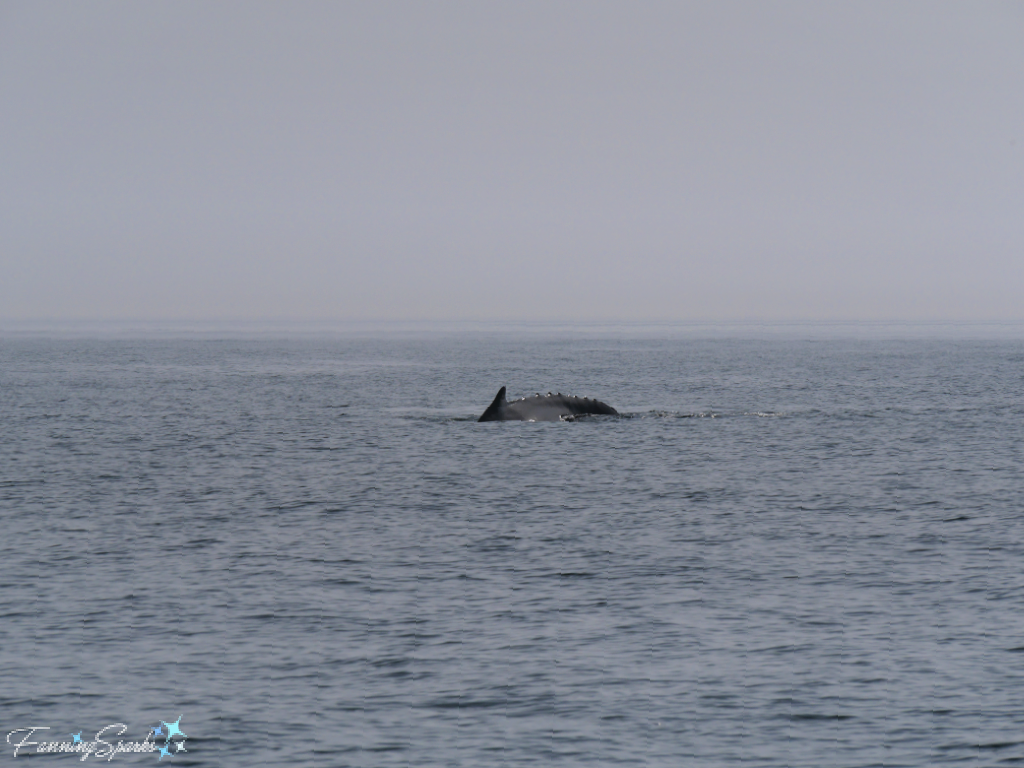
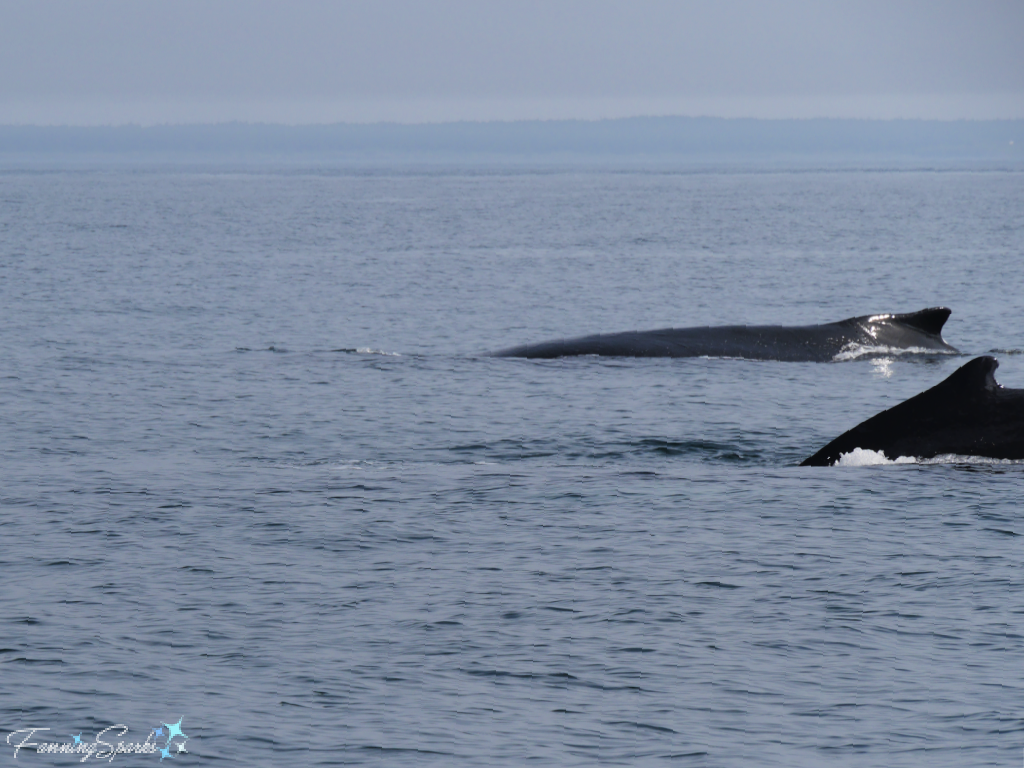
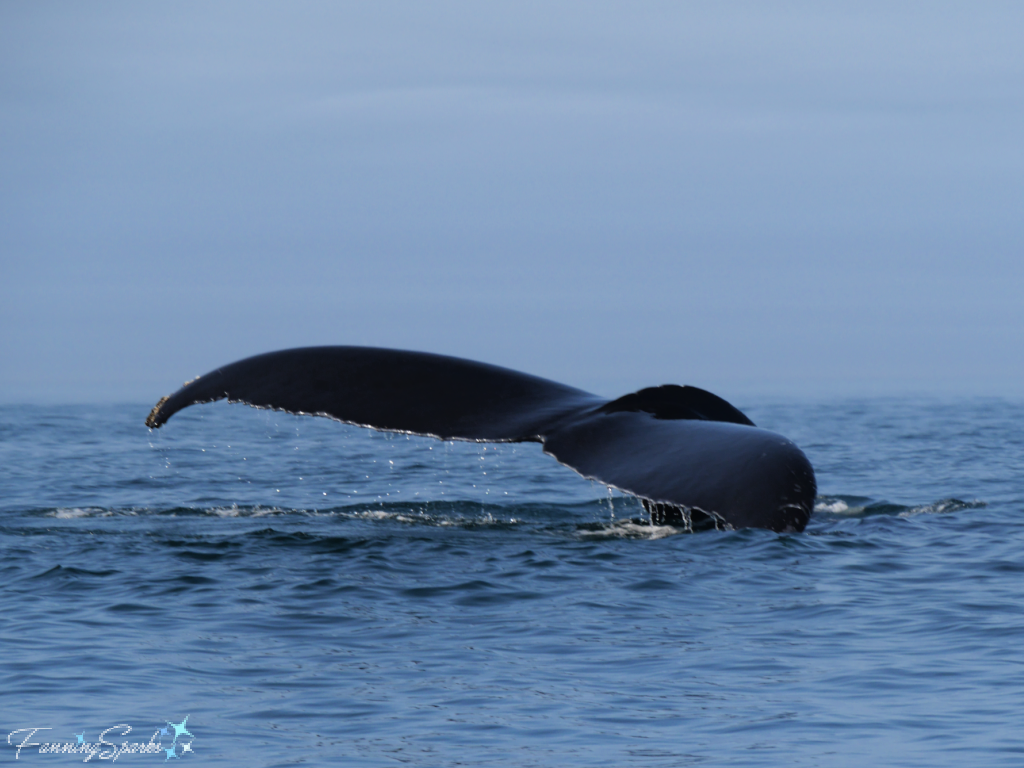
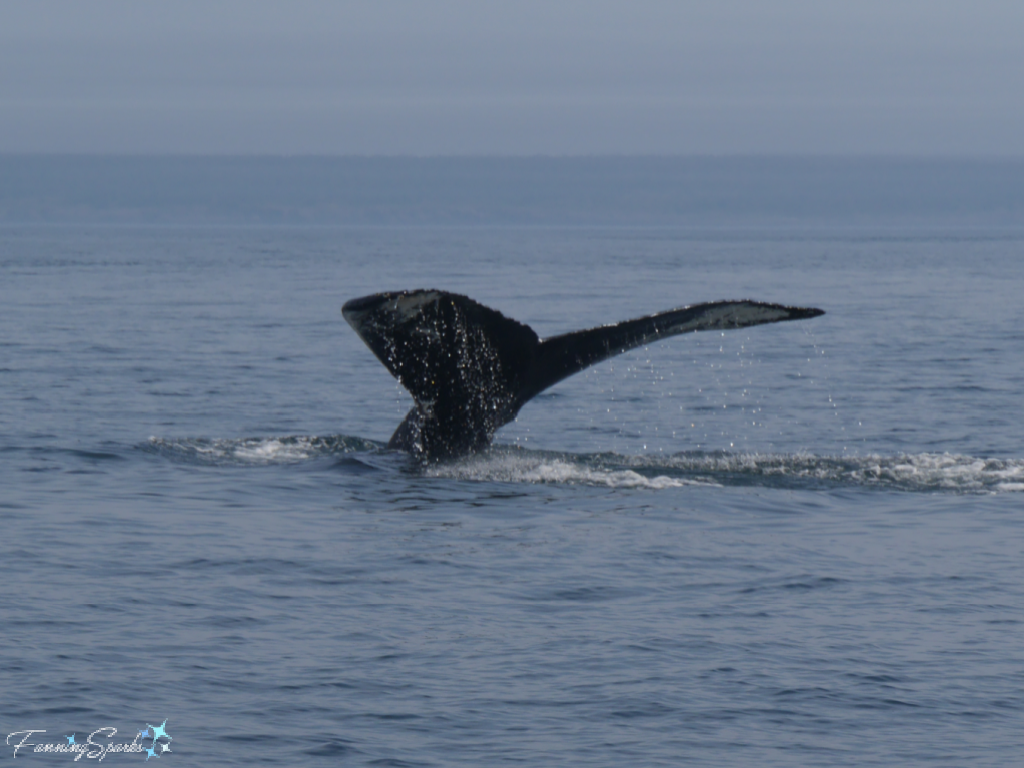
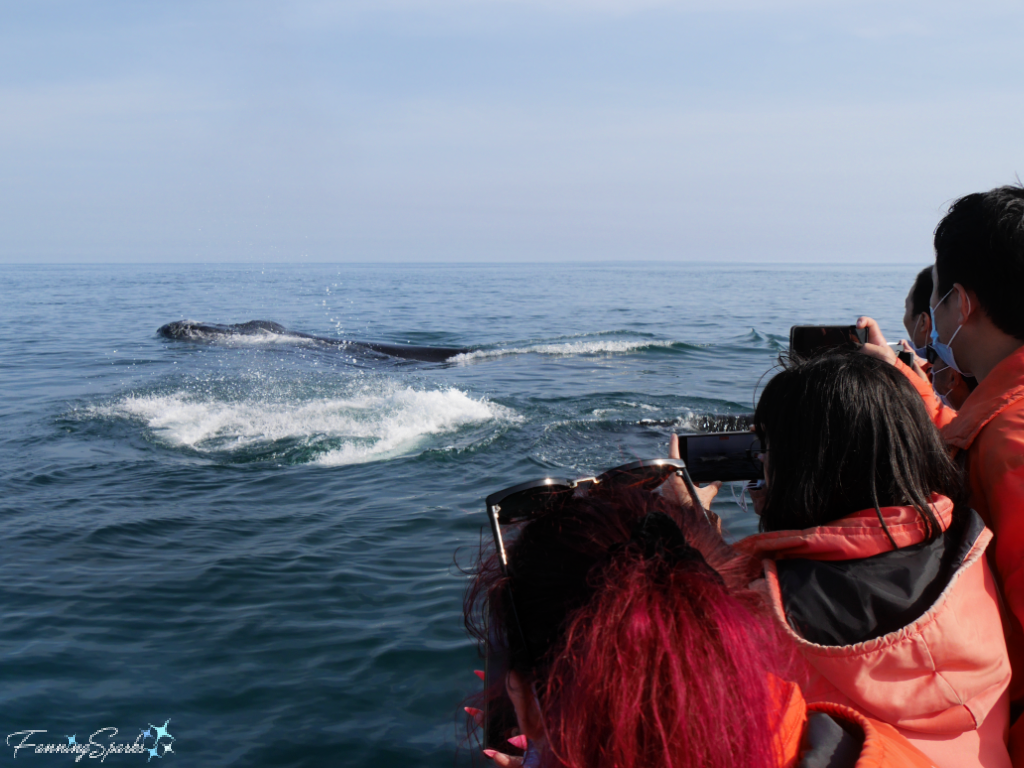
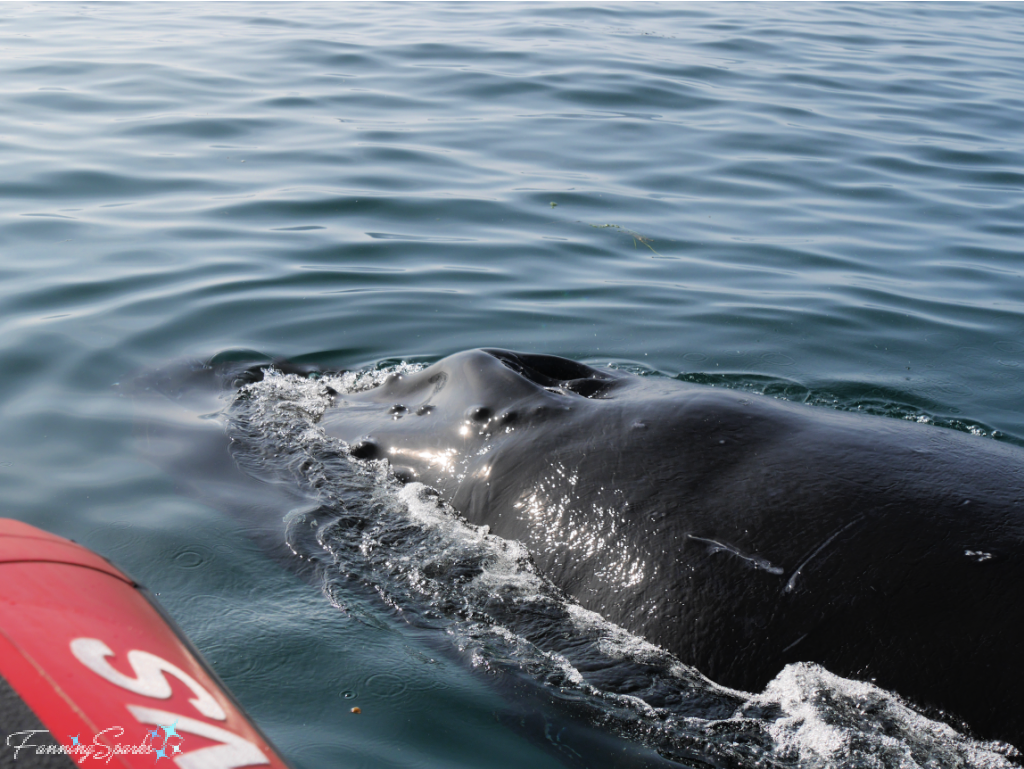
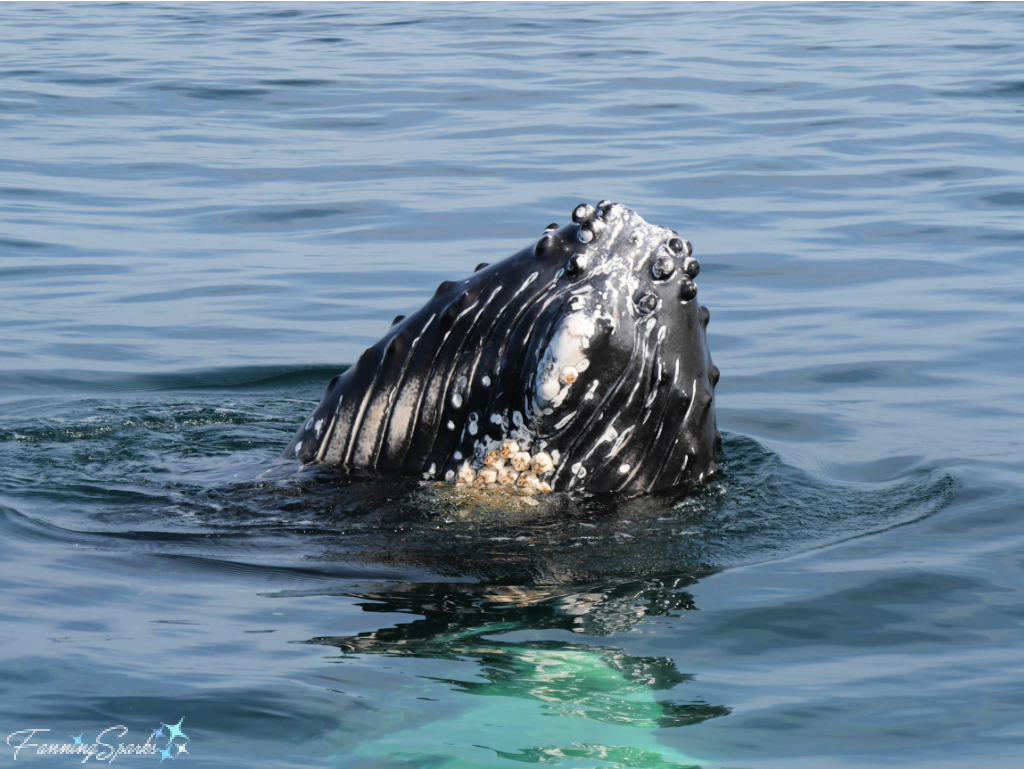

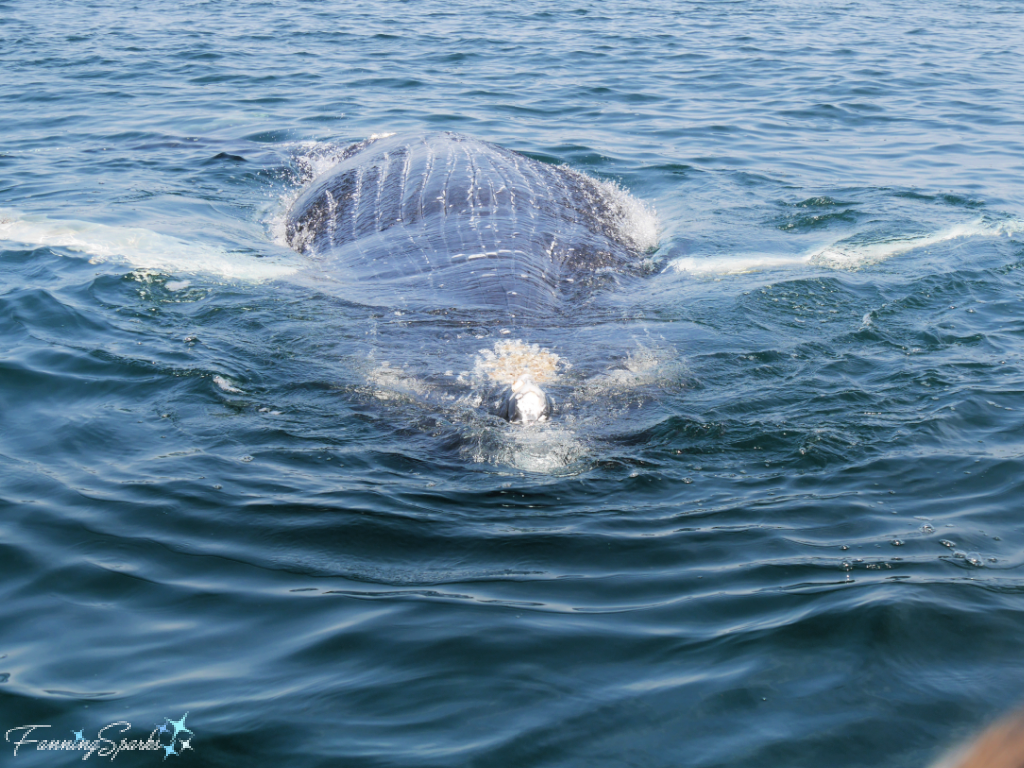 We also witnessed lots of flippering or flipper slapping. NOAA says “Humpback whales are the most famous flipper slapper, as they possess the longest flippers of all cetaceans (around 1/3 of their body size). … A cetacean at the surface rolls onto its side, raises a flipper out of the water, and then hits the surface with it. The whale may do it once or several times in a row.” Check out this flipper action!
We also witnessed lots of flippering or flipper slapping. NOAA says “Humpback whales are the most famous flipper slapper, as they possess the longest flippers of all cetaceans (around 1/3 of their body size). … A cetacean at the surface rolls onto its side, raises a flipper out of the water, and then hits the surface with it. The whale may do it once or several times in a row.” Check out this flipper action!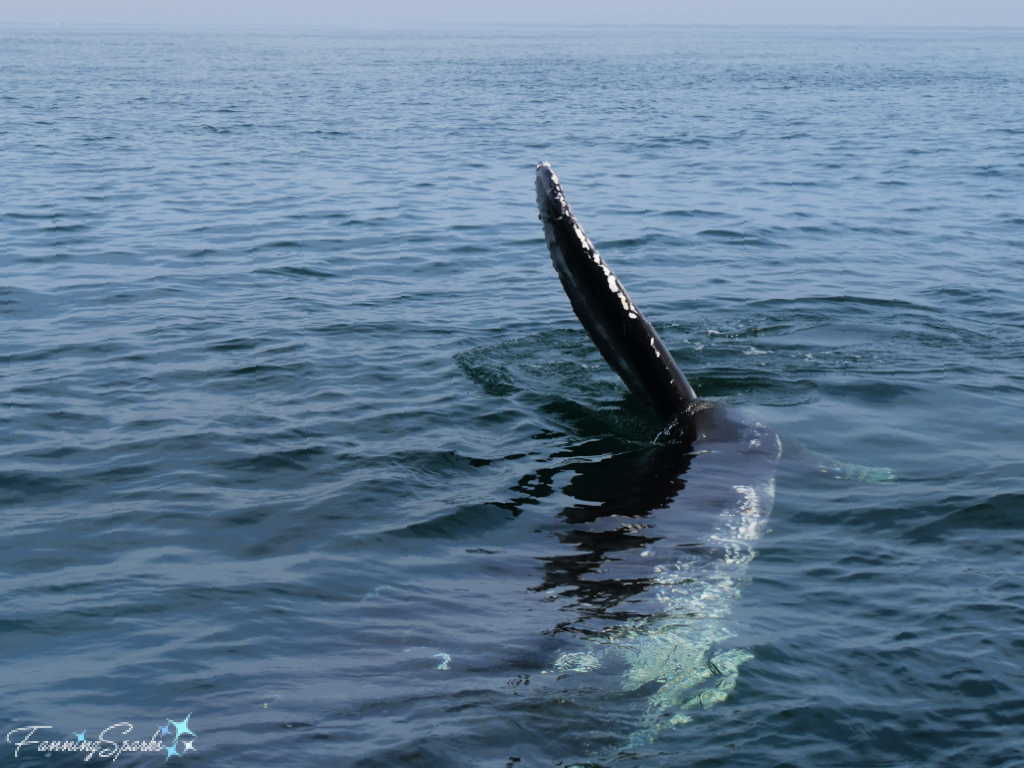
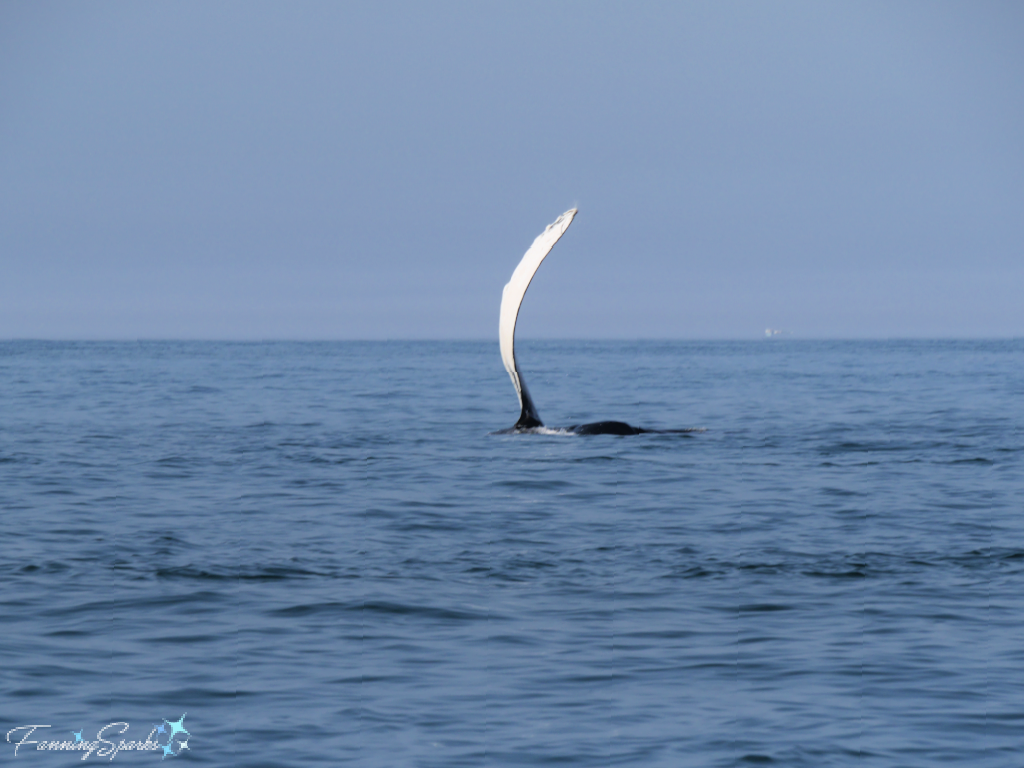
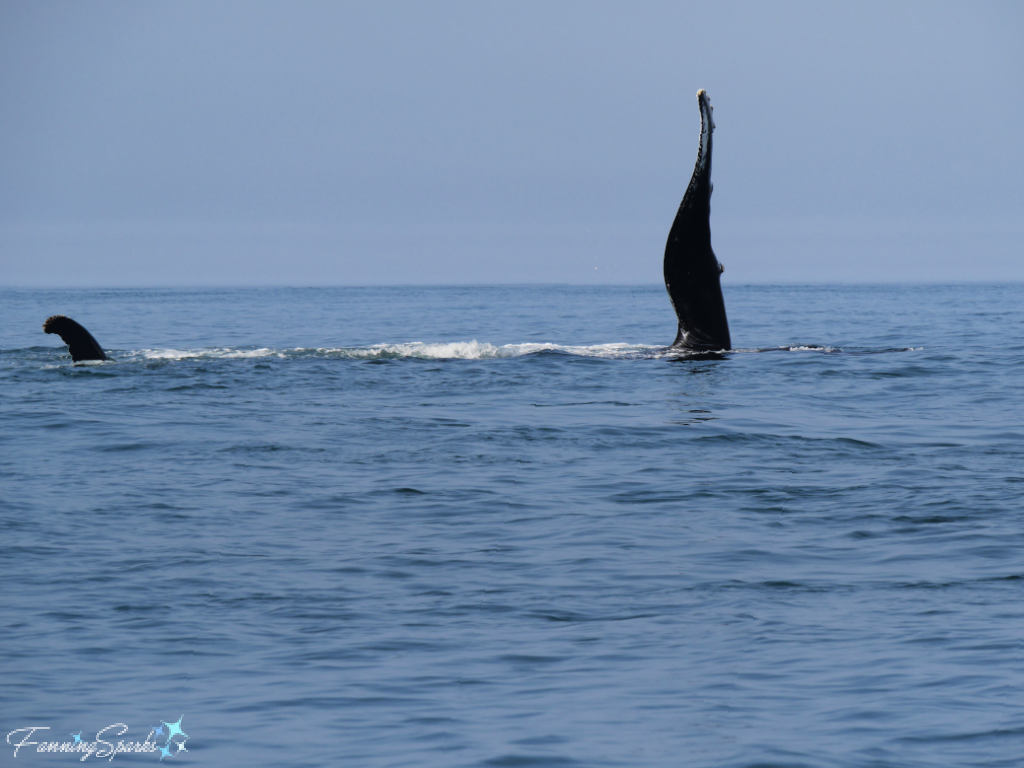
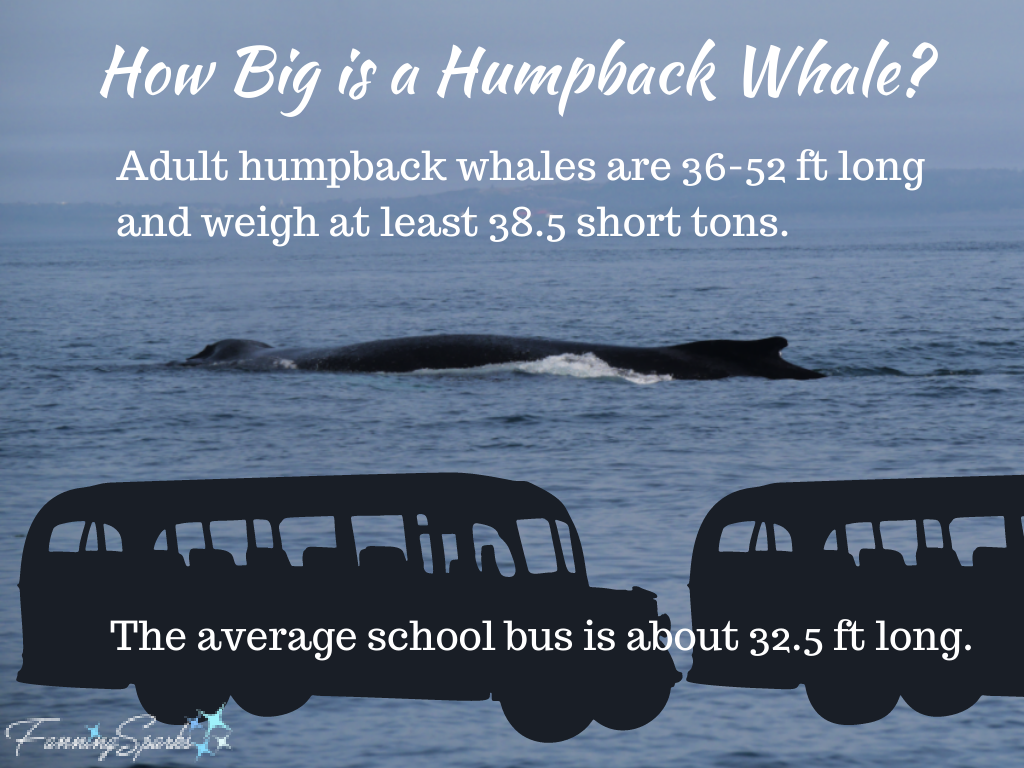
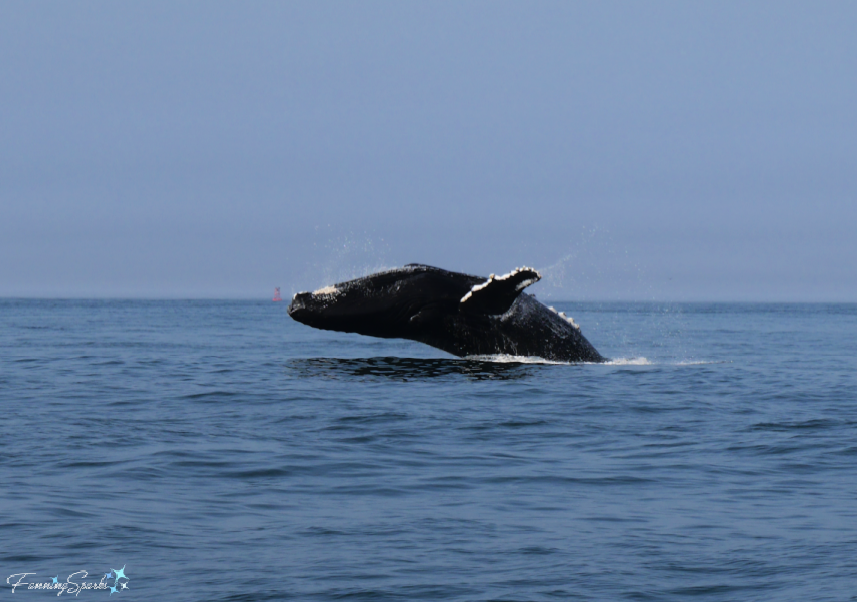
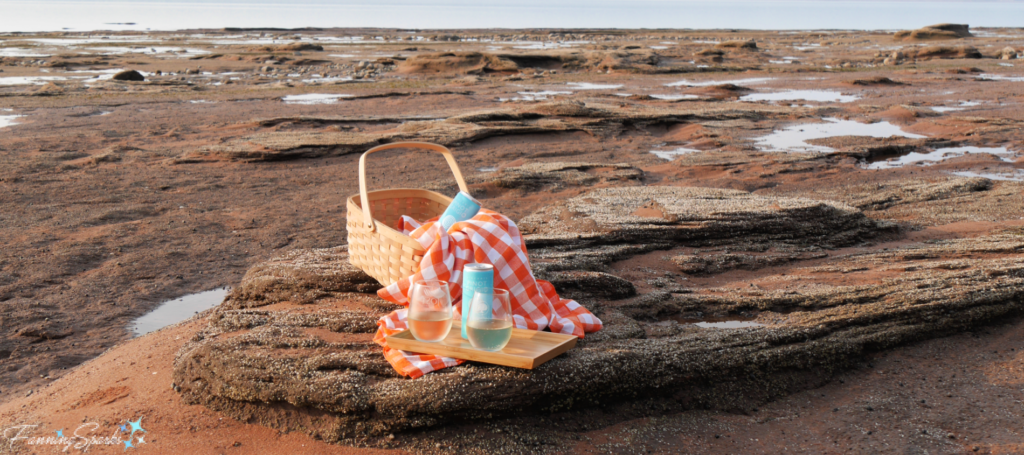
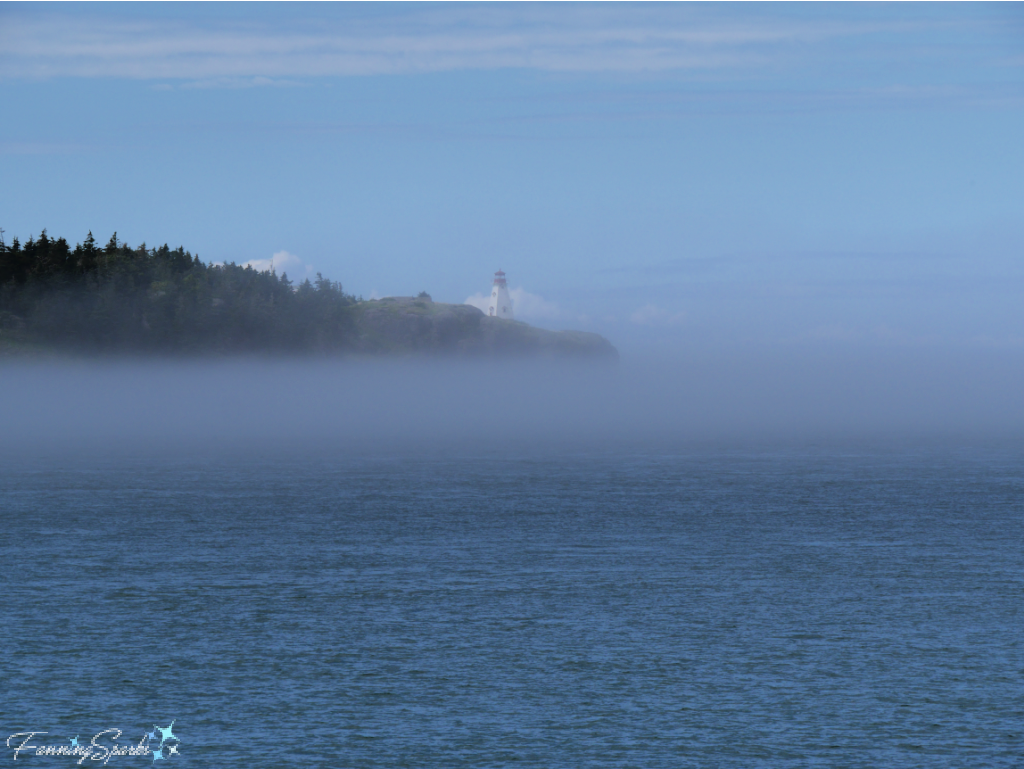 Wikipedia puts it this way “the tides that flow through the channel are very powerful. In one 12-hour tidal cycle, about 100 billion tonnes of water flows in and out of the bay, which is twice as much as the combined total flow of all the rivers of the world over the same period. They are as powerful as 8,000 train engines or 25 million horses.” Imagine—25 million horses!
Wikipedia puts it this way “the tides that flow through the channel are very powerful. In one 12-hour tidal cycle, about 100 billion tonnes of water flows in and out of the bay, which is twice as much as the combined total flow of all the rivers of the world over the same period. They are as powerful as 8,000 train engines or 25 million horses.” Imagine—25 million horses!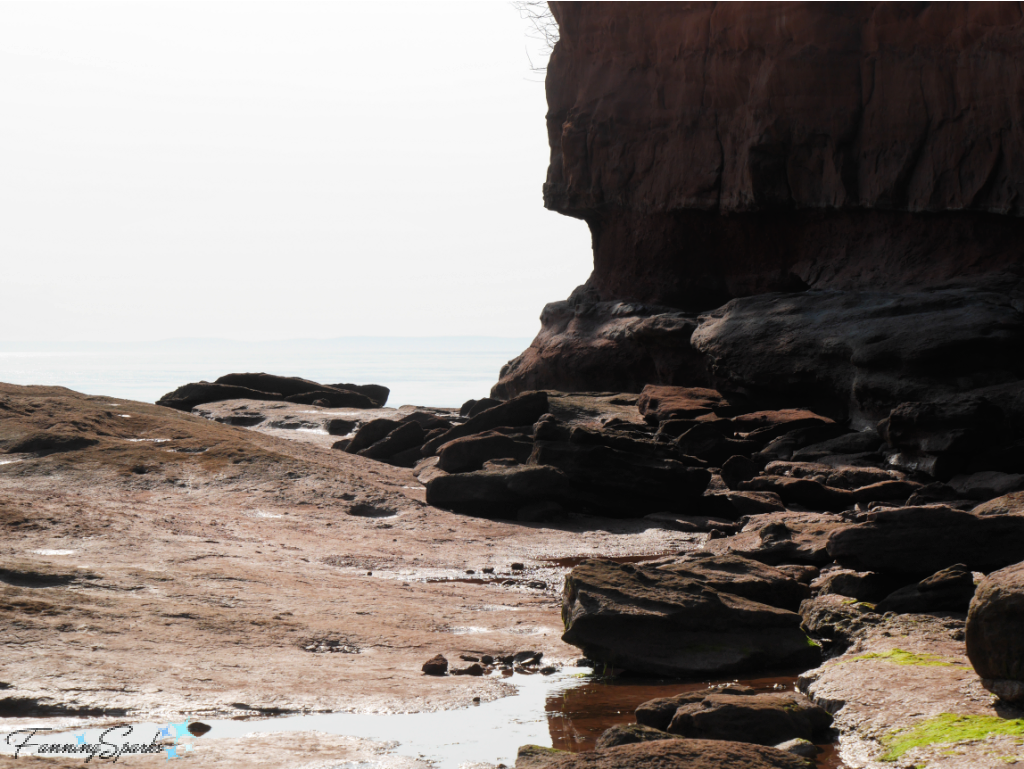

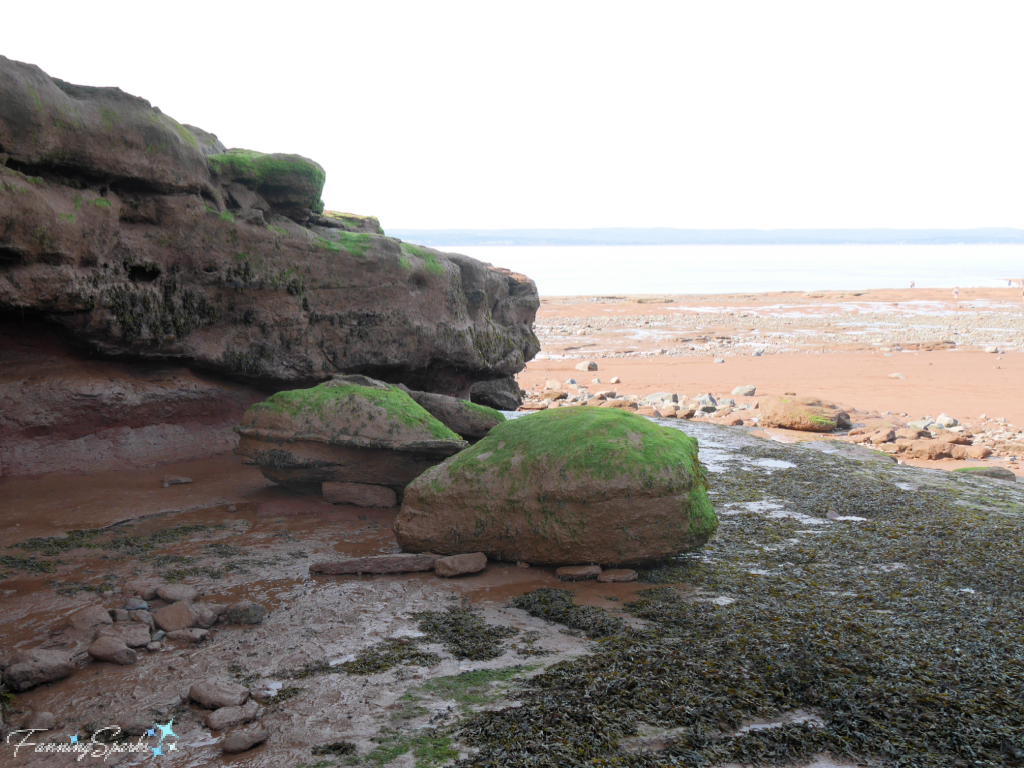
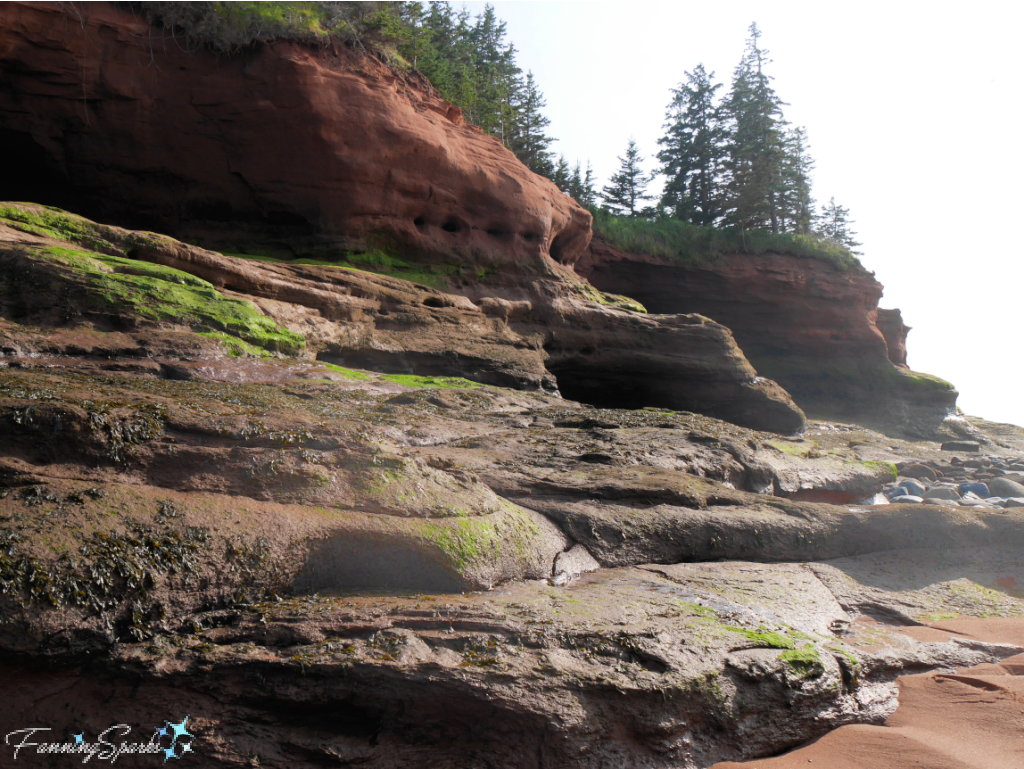
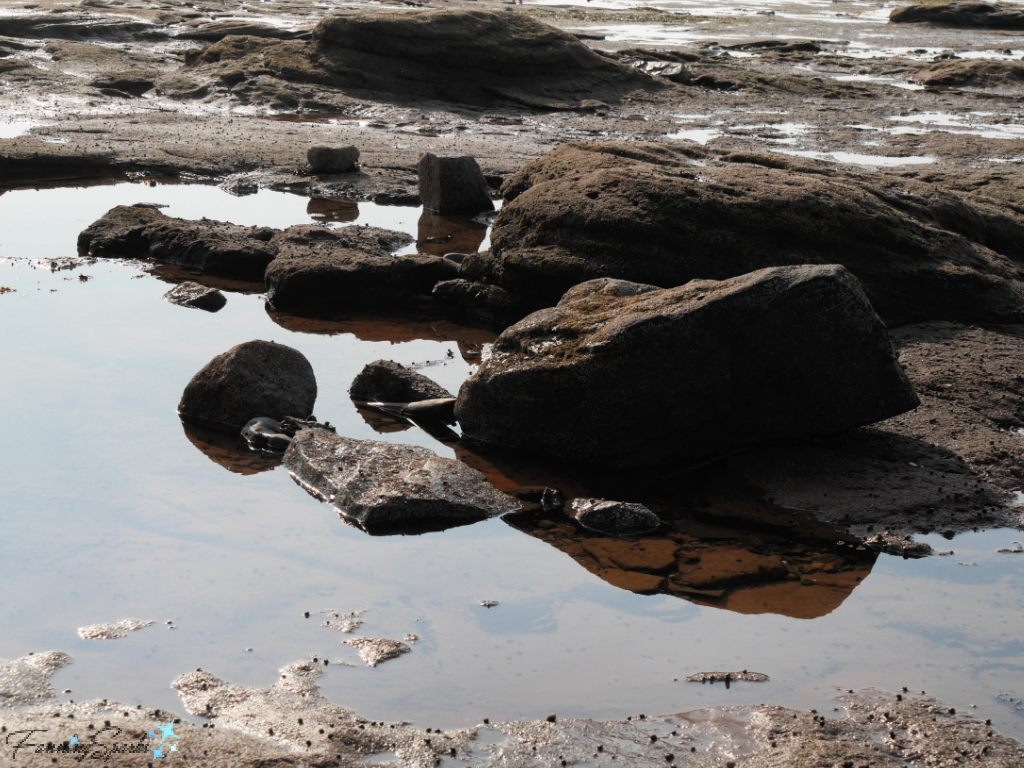
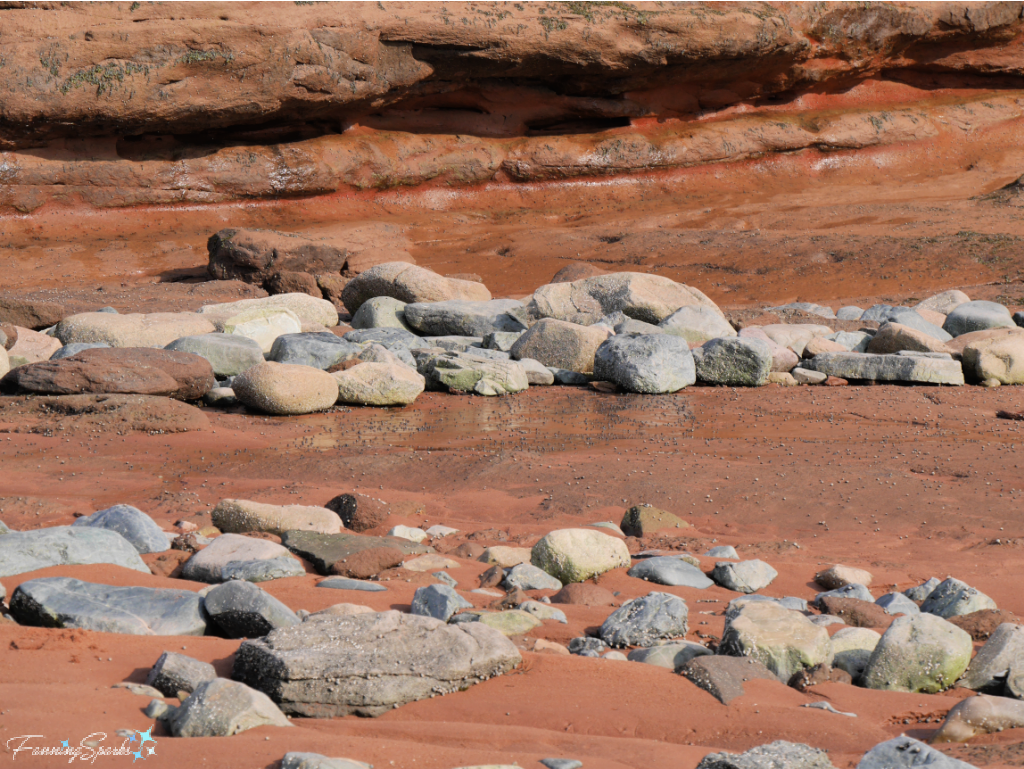
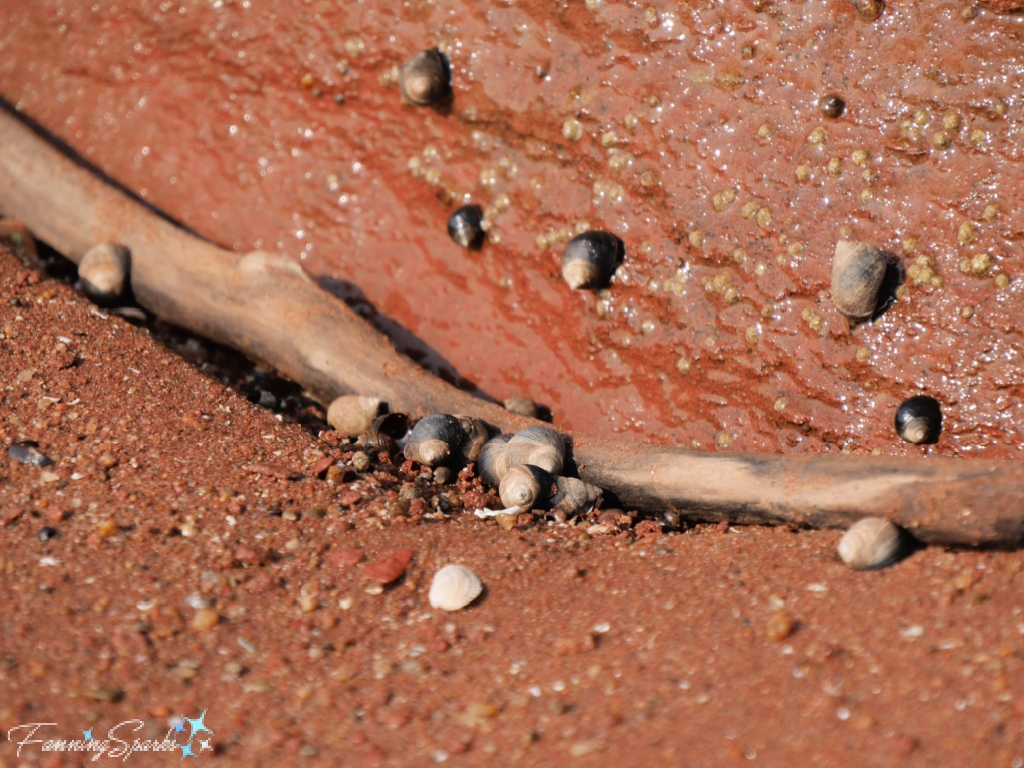

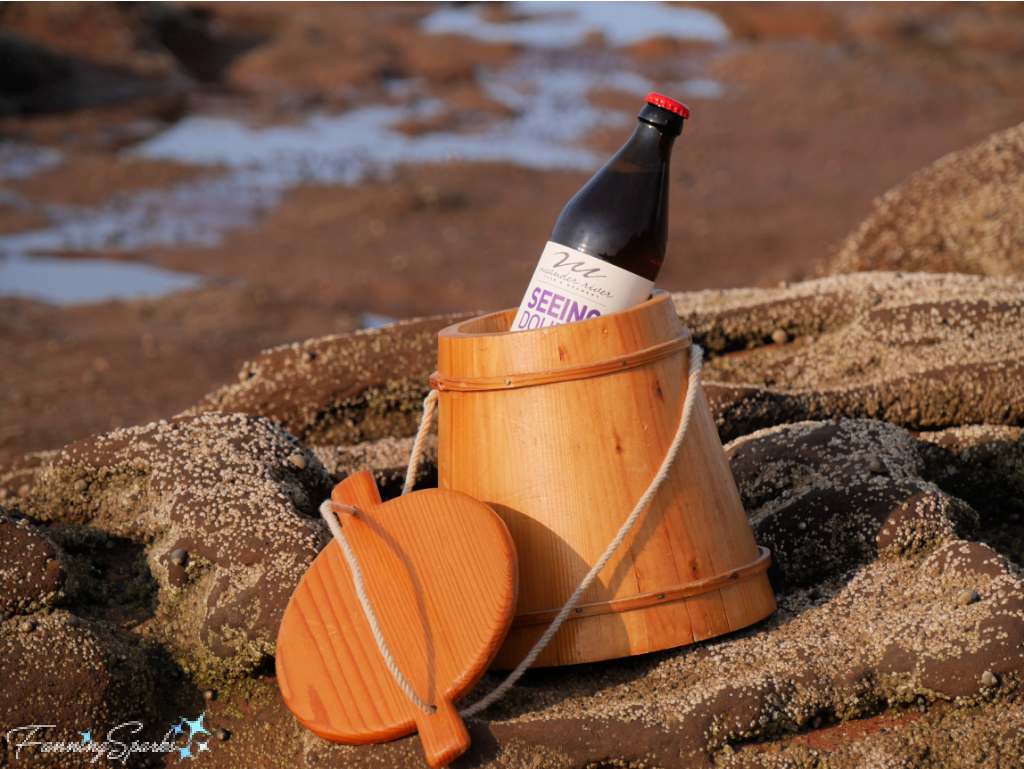 Later in the day, we enjoyed with a nice glass of white wine…
Later in the day, we enjoyed with a nice glass of white wine…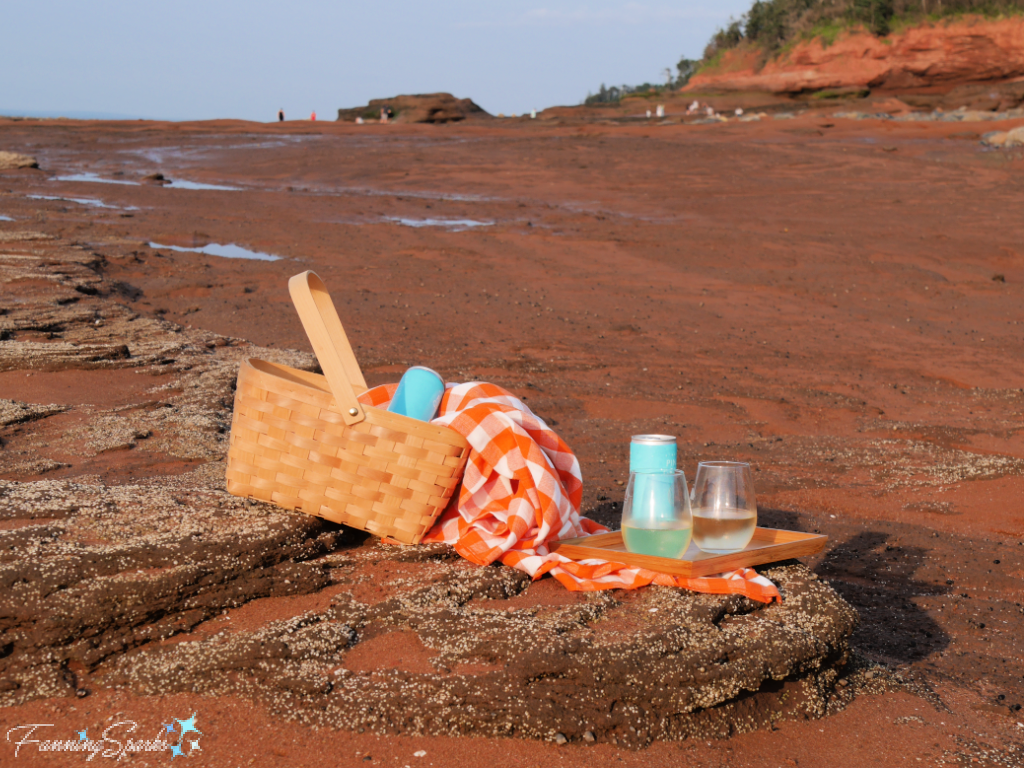 …followed by cheese, crackers and fresh fruit.
…followed by cheese, crackers and fresh fruit. It was a simple meal in an extraordinary setting!
It was a simple meal in an extraordinary setting!
